Text
Isn’t Everything Autobiographical?: Ethan Hawke In Nine Films And A Novel by Marya Gates
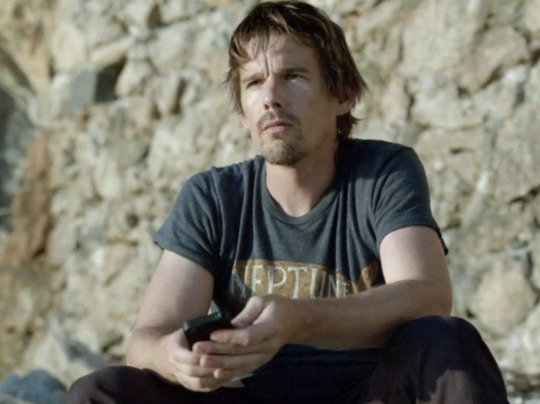
When asked during his first ever on-camera interview if he’d like to continue acting, a young Ethan Hawke replied, “I don’t know if it’s going to be there, but I’d like to do it.” He then gives a guileless shrug of relief as the interview ends, wiping imaginary sweat off his brow. The simultaneous fusion of his nervous energy and poised body language will be familiar to those who’ve seen later interviews with the actor. The practicality and wisdom he exudes at such a young age would prove to be a through-line of his nearly 40-year career. In an interview many decades later, he told Ideas Tap that many children get into acting because they’re seeking attention, but those who find their calling in the craft discover that a “desire to communicate and to share and to be a part of something bigger than yourself takes over, a certain craftsmanship—and that will bring you a lot of pleasure.”
Through Hawke’s dedication to his craft, we’ve also seen his maturation as a person unfold on screen. Though none of his roles are traditionally what we think of when we think of autobiography, many of Hawke’s roles, as well as his work as a writer, suggest a sort of fictional autobiographical lineage. While these highlights in his career are not strictly autofiction, one can trace Hawke’s Künstlerromanesque trajectory from his childhood ambitions to his life now as a man dedicated to art, not greatness.
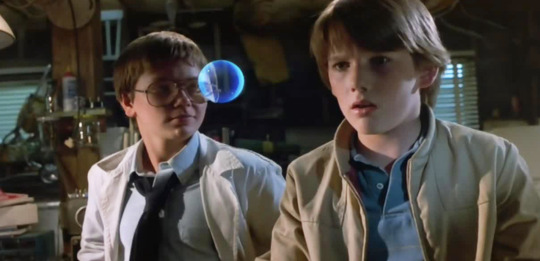
Hawke’s first two films, Joe Dante’s sci-fi fantasy Explorers with River Phoenix and Peter Weir’s Dead Poets Society with Robin Williams, set the tone for a diverse filmography filled with popcorn fare and indie cinema in equal measure, but they also served as touchstones in his development as person drawn to self-expression through art. In an interview with Rolling Stone’s David Fear, Hawke spoke about the impact of these two films on him as an actor. When River Phoenix, his friend and co-star in Explorers, had his life cut short by a drug overdose, it hit Hawke personally. He saw from the inside what Hollywood was capable of doing to young people with talent. Hawke never attempted to break out, to become a star. He did the work he loved and kept the wild Hollywood lifestyle mostly at arm’s length.
Like any good film of this genre, Dead Poets Society is not just a film about characters coming of age, but a film that guides the viewer as well, if they are open to its message. Hawke’s performance as repressed schoolboy Todd in the film is mostly internal, all reactions and penetrating glances, rather than grandiose movements or speeches. Through his nervy body language and searching gaze, you can feel both how closed off to the world Todd is, and yet how willing he is to let change in. Hawke has said working on this film taught him that art has a real power, that it can affect people deeply. This ethos permeates many of the characters Hawke has inhabited in his career.
In Dead Poets Society, Mr. Keating (Robin Williams) tells the boys that we read and write poetry because the human race is full of passion. He insists, “poetry, beauty, romance, love—these are what we stay alive for.” Hawke gave a 2020 TEDTalk entitled Give Yourself Permission To Be Creative, in which he explored what it means to be creative, pushing viewers to ask themselves if they think human creativity matters. In response to his own question, he said “Most people don’t spend a lot of time thinking about poetry, right? They have a life to live and they’re not really that concerned with Allen Ginsberg’s poems, or anybody’s poems, until their father dies, they go to a funeral, you lose a child, somebody breaks your heart, they don’t love you anymore, and all of the sudden you’re desperate for making sense out of this life and ‘has anyone ever felt this bad before? How did they come out of this cloud?’ Or the inverse, something great. You meet somebody and your heart explodes. You love them so much, you can’t even see straight, you know, you’re dizzy. ‘Did anybody feel like this before? What is happening to me?’ And that’s when art is not a luxury. It’s actually sustenance. We need it.”

Throughout many of his roles post-Dead Poets Society, Hawke explores the nature of creativity through his embodiment of writers and musicians. Often these characters are searching for a greater purpose through art, while ultimately finding that human connection is the key. Without that human connection, their art is nothing.
We see the first germ of this attraction to portray creative people on screen with his performance as Troy Dyer in Reality Bites. As Troy Dyer, a philosophy-spouting college dropout turned grunge-band frontman in Reality Bites, Hawke was posited as a Gen-X hero. His inability to keep a job and his musician lifestyle were held in stark contrast to Ben Stiller’s yuppie TV exec Michael Grates. However in true slacker spirit, he isn’t actually committed to the art of music, often missing rehearsals, as Lelaina points out. Troy even uses his music at one point to humiliate Lelaina, dedicating a rendition of “Add It Up” by Violent Femmes to her. The lyrics add insult to injury as earlier that day he snuck out of her room after the two had sex for the first time. Troy’s lack of commitment to his music matches his inability to commit to those relationships in his life that mean the most to him.

Reality Bites is also where he first positioned himself as one of the great orators of modern cinema.” Take this early monologue, in which he outlines his beliefs to Winona Ryder’s would-be documentarian Lelaina Pierce: “There’s no point to any of this. It’s all just a random lottery of meaningless tragedy and a series of near escapes. So I take pleasure in the details. You know, a quarter-pounder with cheese, those are good, the sky about ten minutes before it starts to rain, the moment where your laughter become a cackle, and I, I sit back and I smoke my Camel Straights and I ride my own melt.”
Hawke brings the same intense gaze to this performance as he did to Dead Poets Society, as if his eyes could swallow the world whole. But where Todd’s body language was walled-off, Troy’s is loud and boisterous. He’s quick to see the faults of those around him, but also the good things the world has to offer. It’s a pretty honest depiction of how self-centered your early-20s tend to be, where riding your own melt seems like the best option. As the film progresses, Troy lets others in, saying to Lelaina, “This is all we need. A couple of smokes, a cup of coffee, and a little bit of conversation. You, me and five bucks.”
Like the character, Hawke was in his early twenties and as he would continue to philosophize through other characters, they would age along with him and so would their takes on the world. If you only engage with anyone at one phase in their life, you do a disservice to the arc of human existence. We have the ability to grow and change as we learn who we are and become less self-centered. In Hawke’s career, there’s no better example of this than his multi-film turn as Jesse in the Before Trilogy. While the creation of Jesse and Celine are credited to writer-director Richard Linklater and his writing partner Kim Krizan, much of what made it to the screen even as early as the first film were filtered through the life experiences of Hawke and his co-star Julie Delpy.
In a Q&A with Jess Walter promoting his most recent novel A Bright Ray of Darkness, Hawke said that Jesse from the Before Trilogy is like an alt-universe version of himself, and through them we can see the self-awareness and curiosity present in the early ET interview grow into the the kind of man Keating from Dead Poets Society urged his students to become.

In Before Sunrise, Hawke’s Jesse is roughly the same age as Troy in Reality Bites, and as such is still in a narcissistic phase of his life. After spending several romantic hours with Celine in Vienna, the two share their thoughts about relationships. Celine says she wants to be her own person, but that she also desperately wants to love and be loved. Jesse shares this monologue, “Sometimes I dream about being a good father and a good husband. And sometimes it feels really close. But then other times it seems silly, like it would ruin my whole life. And it’s not just a fear of commitment or that I’m incapable of caring or loving because. . . I can. It’s just that, if I’m totally honest with myself, I think I’d rather die knowing that I was really good at something. That I had excelled in some way than that I’d just been in a nice, caring relationship.”
The film ends without the audience knowing if Jesse and Celine ever see each other again. That initial shock is unfortunately now not quite as impactful if you are aware of the sequels. But I think it is an astute look at two people who meet when they are still discovering who they are. Still growing. Jesse, at least, is definitely not ready for any kind of commitment. Then of course, we find out in Before Sunset that he’s fumbled his way into marriage and fatherhood, and while he’s excelling at the latter, he’s failing at the former.
As in Reality Bites, Hawke explores the dynamics of band life again in Before Sunset, when Jesse recalls to Celine how he was in a band, but they were too obsessed with getting a deal to truly enjoy the process of making music. He says to her, “You know, it's all we talked about, it was all we thought about, getting bigger shows, and everything was just...focused on the future, all the time. And now, the band doesn't even exist anymore, right? And looking back at the... at the shows we did play, even rehearsing... You know, it was just so much fun! Now I'd be able to enjoy every minute of it.”
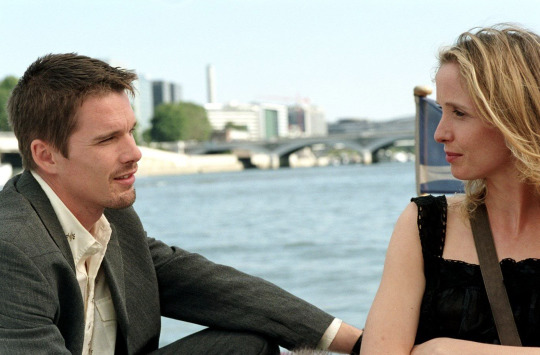
The filming of Before Sunset happened to coincide with the dissolution of Hawke’s first marriage. And while these films are not autobiographical, everyone involved have stated that they’ve added personal elements to their characters. They even poke fun at it in the opening scene when a journalist asks how autobiographical Jesse’s novel is. True to form, he responds with a monologue, “Well, I mean, isn’t everything autobiographical? I mean, we all see the world through our own tiny keyhole, right? I mean, I always think of Thomas Wolfe, you know. Have you ever seen that little one page note to reader in the front of Look Homeward, Angel, right? You know what I'm talking about? Anyway, he says that we are the sum of all the moments of our lives, and that, anybody who sits down to write is gonna use the clay of their own life, that you can’t avoid that.”
While Before Sunset was shot in 2003, released in 2004 and this monologue refers to the fictional book within the trilogy entitled This Time, Hawke would take this same approach more than a decade later with his novel A Bright Ray of Darkness.
In the novel, Hawke crafts a quasi-autobiographical story, using his experience in theater to work through the perspective he now has on his failed marriage to Uma Thurman. Much like Jesse in Before Sunset, Hawke is reluctant to call the book autobiographical, but the parallels to his own divorce are evident. And as Jesse paraphrased Wolfe, isn’t everything we do autobiographical? In the book, movie star William Harding has blown up his seemingly picture-perfect marriage with a pop star by having an affair while filming on location in South Africa. The book, structured in scenes and acts like a play, follows the aftermath as he navigates his impending divorce, his relationship with his small children, and his performance as Hotspur in a production of Henry IV on Broadway.
Throughout much of the novel, William looks back at the mistakes he made that led to the breakup of his marriage. He’s now in his 30s and has the clarity to see how selfish he was in his 20s. Hawke, however, was in his forties while writing the book. Through the layers of hindsight, you can feel how Hawke has processed not just the painful emotional growth spurt of his 20s, but also the way he can now mine the wisdom that comes from true reflection. Still, as steeped as the novel is in self-reflection, it does not claim to have all the answers. In fact, it offers William, as well as the readers, more questions to contemplate than it does answers.
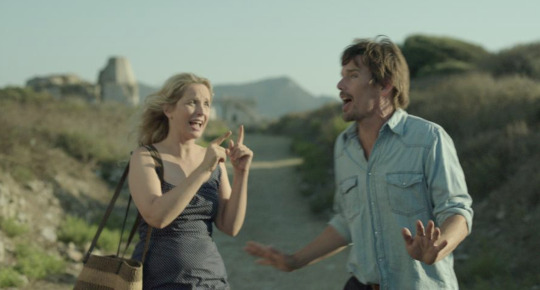
The wisdom to know that you will never quite understand everything is broached by Hawke early in the third film in the Before Trilogy, 2013’s Before Midnight. At this point in their love story, Jesse’s marriage has ended and he and Celine are parents to twin girls. Jesse has released two more books: That Time, which recounts the events of the previous film, and Temporary Cast Members of a Long-Running But Little Seen Production of a Play Called Fleeting. Before Midnight breaks the bewitching spell of the first two films by adding more cast members and showing the friction that comes with an attempt to grow old with someone. When discussing his three books, a young man says the title of his third is too long, Jesse says it wasn’t as well loved, and an older professor friend says it’s his best book because it’s more ambitious. It seems Linklater and company already knew how the departure of this third film might be regarded by fans. But it is this very departure that shows their commitment to honestly showing the passage of time and our relationship to it.
About halfway through the film Jesse and Celine depart the Greek villa where they have been spending the summer, and we finally get a one-on-one conversation like we’re used to with these films. In one exchange, I feel they summarize the point of the entire trilogy, and possibly Hawke’s entire ethos:
Jesse: Every year, I just seem to get a little bit more humbled and more overwhelmed about all the things I’m never going to know or understand.
Celine: That’s what I keep telling you. You know nothing!
Jesse: I know, I know! I'm coming around!
[Celine and Jesse laugh.]
Celine: But not knowing is not so bad. I mean, the point is to be looking, searching. To stay hungry, right?
Throughout the series, Linklater, Delpy, and Hawke explore what they call the “transient nature of everything.” Jesse says his books are less about time and more about perception. It’s the rare person who can assess themselves or the world around them acutely in the present. For most of us, it takes time and self-reflection to come to any sort of understanding about our own nature. Before Midnight asks us to look back at the first two films with honesty, to remove the romantic lens with which they first appeared to us. It asks us to reevaluate what romance even truly is.

Hawke explores this same concept again in the 2018 romantic comedy Juliet, Naked. In this adaptation of the 2009 Nick Hornby novel, Hawke plays a washed-up singer-songwriter named Tucker Crowe. He had a big hit album, Juliet, in the early ‘90s and then disappeared into obscurity. Rose Bryne plays a woman named Annie whose longtime boyfriend Duncan is obsessed with the singer and the album, stuck on the way the bummer songs about a bad breakup make him feel. As the film begins, Annie reveals that she thinks she’s wasted 15 years of her life with this schmuck. This being a rom-com, we know that Hawke and Byrne’s characters will eventually meet-cute. What’s so revelatory about the film is its raw depiction of how hard it is for many to reassess who they really are later in life.
Duncan is stuck as the self-obsessed, self-pitying person he likely was when Annie first met him, but she reveals he was so unlike anyone else in her remote town that she looked the other way for far too long. Now it’s almost too late. By chance, she connects with Crowe and finds a different kind of man.
See, when Crowe wrote Juliet, he also was a navel-gazing twentysomething whose emotional development had not yet reached the point of being able to see both sides in a romantic entanglement. He worked through his heartbreak through art, and though it spoke to other people, he didn’t think about the woman or her feelings on the subject. In a way, Crowe’s music sounds a bit like what Reality Bites’s Troy Dyer may have written, if he ever had the drive to actually work at his music. Eventually, it’s revealed that Crowe walked away from it all when Julie, the woman who broke his heart, confronted him with their child—something he was well aware of, but from which he had been running away. Faced with the harsh reality of his actions and the ramifications they had on the world beyond his own feelings, he ran even farther away from responsibility. In telling the story to Annie, he says, “I couldn’t play any of those songs anymore, you know? After that, I just... I couldn’t play these insipid, self-pitying songs about Julie breaking my heart. You know, they were a joke. And before I know it, a couple of decades have gone by and some doctor hands me... hands me Jackson. I hold him, you know, and I look at him. And I know that this boy. . . is my last chance.”
When we first meet Crowe, he’s now dedicated his life to raising his youngest son, having at this point messed up with four previous children. The many facets of parenthood is something that shows up in Hawke’s later body of work many times, in projects as wholly different as Brooklyn’s Finest, Before Midnight, Boyhood, Maggie’s Plan, First Reformed, and even his novel A Bright Ray of Darkness. In each of these projects, decisions made by Hawke’s characters have a big impact on their children’s lives. These films explore the financial pressures of parenthood, the quirks of blended families, the impact of absent fathers, and even the tragedy of a father’s wishes acquiesced without question. Hawke’s take on parenthood is that of flawed men always striving to overcome the worst of themselves for the betterment of the next generation, often with mixed results.
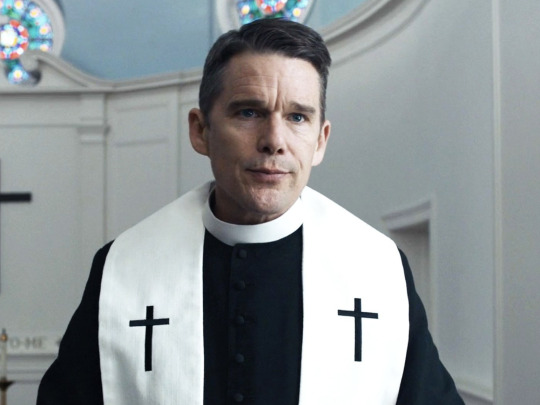
Where Juliet, Naked showed a potential arc of redemption for a father gone astray, First Reformed paints a bleaker portrait. Hawke plays Pastor Toller, a man of the cloth struggling with his own faith who attempts to counsel an environmental activist whose impending fatherhood has driven him to suicidal despair. Toller himself is struggling under the weight of fatherhood, believing he sent his own son to die a needless death in a morally bankrupt war. Sharing the story, he says “My father taught at VMI. I encouraged my son to enlist. It was the family tradition. Like his father, his grandfather. Patriotic tradition. My wife was very opposed. But he enlisted against her wishes. . . . Six months later he was killed in Iraq. There was no moral justification for this conflict. My wife could not live with me after that. Who could blame her? I left the military. Reverend Jeffers at Abundant Life Church heard about my situation. They offered me a position at First Reformed. And here I am.” How do we carry the weight of actions that affect lives that are not even our own?
If Peter Weir set the father figure template in Dead Poets Society, and Paul Schrader explored the consequences of direct parental influence on their children’s lives, director Richard Linklater subverts the idea of a mentor-guide in Boyhood, showing both parents are as lost as the kid himself. When young Mason (Ellar Coltrane) asks his dad (Hawke) what’s the point of everything, his reply is “I sure as shit don’t know. Nobody does. We’re all just winging it.” As the film ends, Mason sits atop a mountain with a new friend he’s made in the dorms discussing time. She says that everyone is always talking about seize the moment—carpe diem!—but she thinks it’s the other way around. That the moments seize us. In Reality Bites, Troy gets annoyed at Lelaina’s constant need to “memorex” everything with her camcorder, yet Boyhood is a film about capturing a life over a 12-year period. The Before Trilogy checks in on Jesse and Celine every nine years. Hawke’s entire career. in fact, has captured his growth from an awkward teen to a prolific artist and devoted father, a master of his craft and philosopher at heart.

#ethan hawke#boyhood#before trilogy#before midnight#before sunset#before sunrise#reality bites#first reformed#dead poets society#a bright ray of darkness#film writing#film essay#musings#oscilloscope laboratories
139 notes
·
View notes
Text
This is Serious Business You're Fucking with Here: The Films of William Friedkin by Bill Ryan
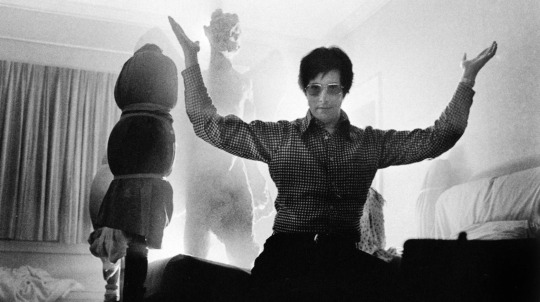
The way things currently stand, it’s probably safe to say that William Friedkin has retired. Not that there isn’t still a market for his brand of hilarious, opinionated coarseness—as two recent documentaries, Francesco Zeppel’s Friedkin Uncut, and Alexandre O. Philippe’s Leap of Faith: William Friedkin on The Exorcist can attest—but as a filmmaker, as a director of movies of all kind, movies that are often idiosyncratic, sometimes nakedly commercial, not infrequently provocative, even deeply shocking, he appears to have packed it in. Friedkin is 85 now, so who can blame him, especially when you consider how much longer the gaps between his films had become? He’s made just three in the last fifteen years.
One of those, the last one, is a documentary called The Devil and Father Amorth, which purports to document the genuine exorcism of a woman actually possessed by an evil spirit. I have my doubts about this, but regardless, if that film does indeed turn out to be Friedkin’s last, there’s a neat symmetry to it, as his first picture was also a documentary. The People vs. Paul Crump was made for television, and combines noirish reenactments and interviews with the key subjects to tell the case of Paul Crump, a black man on Death Row for the murder of a security guard during an attempt to rob the payroll office of a Chicago meatpacking plant. The crime occurred in 1953, and Friedkin’s film—which in addition to suggesting Crump was innocent, also asserts that even if he’s guilty, he was rehabilitated—aired in 1962.
The People vs. Paul Crump was very successful, and allowed Friedkin to pick up more TV work until, in the late 60s, he was finally able to begin his career in features. It’s one hell of a wild career, too, one that can be divided into sections that show both the occasionally scattershot nature of his subject matter and the years when his focus on theme and his own specific style was much sharper, which I’ve done. Let’s get started:
I. Do You Recognize an External Force?

There is no better evidence that Friedkin’s life as a filmmaker has been a unique one than the fact that his first feature was Good Times, a kind of sketch comedy film starring Sonny & Cher (and quite frankly starring Sonny more than Cher) that was ultimately kind of a dry-run for their eventual TV variety shows. It co-stars, naturally enough, George Sanders as a movie executive whose pitch to Sonny about getting him and his wife into the movie business leads to a series of fantasies in which Sonny plays the bumbling hero in different genre movies— a Western, jungle adventure, and so on.
I’ll say this much for Good Times: it could be worse. It sure as hell could also be better, and in any case it’s not very distinctive as far as Friedkin’s own work on it goes. The kind of palatable, big-cartoon-flower Laugh-In-style psychedelia of the film doesn’t exactly jibe with the sensibilities and preoccupations that define most of his work. Friedkin would follow up Good Times with another comedy, The Night They Raided Minsky’s (1968), a period film about the origins of striptease. Made in collaboration with producer and co-writer (with Sidney Michaels and Arnold Schulman) Norman Lear, the film is, according to Friedkin, a complete shambles, a disaster that threatened to ruin his career before it had really begun. In his memoir The Friedkin Connection, he describes his fraught relationship with Lear, and writes: “I brought what I could to the picture, but I was the director in name only.
Unfortunately, or maybe fortunately, I was unable to watch The Night They Raided Minsky’s in time for this piece, but following a Sonny and Cher sketch film and a comedy about burlesque striptease, his next film was an adaptation of Harold Pinter’s The Birthday Party. “It was the first film I really wanted to make, and felt passionate about,” he writes in his memoirs, and that hunger and inspiration is evident. The Birthday Party is, to my mind, Friedkin’s first masterpiece. Taking place almost entirely in just two rooms, the film stars Robert Shaw as Stanley, a shambolic, drunken tenant of a small boarding house run by Meg (Dandy Nichols) and her husband Petey (Moultrie Kelsall). After a long, strange, almost sinisterly flirtatious conversation between Stanley and the dowdy Meg, two new boarders arrive: McCann (Patrick Magee) and Goldberg (Sydney Tafler). These two men appear to know something about Stanley—indeed, they seem to be there, at this boardinghouse, entirely because of Stanley—and as they charm the naïve Meg into throwing a birthday party for Stanley (whether it is even really his birthday is unclear), the atmosphere of the kitchen, and of the parlor, and of the film, grows increasingly infernal.
When turning a stage play into a work of cinema, it’s a common mistake for the director to overwork the camera, and to block the scenes so that the actors never stop moving, all in a desperate attempt to save the audience from what they imagine would otherwise be immense boredom. A good example of this is Michael Corrente’s film of David Mamet’s American Buffalo, in which Dennis Franz is forever wandering around his pawn shop while he talks to Dustin Hoffman, with no clear purpose behind his movements. Friedkin, on the other hand, waits until the camera needs to do something before he does it. Early on, there’s an elegant shot during breakfast: the camera dollies in on the plate of fried bread that Meg has set on the counter for Stanley. It then moves around the counter and into the kitchen itself. This happens slowly, but is dynamic, and opens up the geography of the space. It also expresses the curious menace of the everyday, which is the psychological level from which Pinter’s play begins.
Later, as the action and dialogue during the party (and especially when the characters play Blind Man’s Bluff) becomes increasingly surreal, absurdist, and frightening—and as good as Magee, Shaw, and Nichols are, the terrifying Sydney Tafler steals the film—Friedkin’s direction becomes more chaotic, switching from color to black-and-white any time the lights are turned off, and employing stark, grainy afterimage optical effects that he would use again five years later in The Exorcist. And the overall impact of The Birthday Party is, for me, that of an unusually powerful horror film. What happens in the film, why it happens, is essentially inexplicable, but at the core is something horrible. It’s the terror of the unknown in the everyday. To me, it most closely resembles the exquisitely unnerving horror fiction of Robert Aickman, and of “Mr. Clubb and Mr. Cuff,” a novella by horror writer and Aickman acolyte Peter Straub.
By now seemingly obsessed with plays about birthday parties, Friedkin’s next film was an adaptation of Mart Crowley’s The Boys in the Band (1970). The play, and film, takes place over the course of a day and night, about a group of gay men who are gathering at Michael’s (Kenneth Nelson) to celebrate the birthday of Harold (Leonard Frey). Harold is late to his own party, and acts like a satyr, or Satan, when he does.
The Boys in the Band is a bit more conventional, as a piece of filmmaking, than The Birthday Party, but it’s a good movie, and the first example in Friedkin’s career of his willingness to either consciously buck against, or simply not think about, what, in a given era, is considered polite or tasteful, or to attempt to make mainstream that which others believe should be hidden. The Boys in the Band was, in fact, one of the first American films to focus exclusively on the lives of gay characters. Not all of the actors were gay, but many were, and the tragedy of it all is that several of them, including Nelson and Frey, would die in the ‘80s and ‘90s of AIDS-related illnesses. Another, Reuben Greene, seems to have vanished off the face of the earth.
II. I Am No One

And then suddenly, everything changed. The French Connection happened in a very ordinary way. William Friedkin met and got to know the producer Phil D’Antoni, who one day told him about a non-fiction book by Robin Moore he’d optioned, about an enormous heroin bust, so they flew to New York to meet the two cops at the center of the case. They had to shop Ernest Tidyman’s script around for a while, but that’s not unusual, either. What was unusual was that it was 1971, New Hollywood was taking over, and it was possible to make The French Connection the way Friedkin saw it, and the way it should be made. Or, the way it could be made to work, at least. Friedkin was at the time, by his own admission, an abusive, ill-tempered director. In order to get the performance out of the anxious, uncertain, surly Gene Hackman (playing the racist, ruthless and brilliant cop Popeye Doyle) that he wanted, Friedkin was intentionally tyrannical towards the actor, stoking the rage he wanted Doyle to express: “Gene had to play an angry, obsessive man, and I could provoke that anger in him and let him focus it on me,” he writes in his memoir.
I’m no director, but there are perhaps better ways of handling that. Worse still is the way he shot the famous car/subway chase. From The Friedkin Connection: “I…would not…risk the lives of others as we did, but the best moments of the chase came from this long run with three cameras; pedestrians and cars dashed out of the way, warned only by the oncoming siren.” When Friedkin appeared on Marc Maron’s “WTF” podcast, he told Maron that now he would use computer effects to shoot a scene like that. Dubious, Maron pointed out how real The French Connection was, and when reminded by Friedkin that it’s not real, it’s a movie, Maron protested “You just said people’s lives were in danger!” Friedkin gently responded “That’s not a good thing, Marc.”
But two things are unavoidable: no one died or was even hurt in that scene, and to this day that chase scene kills. It is headlong, heedless, as wild and dangerous as it looks. And Hackman’s Doyle, one senses, would just as soon run down the woman with the baby carriage if he didn’t think it would slow him down more than swerving around her at the last second. Suddenly, the world of Friedkin’s cinema was one of terrifying moral uncertainty, both in the stories they told, and in their making.
While making his next film, The Exorcist (1973), based on the best-selling novel by William Peter Blatty, who wrote the screenplay, Friedkin slapped the face of Father William O’Malley, an actual priest who was cast to play Father Dyer, so that when he yelled “Action!” a second later, O’Malley’s hands would shake the way Friedkin wanted, as Dyer gave Last Rites to his best friend, Father Damien Karras (Jason Miller). Further, in order to get the shot of Ellen Burstyn as Chris MacNeil, the harried single mother of the demonically possessed young girl Regan (Linda Blair), being thrown across the room by Regan, Friedkin put a harness on the actress, which was attached to a device that would lift her off the ground and yank her backward. This stunt, for which Burstyn was not fully prepared, badly injured her back, from which she still suffers. In the various documentaries about the making of The Exorcist in which she has appeared, Burstyn doesn’t seem to have ever forgiven him. And of course, the depraved horror imagery of the film remains repulsive. I still cannot believe that the “Let Jesus fuck you!” scene exists in a big budget studio film. It’s mind-boggling, not only that it’s there, but that it passed the MPAA with an R rating.
If any of this sounds like I disapprove of the film, think again. I think The Exorcist is Friedkin’s greatest achievement; I’m one of those boring people who considers it the best horror film ever made. The wintery cinematography casts a pall over the MacNeil home before anything has happened to Regan. Mike Oldfield’s “Tubular Bells” playing over the nuns in flowing white habits that Chris sees on the street makes them seem alien and unknowable. The secular world of post-“Is God Dead?” America as represented by Chris (more so than Regan, who probably hasn’t given the matter much thought) is about to have a lot of questions it had never asked itself before. Blatty was very much a Catholic, and Friedkin, who was born Jewish, has an approach to religious faith that is at least complex. (He’s described himself as an agnostic who believes the teachings of Jesus. He and Blatty were close up until the writer’s death in 2017.)
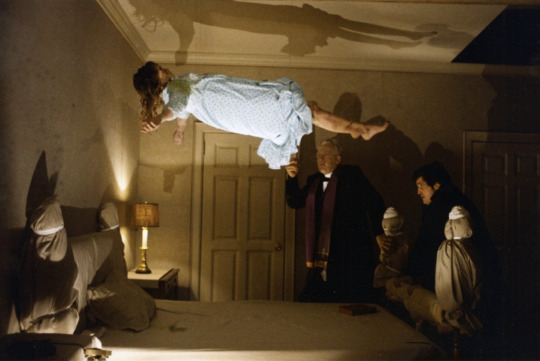
The energizing idea behind The Exorcist is to express both religious faith and Blatty and Friedkin’s belief in mankind’s essential decency through extreme transgression. This isn’t going to sit well with everybody, of course, but that’s finally what The Exorcist is, however many people wish to psychoanalyze Blatty and Friedkin by claiming the film is really about man’s (small “m”) fear of female puberty and sexuality. By which I don’t mean that Regan’s age and gender were chosen by throwing darts at a board, but this reading of the film seems to not only want to treat the ending as meaningless or arbitrary, but to pretend that Father Karras and Father Merrin (Max von Sydow) have no function in the story at all. The still-shocking obscenities in The Exorcist are meant to show the corruption not only of Regan's innocence, but the natural growth that her puberty is bringing forth, as well. Blatty and Friedkin don’t see her pending womanhood as terrifying—they view the unnatural exploitation of it by the demon as terrifying.
The Exorcist was a sensation. Having won the Oscars for Best Director and Best Picture for The French Connection two years earlier, Friedkin was nominated for both again in 1973. His string of failures was at an end. He seemed to be spending the ‘70s the same way Francis Ford Coppola was, with one incredible artistic and commercial achievement after another. Maybe this is where karma stepped in. If so, the form it took was that of Sorcerer (1977), one of his best films. (I’d call it his best, if not for The Exorcist.) Based on Henri-Georges Clouzot 1953 classic The Wages of Fear, Sorcerer (screenplay by Walon Green) is about a group of men—a hitman (Francisco Rabal), a terrorist (Amidou), a disgraced banker (Bruno Cremer), and a thief and getaway driver (Roy Scheider)—on the run from their various crimes and countries, who find themselves together in Porvenir, a small Latin American town. There they land work transporting crates of unstable dynamite, each stick sweating nitroglycerine, over hills and mountains, across swaying bridges and through violent storms. And so the stage is set for an unbearably tense journey, with every jolt along the way potentially setting off the dynamite and killing them all.
The actions of each of these men have brought them to a situation where every rock in the dirt road could bring instant death, a fact not lost on them. Sorcerer is a film of exhaustion—physical, mental, metaphysical, and existential. A long sequence featuring the two gigantic trucks slowly moving across a rotten, rainswept bridge, is a masterpiece of theme as plot, theme as action. In this moment for these men, inches from being blown to pieces, it seems impossible to move forward, but also impossible to go back. So they move forward. Later in the film, when Scheider is the only one left and his truck has died mere miles from his destination, Friedkin and cinematographers Joseph M. Stephens and Dick Bush film the barren landscape where the once huge, now contextually miniscule truck sits stranded as if these were images from a different planet or a dark, lifeless underworld. It is one of the purest visual depictions of despair I’ve ever seen.
In a way, Sorcerer is a combination of Friedkin’s previous two films: it has all the gritty, hard-nosed cynicism of The French Connection as well as The Exorcist's quest for something more beyond the Hell of these men’s lives, even if the quest is carried out ignorantly, the goal swept at blindly, futilely. According to Friedkin, he had no doubt it would be a hit. It was not.
III. You Want Bread, Fuck a Baker
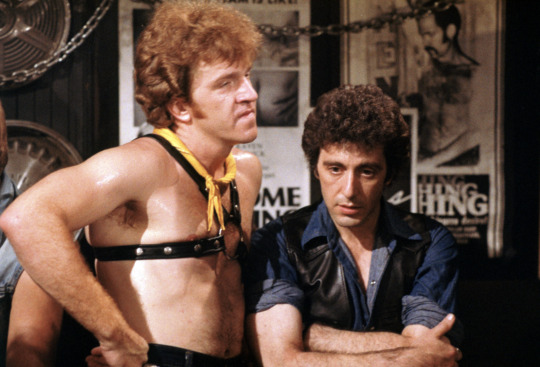
Needing to find a way back from the wilderness of Sorcerer to the brief days of his glorious success after The French Connection and The Exorcist, Friedkin’s next film was The Brink’s Job (1978). The film, which is not at all bad, seems like a blatant plea for commercial acceptance. It’s a heist comedy, based on a true story, roughly along the lines of the wildly successful The Sting from 1973 (a film that beat out The Exorcist at that year’s Oscars). Boasting a stacked cast that includes Peter Falk, Peter Boyle, Paul Sorvino, and Warren Oates, it nevertheless more closely resembles Friedkin’s earlier job-for-hire films. It’s well-made, at times pretty funny, and contains at least one great performance, that given by Warren Oates. But it has no personality of its own, which on the one hand is strange considering how distinct Friedkin’s aesthetic had become in the first half of the ‘70s, but on the other hand, given that he is very outspokenly against the Auteur Theory, perhaps it’s not so strange after all.
At any rate, The Brink’s Job was another commercial disappointment, so Friedkin’s response to which was to say “Fine,” and then go ahead and make Cruising (1980). Perhaps the worst career decision Friedkin could have made, it’s also clearly a film that only Friedkin was ever going to make. Based in part on the only novel written by Gerald Walker, editor and journalist for The New York Times Magazine, the story of the film is a fictionalized account of a real series of murders of gay men in the late ‘70s. The killer turned out to be Paul Bateson, a former radiologist at NYU Medical Center, and who appeared briefly, as a radiologist’s assistant, in The Exorcist. However, Walker’s novel was published in 1970, before Bateson’s murders, so in crafting the screenplay (one of only a handful he’s written) Friedkin pulled material from the book, Bateson’s story, and conversations he’d had with Randy Jurgensen, a homicide detective who’d worked a case undercover in much the same way Al Pacino’s cop Steve Burns does in the film.
Set largely amidst the gay BDSM subculture in New York, Cruising is relentlessly grimy—a grime similar to but apart from that of The French Connection—and aggressive, and for this reason it was, and remains, enormously controversial. Gay activists at the time of its release, and even during filming, protested, believing that the movie would only be used to justify the prejudices of the straight world. Friedkin claims that was never his intention, and Pacino, who almost never discusses the film, said the same thing. This is at least partially borne out by Don Scardino as Ted Bailey, Steve’s neighbor after he goes undercover and rents an apartment near the Meatpacking District, where the BDSM culture is strongest. Ted’s just a normal guy who happens to be gay, and whose murder at the film’s end is the final, nasty shock of this nasty, shocking movie. But Ted’s just one character, and it’s not difficult to understand why activists were so upset about Cruising. Add to this the fact that, originally, Friedkin shot footage of explicit gay sex to include in the nightclub scenes (which, to the surprise of no one, he was forced to remove, and which subsequently, according to Friedkin, was lost) and that, later, when he went back to restore the film for a home video release, he added split-second inserts of hardcore sex during the brutal knife murders, well, perhaps you could at least surmise that Friedkin wanted controversy, and he got it.
Which of course does not mean Cruising is a bad film. The central idea—that this investigation awakens something in Steve Burns, having to do with both his own sexuality, but of a dormant violent streak, even a psychotic one—is fascinating, and played with a kind of brash subtlety so unique to the Pacino of that era that he probably could have trademarked it. And Friedkin’s use of Boccherini’s “La Musica Notturna Delle Strade di Madrid, No. 6, Op. 30” is utterly inspired— incongruous, counterintuitive, and absolutely perfect. But Cruising is a film that struggles with itself, one that at turns seems to be trying to wrench a dark, meaningful thriller from the jaws of empty provocation, and throwing up its hands and succumbing. This is also the source of its power.
This all went about as well for Friedkin as you can imagine, and so with his next film he tried again for commercial viability. The resulting film, 1983’s political comedy Deal of the Century (written by Paul Brickman of Risky Business fame) needn’t concern us for very long. It’s about illegal arms dealers, and it stars Chevy Chase, Sigourney Weaver, and Gregory Hines. They’re all pretty good here, and the way Chase, as one of those arms dealers, says, while demonstrating all the features of a newfangled machine gun to a trio of revolutionaries, “There’s a built-in wire cutter here; you got a wire you wanna cut, it’s built in here” is something I find inexplicably amusing. But that’s about it. The biggest problem in a movie that’s full of them is that, especially in the scene just referenced, Chase’s character is supposed to be a tonier version of Steven Prince’s character from Taxi Driver. And, incredibly, we’re supposed to like this guy, even before he develops a conscience. You know, like illegal arms dealers are always doing? It’s misjudged on almost every level, and, again, exhibits none of Friedkin’s most compelling gifts.

A lot of Friedkin’s post-Sorcerer work suggests a “one for me, one for nobody” philosophy was at play, but his next film, at least when looked at within the full context of its influence, is as close to a cross-over hit as he’d had since The Exorcist. Indeed, To Live and Die in L.A. (1985) is still talked about, still watched, still discovered by new audiences, and deservedly so. A crime film about the rarely explored job of the Secret Service to track down and arrest counterfeiters—and based on a novel by Gerald Petievich, a former Secret Service agent who did that same job—perhaps the most surprising thing about the film is that it basically could not have been influenced by Michael Mann. At that time, Mann had only made (outside of some TV work) Thief and The Keep, the latter of which doesn’t apply to this situation. (Miami Vice had been on for about a season). Which means that in the mid-’80s, Mann and Friedkin were roughly, and independently, on the same wavelength. Or roughly the same wavelength, because while Mann’s color schemes tend to be brazen and primary, even neon at times, in To Live and Die in L.A., Friedkin’s take on Los Angeles crime is more pastel, somehow both muted and bright.
What Friedkin does amp up are the shock and sleaze, elements that Mann uses sparingly. To Live and Die in L.A. begins with a suicide bomber exploding (as he falls off a building, no less), for example, and is rather frank in its sexuality. It also may include the only example in film history of its particular type of villain, the sadistic counterfeiter, played here by an almost boyish Willem Dafoe. This man, Eric Masters, is the foil to Secret Service agent Richard Chance, played by William Petersen, who was one year away from starring in Mann’s Manhunter, and whose scary blankness serves him well in both. Here, Petersen is basically doing his version of Hackman’s Popeye Doyle: both men are so eerily focused on catching their prey that all other considerations, including the safety of the public, or of their fellow law enforcement colleagues, fall by the wayside. Similarly, John Pankow—as John Yukovich, Chance’s partner—matches Roy Scheider’s Buddy Russo, in that both men have a perspective and conscience that their partners lack, though Yukovich is a bit quicker to panic than Russo.
To Live and Die in L.A. is perhaps best remembered for its jaw-dropping car chase—at one point Petersen drives against traffic on the freeway—a cop/action movie trope Friedkin has returned to often, finding a new twist on it each time. As with the chase in The French Connection, this one is incredibly visceral. Despite, or perhaps because, of the fact that a chase like this could not possibly last this long without ending in catastrophe, the threat of sudden death is ever-present. It hangs over the entire film, in fact, appropriately so, given where our protagonist ends up. Speaking of which, a curious motif, and always effectively and disturbingly applied, in Friedkin’s crime films is the image of someone getting shot in the face. This goes back as far as The People vs. Paul Crump, appears again in the opening minutes of The French Connection, and occurs more than once in To Live and Die in L.A. There’s no jolt of violence quite as upsetting as that millisecond flash of a human face being ruined. If he does nothing else, Friedkin will make you feel that.
IV. It’s the Devil Station

To Live and Die in L.A. was a modest success, critically and commercially, but it didn’t put Friedkin back on the A-list. His next film, Rampage, was shot in 1987 but due to producer Dino De Laurentiis’s shifty finances, it remained unreleased in the United States until 1992, when it was acquired by Miramax. It did poorly. In The Friedkin Connection, the director describes this experience as the time he “hit bottom”: “There have been successful filmmakers of my generation, before and since, who didn’t survive disasters like Rampage. They never directed another film. It was entirely possible the same fate awaited me.”
Very well, but I happen to think Rampage is one of Friedkin’s most gripping pictures. Based on a novel by former criminal prosecutor William P. Wood, which itself was based on the murders, arrest, and trial of serial killer Richard Chase (and if you don’t know anything about Chase or his crimes, I urge to continue down this path of blissful ignorance), it’s about a murderer named Charles Reece (Alex McArthur) whose vicious crimes lead the Sacramento District Attorney to insist that the prosecutor assigned to the case, Anthony Fraser (Michael Biehn), pursue the death penalty. This despite the belief that no jury would ever find someone like Reece legally sane. And what Rampage turns out to be, quite surprisingly, is a pro-death penalty film. This is a long way from the stance Friedkin took in The People vs. Paul Crump, although wherever you stand on this issue, I’d say Crump is somewhat easier to sympathize with than Richard Chase.
Anyway, on top of everything else, without being as graphic as some of Friedkin’s films before and after this, Rampage contains some of his most disturbing imagery. It begins, bizarrely, on a freeze-frame of Reece from behind, walking down the street. The frame stays like that for maybe a second before kicking into motion. Friedkin wants the audience to start off disoriented, and then proceed from there. Of the violent imagery—very few of the killings occur on-screen—most unforgettably for me is the blood-soaked measuring cup being put into an evidence bag. Rampage also recalls, in many ways, The Exorcist, with Fraser’s flashbacks to the death of his young daughter resembling Karras’s dream sequence in that earlier film. There’s also a disquieting scene that involves a desecrated church.
It really is the damnedest movie: a melodramatic (the Morricone score is relentless) pro-execution polemic/horror film with incredibly tense, absorbing, and occasionally absurd courtroom scenes. There should have been a mistrial about three different times. But it also includes some wonderful character performances—McArthur is chilling, and especially great when the cops show up at the gas station where Reece works, and they know he’s their guy, but he pretends he’s not Reece—and some genuine emotion. The late Royce D. Applegate is especially memorable as a man trying to find a way to survive after Reece murders his wife and eldest son.
Friedkin would spend the rest of the 90s not quite living up to Rampage. His next film, The Guardian (1990, filmed three years after but released two years before Rampage), is the only other horror film he’s made, outside of The Exorcist, than you couldn’t argue belonged to another genre. But while I find the movie kind of fun (there’s a bit where a bunch of young punks are killed by trees, bushes, etc., that I quite enjoyed), and, at least in the scenes that take place in the forest, it has an interesting, low-budget kind of Labyrinth thing going on visually, it’s not actually something to go out of your way to see. Along with Deal of the Century, it’s the only film he doesn’t even mention in The Friedkin Connection.
Better, though flawed, especially at the end, and anyway not especially Friedkin-esque is 1994’s Blue Chips, a sports drama starring Nick Nolte and Shaquille O’Neal(!). Nolte plays a college basketball coach, which is a role I hope we can all agree is the one Nolte was born to play, providing as it does ample opportunities for him to say things like “Jesus Christ” and “goddamnit.”
Friedkin’s most notorious film from this era is Jade (1995), one of the films that lured David Caruso away from NYPD Blue, before sending him back to CSI: Miami. This one’s not much good either, but I’d argue it’s not without interest. One of those erotic thrillers they used to make (many of which were written by Joe Eszterhas, including this one), Friedkin—who over the years has gone from being famous for his out-sized ego to being extremely self-critical—believes Jade “contains some of my best work.” I don’t know about that, but it does have another terrific car chase, mostly slow-speed this time, through a parade in Chinatown (where there is apparently always a parade), resulting in injuries, some possibly fatal, to many innocent bystanders. It would be more interesting if it wasn’t always clear who was responsible for the injuries, David Caruso’s district attorney character or whoever the hell it was he was chasing (I have forgotten), but nobody was prepared to push the protagonist that far to the dark side. It also has a quite grim ending that should have had a better movie behind it, and a shot of Linda Fiorentino, as Jade, on all fours, facing the camera, her features grossly distorted by the stocking pulled over her head, that is more jarring and, in its way, sexually blunt than anything in Eszterhas and director Paul Verhoeven’s thriller Basic Instinct.
V. Abe Says “Where Do You Want This Killin’ Done?” and God Says “Out on Highway 61”
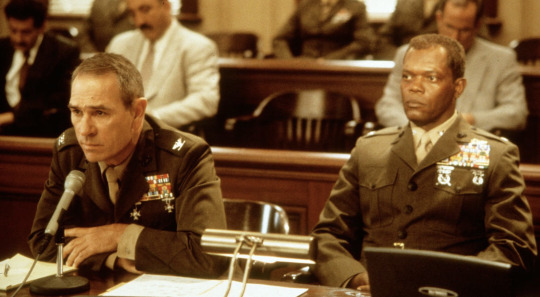
Friedkin spent the first half of the 2000s making a pair of military thrillers. The first, Rules of Engagement (2000), has a script from decorated Vietnam vet, successful novelist, former Secretary of the Navy, and future U.S. Senator James Webb. It stars Samuel L. Jackson as Terry Childers, a Marine colonel who, during a mission to stop an attack on the U.S. Embassy in Yemen, in which members of his platoon are killed, orders his men to fire on a group of protestors. Though Childers gave the order because he believed the protestors were armed and fired on his soldiers first, for various reasons this is perceived by the National Security Advisor (Bruce Greenwood) as murder, and Childers is charged. Childers goes to his old Vietnam buddy Hays Hodges (Tommy Lee Jones), now a military lawyer, to represent him. He agrees, squaring off in court with prosecutor, Major Mark Briggs (Guy Pearce, distractingly accented).
It’s an interesting film, and largely a good one, in my view, but it’s also the sort of thing that attracted an enormous amount of controversy, as it does ultimately support the idea that such a massacre as the audience is witness to can be justified. When the Marines fired down from the roof of the embassy at the protestors, we see, quite clearly, that the crowd includes women and children; this is something from which Friedkin does not flinch, as militarily and morally justifiable. While of course it can be, in the scenario laid out in the film (one can’t expect Marines to not return fire on their attackers), if Friedkin was surprised by the reaction, you do have to kind of wonder how he could be. Then again, at least in The Friedkin Connection, the aspect of the controversy that seems to have concerned him most was those coming specifically from Yemen, and how the film, it was believed, was both racist towards Arabs and would ruin that country’s reputation. Friedkin assures his readers that he was able to smooth things over.
It’s a rather clichéd film too, though, in a lot of ways. The worst example of this is when Hodges returns from Yemen, where he was investigating the incident, and is unable at this point in the film to prove Childers’s version of the story. He goes straight to Childers’s house (drunk, of course), furious with the colonel because he’s starting to believe his friend is a war criminal. Naturally, the two men get into a fist fight, which ends in a tie, both men battered and exhausted on the floor, and then they start laughing. Which is the sort of thing that only happens in movies, and is also the sort of thing that I would have expected Friedkin, at this point in his career, to have cut.
Much better is The Hunted (2003). Written by David Griffiths, Peter Griffiths, and Art Monterastelli, and starring Benicio del Toro and, once again, Tommy Lee Jones, it’s about Sgt. Hallam (del Toro), a former special forces operative turned assassin for the U.S., who, after an especially grueling assignment in Kosovo, snaps. He retreats to the forests of Oregon, where he murders two hunters. It is determined that Hallam is behind the killings, so the FBI agent in charge (Connie Nielsen) asks Lt. Bonham (Jones), the man who trained Hallam, to help with the case. He agrees.
The Hunted is more directly critical of the U.S. military than Rules of Engagement, and what it can force its soldiers to do, and experience, and how these things can warp a person, and turn them into something they weren’t before. Although like the earlier film, its sympathies lay with the soldiers on the ground, not those behind the desk. It is also an absolutely propulsive thriller, so primal that when the action moves from the forest to “civilization,” it feels like the film is stepping out of the world in which it really belongs, into something alien, oppressive, and unfree. It climaxes with what is to me one of the great fight scenes in modern American cinema. We’re back in the wilderness, and Jones and del Toro, armed only with knives, the only two men who belong there, are finishing what was started a very long time ago.
VI. I Am the Super Mother Bug!
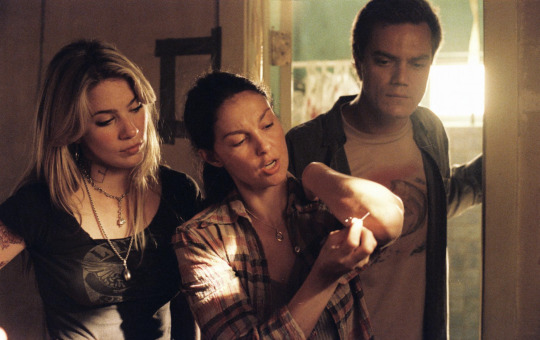
The Hunted did not set the world on fire. It probably should have, but it didn’t. Friedkin wouldn’t make another movie for three years, but when he returned, and setting aside The Devil and Father Amorth, he seemed to have come to the conscious decision to end his filmmaking life making two of the best movies of his career. They are also, if I may be blunt, two of the most fucked-up films he’s ever made, which you must admit is saying something; they’re even more fucked up than The Exorcist, because it might be impossible to locate the moral center in either.
Each is based on a play by Tracy Letts, and Letts also wrote both scripts. Another play of his, August: Osage County, was turned into a film by network TV director John Wells, and a third, Superior Doughnuts, was turned into a short-lived network sitcom. I guess you’d have to call that range. Anyway, Friedkin got there first, and as with The Birthday Party, Friedkin took the inherent limitations of a cinematic adaptation of a stage production into virtues and turned Bug (2006) into an expressionistic nightmare. The film is about a woman named Agnes (Ashley Judd) who works as a waitress in a lesbian bar. She is married to a violent convict named Jerry (Harry Connick, Jr.), with whom she had a son, who we discover has disappeared. One night, through a friend, she meets Peter (Michael Shannon), an odd but friendly man with whom she starts a relationship. Peter seems like a charming eccentric at first, telling Agnes that he makes people uncomfortable because he notices things they don’t, and he knows a great deal about insects. But it soon becomes clear that Peter is a genuine madman. His brain is in a constant state of short circuit, bursting with nonsensical conspiracy theories, ranging from the belief that smoke detectors cause illness, to microchips being implanted into every American born after 1982 as a means of surveillance, and even beyond that. Unfortunately, the insanity of all this is noticed by the audience, not by Agnes. She accepts it, and it doesn’t even take her that long to come around. The title Bug applies not only to literal insects, but to the synonym for “virus,” as the story being told is that of Agnes’s infection.
The film itself is also infected. As Bug proceeds towards its ultimate conflagration (check your smoke detectors, people), Agnes and Peter become more and more connected to each other, and less connected to anyone else. At a certain point, Peter rips from his mouth, with pliers, teeth that he considers compromised, and while Agnes screams at him to stop, she soon comes to understand the wisdom behind his actions. This extraction scene goes on and on, at such a high pitch of hysteria—so many teeth are pulled—that you may be forgiven for eventually laughing. Friedkin calls the film a comedy, though I must say I didn’t laugh. I don’t know what’s wrong with the rest of you.
In another scene, their paranoia reaches such an extreme that what they believe is going on outside of their motel room—a sort of attack by intimidation by bugs and the government, some kind of air assault—is shown by Friedkin DP Michael Grady, and felt by the audience: the room begins to shake, blinding lights stream through the window. In this moment, Peter and Agnes are correct in their beliefs. We’re the ones still asleep. The last scene of Bug is bathed in blue light, the motel room is wrapped in foil. All the blood that is spilled in this scene, a not insignificant amount, is black in this light. Judd as Agnes and Shannon as Peter have been completely untethered. And somehow, Judd is not crushed by the Mack truck that is Michael Shannon. Rather, she matches him minute to minute, second to second, as outlandishly magnificent as he is, right down to her final “Oh!”
Then there’s Killer Joe (2012). The only other time I can think of off the top of my head of a filmmaker in his mid-70s releasing a picture as transgressive as this, that so upset so many people, is when, on Christmas Day 2013, Martin Scorsese’s The Wolf of Wall Street came out. Mind you, in that case the larger issue was critics and audiences not understanding Scorsese’s intent (or maybe while they understood it, they didn’t believe you would). In the case of Killer Joe, I don’t think it can be fairly argued that an essential point was missed by those who reviled it. They simply reviled it. (One prominent critic wrote on Letterboxd that those of his colleagues that he respected who had admitted to laughing throughout the film were “making [him] sick to [his] stomach”).
The plot is simple enough: Chris Smith (Emile Hirsch) convinces his father Ansel (Thomas Haden Church) to hire a cop and killer-for-hire named Joe Cooper (Matthew McConaughey) to murder Chris’s mother and Ansel’s ex-wife, Adele. It is Chris’s belief that Adele’s $50,000 life insurance payout will go to his sister Dottie (Juno Temple). Soon Chris, Ansel, Dottie, and Ansel’s new wife Sharla (Gina Gershon) are all in agreement to go ahead with this. The first problem they encounter is that Joe demands payment in advance, but they don’t have the money. So, in lieu of that, Chris and Ansel agree to Joe’s proposal that he be given Dottie for a night.
This is troubling enough, of course, Dottie being a good deal younger than Joe, and it’s simply an unpleasant idea anyway. But wait, it gets worse: at one point we learn that when she was a child, Adele tried to smother Dottie. Since Dottie doesn’t seem as mature as her apparent age would suggest, it’s not a leap to assume that the failed murder attempt by her own mother has resulted in Dottie suffering from some kind of developmental disability. (It is also my belief that she and Chris have, or once had, an incestuous relationship, though I don’t have a lot to hang that theory on.) This does not stop anybody. The subsequent scene between Joe and Dottie involves a bizarre, unsettling seduction, in which Joe tells her to recount to him her first experiences with love and sex. During this, talking to her as if the experience was currently happening, he asks her “How old are you now?” Dottie says “Twelve,” and in a grotesquely impassioned whisper, Joe says “So am I…” Did this make me laugh? Due to the sheer insanity of it, I admit that it did. I still think it’s funny, or “funny,” whichever.
Put simply, Killer Joe just doesn’t care. The long last scene is a small masterpiece of black comedy, discomfort, and escalating horror, ending back at the start with comedy of the darkest kind. The last image, and the cut to end credits, with the most perfect choice of end credits song I’ve seen, is the biggest laugh in a movie full of them, however little you might want to give Killer Joe what it wants from you. And if you don’t laugh, fine. The most controversial moment in the film, and the one that got it an NC-17 from the MPAA (though the uncut version is officially “unrated”), is when, in this last section, Joe, after beating Sharla because he’s learned she was double-crossing everybody, forces her to simulate fellatio on a KFC chicken drumstick, acting the whole time as though it was not a drumstick he was holding. And it’s awful, truly awful, and I don’t think it’s funny. And it goes on and on.
But I believe it’s fair to ask the question, when looked at in the context of the kind of person we understand Joe to be, why should the audience believe he would be better than that? Of course, it’s not because we believe that, it’s because we don’t want to see him do it. And we definitely don’t want to laugh at it. So don’t laugh at it, I’d argue; I certainly didn’t (though I did laugh at the moment when Ansel grabs his son around the waist to keep him from escaping from Joe’s brutal attack, crying “Get ‘im, Joe!”). But too rarely do modern films try to make the audiences squirm. They may make you upset because you disagree with their politics, but the makers of those films don’t care, or even want, you to watch them anyway. Killer Joe wants you to watch it, and wants you to react to it however you react to it. I won’t say it “challenges” the audience, because Killer Joe isn’t pushing forward any particular idea or philosophy. It’s a wild, depraved scream of amoral laughter.
And it would appear to be William Friedkin’s last feature film. When looked at in the context of his entire career, Killer Joe and Bug feel like the work of a man who has spent too much of his career not making the kinds of movies he was passionate about, that it was his natural instinct to make. Then again, the unavoidable and obvious fact of the film industry is that you have to have success, or at least some kind of positive reputation, to make anything at all. If not for his two monumental successes of the early 70s, there’s no way Friedkin would have been allowed, by anyone, to make these last two pictures. His name still meant something in 2006 and 2012, as it does now. Thank God by then he had the power of will, and the ability to put “From the Director of The Exorcist” on a poster, to go back to doing what he does best: shooting the audience in the face.
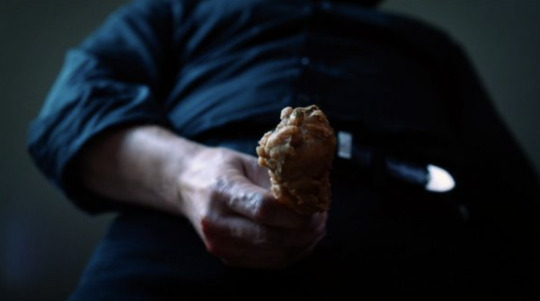
#musings#film writing#oscilloscope laboratories#william friedkin#the exorcist#the french connection#killer joe#bug film#rules of engagement#the hunted#sorcerer film#rampage#the guardian#horror film#tracy letts#the friedkin connection#cruising#cruising film#sonny and cher#beastie boys#adam yauch
4 notes
·
View notes
Text
‘America’s Not a Country, It’s Just a Business’: On Andrew Dominik’s ‘Killing Them Softly’ By Roxana Hadadi
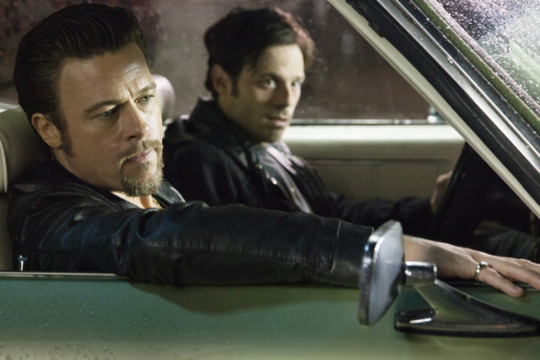
“Shitsville.” That’s the name Killing Them Softly director Andrew Dominik gave to the film’s nameless town, in which low-level criminals, ambitious mid-tier gangsters, nihilistic assassins, and the mob’s professional managerial class engage in warfare of the most savage kind. Onscreen, other states are mentioned (New York, Maryland, Florida), and the film itself was filmed in post-Hurricane Katrina New Orleans, though some of the characters speak with Boston accents that are pulled from the source material, George V. Higgins’s novel Cogan’s Trade. But Dominik, by shifting Higgins’s narrative 30 or so years into the future and situating it specifically during the 2008 Presidential election, refuses to limit this story to one place. His frustrations with America as an institution that works for some and not all are broad and borderless, and so Shitsville serves as a stand-in for all the places not pretty enough for gentrifying developers to turn into income-generating properties, for all the cities whose industrial booms are decades in the past, and for all the communities forgotten by the idea of progress._ Killing Them Softly_ is a movie about the American dream as an unbeatable addiction, the kind of thing that invigorates and poisons you both, and that story isn’t just about one place. That’s everywhere in America, and nearly a decade after the release of Dominik’s film, that bitter bleakness still has grim resonance.
In November 2012, though, when Killing Them Softly was originally released, Dominik’s gangster picture-cum-pointed criticism of then-President Barack Obama’s vision of an America united in the same neoliberal goals received reviews that were decidedly mixed, tipping toward negative. (Audiences, meanwhile, stayed away, with Killing Them Softly opening at No. 7 with $7 million, one of the worst box office weekends of Brad Pitt’s entire career at that time.) Obama’s first term had been won on a tide of hope, optimism, and “better angels of our nature” solidarity, and he had just defeated Mitt Romney for another four years in the White House when Killing Them Softly hit theaters on Nov. 30. Cogan’s Trade had no political components, and no connections between the thieving and killing promulgated by these criminals and the country at large. Killing Them Softly, meanwhile, took every opportunity it could to chip away at the idea that a better life awaits us all if we just buy into the idea of American exceptionalism and pull-yourself-up-by-your-bootstraps ingenuity. A fair amount of reviews didn’t hold back their loathing toward this approach. A.O. Scott with the New York Times dismissed Dominik’s frame as “a clumsy device, a feint toward significance that nothing else in the movie earns … the movie is more concerned with conjuring an aura of meaningfulness than with actually meaning anything.” Many critics lambasted Dominik’s nihilism: For Deadspin, Will Leitch called it a “crutch, and an awfully flimsy one,” while Richard Roeper thought the film collapsed under the “crushing weight” of Dominik’s philosophy. It was the beginning of Obama’s second term, and people still thought things might get better.
But Dominik’s film—like another that came out a few years earlier, Adam McKay’s 2010 political comedy The Other Guys—has maintained a crystalline kind of ideological purity, and perhaps gained a certain prescience. Its idea that America is less a bastion of betterment than a collection of corporate interests, and the simmering anger Brad Pitt’s Jackie Cogan captures in the film’s final moments, are increasingly difficult to brush off given the past decade or so in American life. This is not to say that Obama’s second term was a failure, but that it was defined over and over again by the limitations of top-down reform. Ceaseless Republican obstruction, widespread economic instability, and unapologetic police brutality marred the encouraging tenor of Obama’s presidency. Donald Trump’s subsequent four years in office were spent stacking the federal judiciary with young, conservative judges sympathetic toward his pro-big-business, fuck-the-little-guy approach, and his primary legislative triumph was a tax bill that will steadily hurt working-class people year after year.
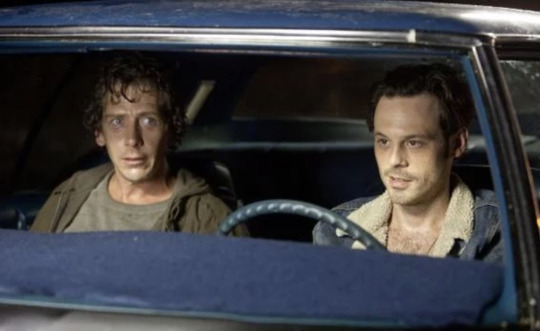
The election of Obama’s vice president Joe Biden, and the Democratic Party securing control of the U.S. Senate, were enough for a brief sigh of relief in November 2020. The $1.9 trillion stimulus bill passed in March 2021 does a lot of good in extending (albeit lessened) unemployment benefits, providing a child credit to qualifying families, and funneling further COVID-19 support to school districts after a year of the coronavirus pandemic. But Republicans? They all voted no to helping the Americans they represent. Stimulus checks to the middle-class voters who voted Biden into office? Decreased for some, totally cut off for others, because of Biden’s appeasement to the centrists in his party. $15 minimum wage? Struck down, by both Republicans and Democrats. In how many more ways can those politicians who are meant to serve us indicate that they have little interest in doing anything of the kind?
Modern American politics, then, can be seen as quite a performative endeavor, and an exercise in passing blame. Who caused the economic collapse of 2008? Some bad actors, who the government bailed out. Who suffered the most as a result? Everyday Americans, many of whom have never recovered. Killing Them Softly mimics this dynamic, and emphasizes the gulf between the oppressors and the oppressed. The nameless elites of the mob, sending a middle manager to oversee their dirty work. The poker-game organizer, who must be brutally punished for a mistake made years before. The felons let down by the criminal justice system, who turn again to crime for a lack of other options. The hitman who brushes off all questions of morality, and whose primary concern is getting adequately paid for his work. Money, money, money. “This country is fucked, I’m telling ya. There’s a plague coming,” Jackie Cogan says to the Driver who delivers the mob’s by-committee rulings as to who Jackie should intimidate, threaten, and kill so their coffers can start getting filled again. Perhaps the plague is already here.
“Total fucking economic collapse.”
In terms of pure gumption, you have to applaud Dominik for taking aim at some of the biggest myths America likes to tell about itself. After analyzing the dueling natures of fame and infamy through the lens of American outlaw mystique in The Assassination of Jesse James by the Coward Robert Ford, Dominik thought bigger, taking on the entire American dream itself in Killing Them Softly. From the film’s very first second, Dominik doesn’t hold back, equating an easy path of forward progress with literal trash. Discordant tones and the film’s stark, white-on-black title cards interrupt Presidential hopeful Barack Obama’s speech about “the American promise,” slicing apart Obama’s words and his crowd’s responding cheers as felon Frankie (Scoot McNairy), in the all-American outfit of a denim jacket and jeans, cuts through what looks like a shut-down factory, debris and garbage blowing around him. Obama’s assurances sound very encouraging indeed: “Each of us has the freedom to make of our own lives what we will.” But when Frankie—surrounded by trash, cigarette dangling from his mouth, and eyes squinting shut against the wind—walks under dueling billboards of Obama, with the word “CHANGE” in all-caps, and Republican opponent John McCain, paired with the phrase “KEEPING AMERICA STRONG,” a better future doesn’t exactly seem possible. Frankie looks too downtrodden, too weary of all the emptiness around him, for that.

Dominik and cinematographer Greig Fraser spoke to American Cinematographer magazine in October 2012 about shooting in post-Hurricane Katrina New Orleans: “We were aiming for something generic, a little town between New Orleans, Boston and D.C. that we called Shitsville. We wanted the place to look like it’s on the down-and-down, on the way out. We wanted viewers to feel just how smelly and grimy and horrible it was, but at the same time, we didn’t want to alienate them visually.” They were successful: Every location has a rundown quality, from the empty lot in which Frankie waits for friend and partner-in-crime Russell (Ben Mendelsohn)—a concrete expanse decorated with a couple of wooden chairs, as if people with nowhere else to go use this as a gathering spot—to the dingy laundromat backroom where Frankie and Russell meet with criminal mastermind Johnny “Squirrel” Amato (Vincent Curatola), who enlists them to rob a mafia game night run by Markie Trattman (Ray Liotta), to the restaurant kitchen where the game is run, all sickly fluorescent lights, cracked tile, and makeshift tables. Holding up a game like this, from which the cash left on the tables flows upward into the mob’s pockets, is dangerous indeed. But years before, Markie himself engineered a robbery of the game, and although that transgression was forgiven because of how well-liked Markie is in this institution, it would be easy to lay the blame on him again. And that’s exactly what Squirrel, Frankie, and Russell plan to do.
The “Why?” for such a risk isn’t that hard to figure out. Squirrel sees an opportunity to make off with other people’s money, he knows that any accusatory fingers will point elsewhere first, and he wants to act on it before some other aspiring baddie does. (Ahem, sound like the 2008 mortgage crisis to you?) Frankie, tired of the crappy jobs his probation officer keeps suggesting—jobs that require both long hours and a long commute, when Frankie can’t even afford a car (“Why the fuck do they think I need a job in the first place? Fucking assholes”)—is drawn in by desperation borne from a lack of options. If he doesn’t come into some kind of money soon, “I’m gonna have to go back and knock on the gate and say, ‘Let me back in, I can’t think of nothing and it’s starting to get cold,’” Frankie admits. And Australian immigrant and heroin addict Russell is nursing his own version of the American dream: He’s going to steal a bunch of purebred dogs, drive them down to Florida to sell for thousands of dollars, buy an ounce of heroin once he has $7,000 in hand, and then step on the heroin enough to become a dealer. It’s only a few moves from where he is to where he wants to be, he figures, and this card-game heist can help him get there.
In softly lit rooms, where the men in the frame are in focus and their surroundings and backgrounds are slightly blown out, slightly blurred, or slightly fuzzy (“Creaminess is something you feel you can enter into, like a bath; you want to be absorbed and encompassed by it” Fraser told American Cinematographer of his approach), garish deals are made, and then somehow pulled off with a sobering combination of ineptitude and ugliness. Russell buys yellow dishwashing gloves for himself and Frankie to wear during the holdup, and they look absurd—but the pistol-whipping Russell doles out to Markie still hurts like hell, no matter what accessories he’s wearing. Dominik gives this holdup the paranoia and claustrophobia it requires, revolving his camera around the barely-holding-it-together Frankie and cutting every so often to the enraged players, their eyes glancing up to look at Frankie’s face, their hands twitching toward their guns. But in the end, nobody moves. When Frankie and Russell add insult to injury by picking the players’ pockets (“It’s only money,” they say, as if this entire ordeal isn’t exclusively about wanting other people’s money), nobody fights back. Nobody dies. Frankie and Russell make off with thousands of dollars in two suitcases, while Markie is left bamboozled—and afraid—by what just happened. And the players? They’ll get their revenge eventually. You can count on that.
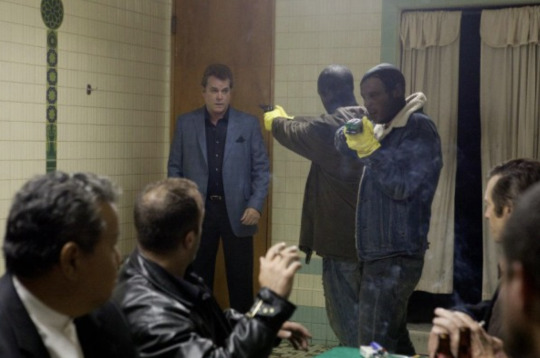
So it goes that Dominik smash cuts us from the elated and triumphant Russell and Frankie driving away from the heist in their stolen 1971 Buick Riviera, its headlights interrupting the inky-black night, to the inside of Jackie Cogan’s 1967 Oldsmobile Toronado, with Johnny Cash’s “The Man Comes Around” providing an evocative accompaniment. “There’s a man going around taking names/And he decides who to free, and who to blame/Everybody won’t be treated all the same,” Cash sings in that unmistakably gravelly voice, and that’s exactly what Jackie does. Called in by the mob to capture who robbed the game so that gambling can begin again, Jackie meets with an unnamed character, referred to only as the Driver (Richard Jenkins), who serves as the mob’s representative in these sorts of matters. Unlike the other criminals in this film—Frankie, with his tousled hair and sheepish face; Russell, with his constant sweatiness and dog-funk smell; Jackie, in his tailored three-piece suits and slicked-back hair; Markie, with those uncannily blue eyes and his matching slate sportscoat—the Driver looks like a square.
He is, like the men who replace Mike Milligan in the second season of Fargo, a kind of accountant, a man with an office and a secretary. “The past can no more become the future than the future can become the past,” Milligan had said, and for all the backward-looking details of Killing Them Softly—American cars from the 1960s and 1970s, that whole masculine code-of-honor thing that Frankie and Russell break by ripping off Markie’s game, the post-industrial economic slump that brings to mind the American recession of 1973 to 1975—the Driver is very much an arm of a new kind of organized crime. He keeps his hands clean, and he delivers what the ruling-by-committee organized criminals decide, and he’s fussy about Jackie smoking cigarettes in his car, and he’s so bland as to be utterly forgettable. And he has the power, as authorized by his higher-ups, to approve Jackie putting pressure on Markie for more information about the robbery. It doesn’t matter that neither Jackie nor the mob thinks Markie actually did it. What matters more is that “People are losing money. They don’t like to lose money,” and so Jackie can do whatever he needs. Dominik gives him this primacy through a beautiful shot of Jackie’s reflection in the car window, his aviators a glinting interruption to the gray concrete overpass under which the Driver’s car is parked, to the smoke billowing out from faraway stacks, and to the overall gloominess of the day.
“We regret having to take these actions. Today’s actions are not what we ever wanted to do, but today’s actions are what we must do to restore confidence to our financial system,” we hear Treasury Secretary Henry Paulson say on the radio in the Driver’s car, and his October 14, 2008, remarks are about the Emergency Economic Stabilization Act of 2008—the government bailout of banks and other financial institutions that cost taxpayers $700 billion. (Remember Will Ferrell’s deadpan delivery in The Other Guys of “From everything I’ve heard, you guys [at the Securities and Exchange Commission] are the best at these types of investigations. Outside of Enron and AIG, and Bernie Madoff, WorldCom, Bear Stearns, Lehman Brothers ...”) Yet the appeasing sentiment of Paulson’s words applies to Jackie, too, and to the beating he orders for Markie—a man he suspects did nothing wrong, at least not this time. But debts must be settled. Heads must roll. “Whoever is unjust, let him be unjust still/Whoever is righteous, let him be righteous still/Whoever is filthy, let him be filthy still,” Cash sang, and Jackie is all those men, and he’ll collect the stolen golden crowns as best he can. For a price, of course. Always for a price.
“I like to kill them softly, from a distance, not close enough for feelings. Don’t like feelings. Don’t want to think about them.”
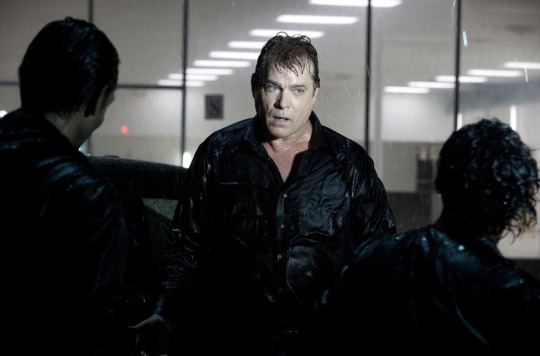
In “Bad Dreams,” the penultimate episode of the second season of The Wire, International Brotherhood of Stevedores union representative Frank Sobotka (Chris Bauer), having seen his brothers in arms made immaterial by the lack of work at the Baltimore ports and the collapse of their industry, learns that his years of bribing politicians to vote for expanded funding for the longshoremen isn’t going to pay off. He is furious, and he is exhausted. “We used to make shit in this country, build shit. Now we just put our hand in the next guy’s pocket,” he says with the fatigue of a man who knows his time has run out, and you can draw a direct line from Bauer’s beleaguered delivery of those lines to Liotta’s aghast reaction to the horrendous beating he receives from Jackie’s henchmen. Sobotka in The Wire had no idea how he got to that helpless place, and neither does Markie in Killing Them Softly—he made a mistake, but that was years ago. Everyone forgave him. Didn’t they?
The vicious assault leveled upon Markie is a harrowing, horrifying sequence that is also unnervingly beautiful, and made all the more awful as a result of that visual splendor. In the pouring rain, Markie is held captive by the two men, who deliver bruising body shots, break his noise, batter his body against the car, and kick in his ribs. “You see fight scenes a lot in movies, but you don’t see people systematically beating somebody else. The idea was just to make it really, really, really ugly,” Dominik told the New York Times in November 2012, and sound mixer Leslie Shatz and cinematographer Fraser also contributed to this unforgettable scene. Shatz used the sound of a squeegee across a windshield to accentuate Markie’s increasingly destroyed body slumping against the car, and also incorporated flash bulbs going off as punches were thrown, adding a kind of lingering effect to the scene’s soundscape. And although the scene looks like it’s shot in slow motion, Fraser explained to American Cinematographer that the combination of an overhead softbox and dozens of background lights helped build that layered effect in which Liotta is fully illuminated while the dark night around him remains impenetrable. Every drop of rain and every splatter of blood stands out on Markie’s face as he confesses ignorance regarding the robbery and begs for mercy from Jackie’s men, but Markie has already been marked for death. When the time comes, Jackie will shoot him in the head in another exquisitely detailed, shot-in-ultrahigh-speed scene that bounces back and forth between the initial act of violence and its ensuing destruction. The cartridges flying out of Jackie’s gun, and the bullets destroying Markie’s window, and then his brain. Markie’s car, now no longer in his control, rolling forward into an intersection where it’s hit not just once, but twice, by oncoming cars. The crunching sound of Markie’s head against his windshield, and the vision of that glass splintering from the impact of his flung body, are impossible to shake.
“Cause and effect,” Dominik seems to be telling us, and Killing Them Softly follows Jackie as he cleans up the mess Squirrel, Frankie, and Russell have made. After he enlists another hitman, Mickey (a fantastically whoozy James Gandolfini, who carries his bulk like the armor of a samurai searching for a new master), whose constant boozing, whoring, and laziness shock Jackie after years of successful work together, and who refuses to do the killing for which Jackie secured him a $15,000 payday, Jackie realizes he’ll need to do this all himself. He’ll need to gather the intel that fingers Frankie, Russell, and Squirrel. He���ll need to set up a police sting to entrap Russell on his purchased ounce of heroin, violating the terms of his probation, and he’ll need to set up another police sting to entrap Mickey for getting in a fight with a prostitute, violating the terms of his probation. For Jackie, a career criminal for whom ethical questions have long since evaporated, Russell’s and Frankie’s sloppiness in terms of bragging about their score is a source of disgust. “I guess these guys, they just want to go to jail. They probably feel at home there,” he muses, and he’s then exasperated by the Driver’s trepidation regarding the brutality of his methods. Did the Driver’s bosses want the job done or not? “We aim to please,” Jackie smirks, and that shark smile is the sign of a predator getting ready to feast.
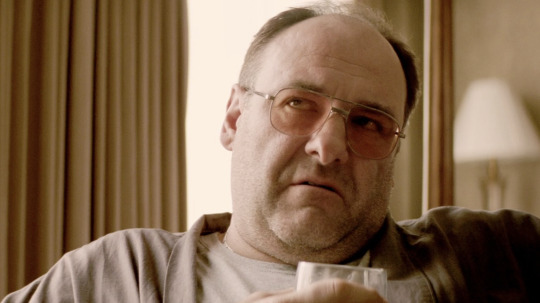
Things progress rapidly then: Jackie tracks Frankie down to the bar where he hangs out, and sneers at Frankie’s reticence to turn on Squirrel. “They’re real nice guys,” he says mockingly to Frankie of the criminal underworld of which they’re a part, brushing off Frankie’s defense that Squirrel “didn’t mean it.” “That’s got nothing to do with it. Nothing at all,” Jackie replies, and that’s the kind of distance that keeps Jackie in this job. Sure, the vast majority of us aren’t murderers. But as a question of scale, aren’t all of us as workers compromised in some way? Employees of companies, institutions, or billionaires that, say, pollute the environment, or underpay their staff, or shirk labor laws, or rake in unheard-of profits during an international pandemic? Or a government that spreads imperialism through allegedly righteous military action (referenced in Killing Them Softly, as news coverage of the economic crisis mentions the reckless rapidity with which President George W. Bush invaded Afghanistan and Iraq after Sept. 11, 2001), or that can’t quite figure out how to house the nation’s homeless into the millions of vacant homes sitting empty around the country, or that refuses, over and over again, to raise the minimum wage workers are paid so that they have enough financial security to live decent lives?
Perhaps you bristle at this comparison to Jackie Cogan, a man who has no qualms blowing apart Squirrel with a shotgun at close range, or unloading a revolver into Frankie after spending an evening driving around with him. But the guiding American principle when it comes to work is that you do a job and you get paid: It’s a very simple contract, and both sides need to operate in good faith to fulfill it. Salaried employees, hourly workers, freelancers, contractors, day laborers, the underemployed—all operate under the assumption that they’ll be compensated, and all live with the fear that they won’t. Jackie knows this, as evidenced by his loathing toward compatriot Kenny (Slaine) when the man tries to pocket the tip Jackie left for his diner waitress. “For fuck’s sake,” Jackie says in response to Kenny’s attempted theft, and you can sense that if Jackie could kill him in that moment, he would. In this way, Jackie is rigidly conservative, and strictly old-school. Someone else’s money isn’t yours to take; it’s your responsibility to earn, and your employer’s responsibility to pay. Jackie cleaned up the mob’s mess, and the gambling tables opened again because of his work, and his labor resulted in their continued profits. And Jackie wants what he’s owed.
“Don’t make me laugh. ‘We’re one people.’”
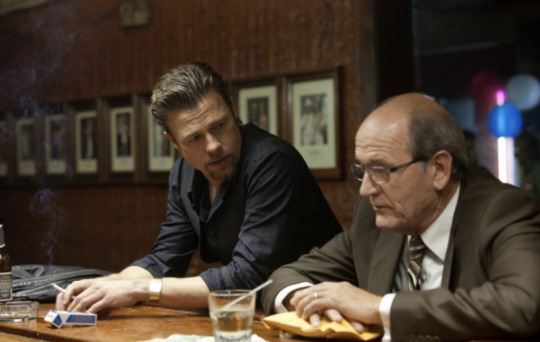
We hear two main voices of authority urging calm throughout Killing Them Softly. Then-President Bush: “I understand your worries and your frustration. … We’re in the midst of a serious financial crisis, and the federal government is responding with decisive action.” Presidential hopeful Obama: “There’s only the road we’re traveling on as Americans.” Paulson speaks on the Emergency Economic Stabilization Act, and various news commentators chime in, too: “There needs to be consequences, and there needs to be major change.” Radio commentary and C-SPAN coverage combine into a sort of secondary accompaniment to Marc Streitenfeld’s score, which incorporates lyrically germane Big Band standards like “Life Is Just a Bowl of Cherries” (“You work, you save, you worry so/But you can’t take your dough”) and “It’s Only a Paper Moon” (“It's a Barnum and Bailey world/Just as phony as it can be”). All of these are Dominik’s additions to Cogan’s Trade, which is a slim, 19-chapter book without any political angle, and this frame is what met so much resistance from contemporaneous reviews.
But what Dominik accomplishes with this approach is twofold. First, a reminder of the ceaseless tension and all-encompassing anxiety of that time, which would spill into the Occupy Wall Street movement, coalesce support around politicians like Bernie Sanders and Elizabeth Warren, and fuel growing national interest in policies like universal health care and universal basic income. For anyone who struggled during that time—as I did, a college graduate entering the 2009 job market after the journalism industry was already beginning its still-continuing freefall—Killing Them Softly captures the free-floating anger so many of us felt at politicians bailing out corporations rather than people. Perhaps in 2012, only weeks after the re-election of Obama and with the potential that his second term could deliver on some of his campaign promises (closing Guantanamo Bay, maybe, or passing significant gun control reform, maybe), this cinematic scolding felt like medicine. But nearly a decade later, with neither of these legislative successes in hand, and with the wins for America’s workers so few and far between—still a $7.25 federal minimum wage, still no federal paid maternity and family leave act, still the refusal by many states to let their government employees unionize—if you don’t feel demoralized by how often the successes of the Democratic Party are stifled by the party’s own moderates or thoroughly curtailed by saboteur Republicans, maybe you’re not paying attention.
More acutely, then, the mutinous spirit of Killing Them Softly accomplishes something similar to what 1990’s Pump Up the Volume did: It allows one to say, with no irony whatsoever, “Do you ever get the feeling everything in America is completely fucked up?” The disparities of the financial system, and the yawning gap between the rich and the poor. The utter lack of accountability toward those who were supposed to protect us, and didn’t. And the sense that we’re always being a little bit cheated by a ruling class who, like Sobotka observed on The Wire, is always putting their hand in our pocket. Consider Killing Them Softly’s quietest moment, in which Frankie realizes that he’s a hunted man, and that the people from whom he stole would never let him live. Dominik frames McNairy tight, his expression a flickering mixture of plaintive yearning and melancholic regret, as he quietly says, “It’s just shit, you know? The world is just shit. We’re all just on our own.” A day or so later, McNairy’s Frankie will be lying on a medical examiner’s table, his head partially collapsed from a bullet to the brain, an identification tag looped around his pinky toe. And the men who ordered his death want to underpay the man who carried it out for them. Isn’t that the shit?
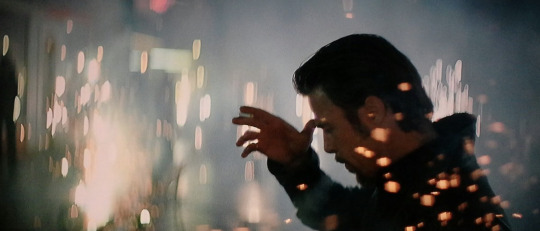
That leads us, then, to the film’s angriest moment, and to a scene that stands alongside the climaxes of so many other post-recession films: Chris Pine’s Toby Howard paying off the predatory bank that swindled his mother with its own stolen money in Hell or High Water, Lakeith Stanfield’s Cash Green and his fellow Equisapiens storming billionaire Steve Lift’s (Armie Hammer’s) mansion in Sorry to Bother You, Viola Davis’s Veronica Rawlings shooting her cheating husband and keeping the heist take for herself and her female comrades in Widows. So far in Killing Them Softly, Pitt has played Jackie with a certain level of remove. A man’s got to have a code, and his is fairly simple: Don’t get involved emotionally with the assignment. Pitt’s Jackie is susceptible to flashes of irritation, though, that manifest as a smile that doesn’t reach his eyes, and as an octave-lower growl that belies his impatience: with the Driver, for not understanding how Markie’s reputation has doomed him; with Mickey, for his procrastination and his slovenliness; with Kenny, for stealing a hardworking woman’s tip; with Frankie, when he tries to distract Jackie from killing Squirrel. Jackie is a professional, and he is intolerant of people failing to work at his level, and Pitt plays the man as tiptoeing along a knife’s edge. Remember Daniel Craig’s “’Cause it’s all so fucking hysterical” line delivery in Road to Perdition? Pitt’s whole performance is that: a hybrid offering of bemusement, smugness, and ferocity that suggests a man who’s seen it all, and hasn’t been impressed by much.
In the final minutes of Killing Them Softly, Obama has won his historic first term in the White House, and Pitt’s Jackie strides through a red haze of celebratory fireworks as he walks to meet the Driver at a bar to retrieve payment. An American flag hangs in this dive, and the TV broadcasts Obama’s victory speech, delivered in Chicago to a crowd of more than 240,000. “Crime stories, to some extent, always felt like the capitalist ideal in motion,” Dominik told the New York Times. “Because it’s the one genre where it’s perfectly acceptable for the characters to be motivated solely by money.” And so it goes that Jackie feels no guilt for the men he’s killed, or the men he’s sent away. Nor does he feel any empathy or kinship with the newly elected Obama, whose messages of unity and community he finds amusingly irrelevant. The life Jackie lives is one defined by how little people value each other, and how quick they are to attack one another if that means more opportunity—and more money—for them. Thomas Hobbes said that a life without social structure and political representation would be “solitary, poor, nasty, brutish, and short,” and perhaps that’s exactly what Jackie’s is. Unlike the character in Cogan’s Trade, Dominik’s Jackie has no wife and no personal life. But he’s surviving this way with his eyes wide open, and he will not be undervalued.
The contrast between Obama’s speech about “the enduring power of our ideas—democracy, liberty, opportunity, and unyielding hope”—and Jackie’s realization that the mob is trying to underpay him for the three men he assassinated at their behest makes for a kind of nauseating, thrilling coda. He’s owed $45,000, and the envelope the Driver paid him only has $30,000 in it. Obama’s audience chanting “Yes, we can,” the English translation of the United Farm Workers of America’s slogan and the activist César Chávez’s iconic “Sí, se puede” catchphrase, adds an ironic edge to the argument between the Driver and Jackie about the value of his labor. Whatever the Driver can use to try and shrug off Jackie’s advocacy for himself, he will. Jackie’s killings were too messy. Jackie is asking for more than the mob’s usual enforcer, Dillon (Sam Shepard), who would have done a better job. Jackie is ignoring that the mob is limited to “Recession prices”—they’re suffering, so that suffering has to trickle down to someone. Jackie made the deal with Mickey for $15,000 per head, and the mob isn’t beholden to pay Jackie what they agreed to pay Mickey.
On and on, excuse after excuse, until one finally pushes Jackie over the edge: “This business is a business of relationships,” the Driver says, which is one step away from the “We’re all family here” line that so many abusive companies use to manipulate their cowed employees. And so when Jackie goes coolly feral in his response, dropping knowledge not only about the artifice of the racist Thomas Jefferson as a Founding Father but underscoring the idea that America has always been, and will always be, a capitalist enterprise first, the moment slaps all the harder for all the ways we know we’ve been let down by feckless bureaucrats like the Driver, who do only as they’re told; by faceless corporate overlords like the mob, issuing orders to Jackie from on high; and by a broader country that seems like it couldn’t care less about us. “I’m living in America, and in America, you’re on your own … Now fucking pay me” serves as a kind of clarion call, an expression of vehemence and resentment, and a direct line into the kind of anger that still festers among those continuously left behind—still living in Shitstown, still trying to make a better life for themselves, and still asking for a little more respect from their fellow Americans. For all of Killing Them Softly’s ugliness, for all its nihilism, and for all its commentary on how our country’s ruthless individualism has turned chasing the American dream into a crippling addiction we all share, that demand for dignity remains distressingly relevant. Maybe it’s time to listen.
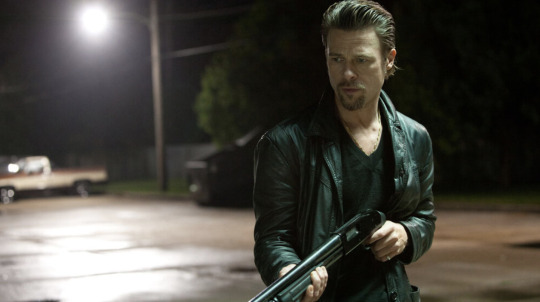
#killing them softly#andrew dominik#andrew dominik film#brad pitt#Jackie Cogan#james gandolfini#richard jenkins#ray liotta#scoot mcnairy#ben mendelsohn#american cinematographer#financial crisis 2008#independent film#beastie boys#oscilloscope laboratories#film writing#musings
31 notes
·
View notes
Text
Christopher Nolan: The Man Who Wasn’t There by Daniel Carlson
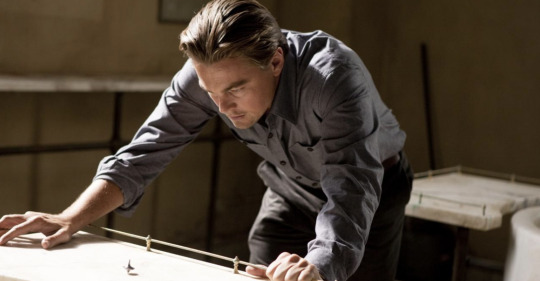
1.
So, we’ll start with the fact that all movies are make-believe. It’s a bunch of actors on a set, wearing costumes and standing with props picked out by hordes of people you’ll never see, under the guidance of a director, saying things that have been written down for them while doing their best to say these things so that it sounds like they’re just now thinking of them. We all know this—saying it feels incredibly stupid, like pointing out that water is wet—but it’s still worth noting. There is, for example, no such person as Luke Skywalker. Never has been, never will be. He was invented by a baby boomer from Modesto. He is not real.
And we know this, and that’s part of the fun. We know that Luke Skywalker isn’t real but is being portrayed by an actor (another boomer from the Bay Area, come to think of it), and that none of the things we’re seeing are real. But we give ourselves over to the collective fiction for the greater experience of becoming involved in a story. This is one of the most amazing things that we do as humans. We know—deep down, in our bones, without-a-doubt know—that the thing we’re watching is fiction, but we enter a state of suspended reality where we imagine the story to be real, and we allow ourselves to be moved by it. We’ve been doing this since we developed language. The people telling these stories know this and bring the same level of commitment and imagination and assurance that we do as viewers, too. The storyteller knows that the story isn’t real, but for lack of a better way to get a handle on it, it feels real. So, to continue with the example, we’re excited when Luke Skywalker blows up the Death Star because he helped the good guys win. For us viewers, in this state of mutually reinforced agreement, that “happened.” It’s not real, but it’s “real”—that is, it’s real within the established boundaries of the invented world that we’ve all agreed to sit and look at for a couple of hours. Every viewer knows this, and every filmmaker acts on it, too. Except:
Christopher Nolan does not do this.
2.

There’s no one single owner or maker of any movie, and anyone who tells you different has their hand in your pocket. But there’s an argument to be made that when somebody both writes and directs the movie, it’s a bit easier to locate a sense of personhood in the final product. (This is all really rough math, too, and should not be used in court.) Christopher Nolan has directed 11 films to date, and while his style can be found in all of them, his self is more present in the ones where he had a hand in the shaping of the story—and crucially, not just that, but in the construction of the fictional world. Take away the superhero trilogy, the remake of a Norwegian thriller, the adaptation of a novel, and the historical drama, and Nolan’s directed five films that can reasonably be attributed to his own creative universe: Following (1998), Memento (2000), Inception (2010), Interstellar (2014), and Tenet (2020). These movies all involve themes that Nolan seems to enjoy working with no matter the source material, including identity, memory, and how easily reality can be called into question when two people refuse to concede that they had very different experiences of the same event. Basically, he makes movies about how perception shapes existence. How he does this, though, is unlike pretty much everybody else.
Take Inception. After a decade spent going from hotshot new talent to household name (thanks to directing the two highest-grossing Batman movies ever made, as well as the first superhero movie to earn an Oscar for acting), he had the credit line to make something big and flashy that was also weird and personal. So we got an action movie that, when first announced in the Hollywood trades, was described as being set within “the architecture of the mind.” Although this at first seemed to be a phrase that only a publicist could love, it turned out to be the best way to describe the film. This is a film, after all, about a group of elite agents who use special technology to enter someone’s subconscious dream-state and then manipulate that person’s memories and emotions. The second half of the film sees team leader Dom Cobb (Leonardo DiCaprio) and the rest of the squad actually descend through multiple nested subconsciouses to achieve their goal, even as they’re chased every step of the way by representations of Mal (Marion Cotillard), Dom’s late wife, who committed suicide after spending too much time in another’s subconscious and lost the ability to discern whether she was really alive or still in the dream-world.
I say “representations” because that’s what they are: Mal is long dead, but Dom still feels enormous guilt over his complicity in her actions, and that guilt shows up looking like Mal, whose villainous actions (the representation’s actions, that is) are just more signs of Dom not being able to come to grips with his own past. It’s his own brain making these things up and attacking itself, and it chases his entire crew down three successive layers of dream worlds. You get caught up in the movie’s world as a viewer, and you go along because Nolan is pretty good at making exciting movies that feel like theme-park rides. You accept that Dom and everybody else refer to Mal as Mal and not, say, Dom. Dom even addresses her (“her”) when her projection shows up, speaking to her as if she’s a separate being with her own will and desires and not a puppet that he’s pretending not to know he’s controlling. It’s only later that you realize that the movie is in some ways just a big-budget rendition of what it would look like to really, really want to avoid therapy.
Which is what makes Nolan different from other filmmakers:
None of this is actually happening.
Again, yes, it’s happening in the sense that we see things on screen—explosions, chases, a fight scene in a rotating hallway that’s still some of the best practical-effects work in modern action movies—but within the universe of the film, none of what’s going on is taking place in the real world. It’s all unfolding in the subconsciouses of Dom’s teammates. In the movie’s real world, they’re all asleep on a luxury jet. They’re “doing” things that have an outcome on the plot, but Nolan sets more than half the movie inside dreams. It’s a movie about reality where we spend less time in reality than in fantasy. Half the movie is pretend.
For Nolan, filmmaking is about using a dazzling array of techniques to create a visual spectacle that distracts the viewer from the fact that the real and true story is happening somewhere else: in the fringes we can’t quite see, in the things we forget to remember, or even in the realm of pure speculation.
3.

Memento arrived like (and with) a gunshot. It seemed to come out of nowhere and leave people struggling to describe it, and they usually wound up saying something like “it goes backward, but also forward at the same time, except some parts are actually really backward, like in reverse, so it’s maybe a circle?” Written by Christopher Nolan from an idea originally shared with him by his brother, Jonathan (who eventually turned it into a very different short story titled “Memento Mori”), the film follows a man named Leonard (Guy Pearce) who has anterograde amnesia and can’t form new memories, so every few minutes he sort of just resets and has to figure out where he is, what he’s doing there, and so on. He’s on the hunt for the man who attacked him and his wife, leaving his wife dead and Leonard in his present condition, which you can imagine does not make the gathering and synthesis of clues easy.
What’s more, Nolan puts the viewer in Leonard’s shoes by breaking the film’s linear timeline into two halves—call them A and B—and then alternating between them, with the added disorientation coming from the fact that one of those timeline halves plays out backward, with each successive scene showing what happened before the one you previously saw. So, if you numbered all the scenes in each timeline in chronological order, they’d look something like this when arranged in the final film: Scene A1, Scene B22, Scene A2, Scene B21, Scene A3, Scene B20, etc. You get why it messed with people’s heads.
As a result, we spend most of the movie pretty confused, just like Leonard, whose suppositions about what might or might not take place next begin to substitute for our own understanding of the film. It’s not until the end that we find out the shoe already dropped, and that Leonard killed the original attacker some time ago and has since been led on a series of goose chases by his cop friend, Teddy (Joe Pantoliano), who’s planting fake clues to get Leonard to take out other criminals. In other words, we realize that the story we thought was happening was pretend, and the real story was happening all around us, in the margins, memories, and imaginations of the characters. The most honest moment in the movie is the scene where Leonard hires a sex worker to wait several minutes in the bathroom while he gets in bed, then make a noise with the door to wake him, at which point his amnesia has kicked in again and he briefly thinks that the noise is being made by his wife. He’s wrong, of course, but this is the only time in the movie that we actually know he’s wrong. It’s the only time we truly know what’s real and what isn’t.
Yet you can’t talk about Memento without talking about Following, Nolan’s first feature. Although the film’s production was so extremely low-budget you’d think they were lying—the cast and crew all had day jobs and could only film on the weekends, so the thing took a year to make—Nolan’s willingness to dwell completely in a make-believe world that the viewer never knows about is already evident. It’s about a bored young writer who starts following strangers through the city for kicks, only for one of those strangers to catch him in the act and confront him. The stranger introduces himself as Cobb—I kindly submit here that it is not a coincidence that this is also Leonardo DiCaprio’s character’s name in Inception, but you already knew that—and reveals himself to be a burglar, spooked by the tail but willing to take on an apprentice. Cobb trains the writer to be a burglar, only for the situation to ultimately wind up implicating the writer himself in a complex blackmail plot. You see, the writer didn’t latch onto Cobb in a crowd; Cobb lured him in. The whole movie has been Cobb’s story all along, with the writer as a patsy who doesn’t understand the truth until the final frame. None of what we saw mattered, and everything that actually happened happened off-screen just before or just after we came in on a given scene. It’s like realizing the movie you’re watching turned out to be just deleted scenes from something else. You can’t say Nolan didn’t show his hand from the start.
4.

That same general concept—that the movie we’re watching is actually the knock-on effect of a movie we’ll only glimpse, or maybe never even see—underpins Nolan’s latest movies, Interstellar and Tenet, too. Interstellar has some concepts that are iffy even for Nolan (it makes total sense for someone to do something for another out of love, but somewhat less sense that that love somehow reshapes the physical universe), but it’s still a big, bold approach to exploring how time and perception shape our actions. As the film follows its core group of astronauts while they search for potentially habitable new worlds, they encounter strange visions and experiences that turn out to be their handiwork from the future reflected back at them. Sure, it raises the paradoxical question of whether they had a first mission before this that failed, so now their future selves are intervening to make the second one (which feels like the first one to the astronauts the whole time) successful, and all sorts of other stuff that your sophomore-year roommate would like to talk with you about in great detail. But so much of what we see isn’t the stuff that happens, or that winds up being important. There’s the great scene where the astronauts land on a planet near a black hole, which is wreaking havoc on how time passes on the planet. A minor disaster delays their departure for the main ship still in orbit, but when the landing team returns, they find that more than 20 years have “passed” since they left, with the one remaining team member on the ship having spent more than two decades waiting for them to return. It’s a moment of genuine horror, and it underscores the fact that what we thought was the one true reality was just the perspective of a handful of characters we happened to follow for a few minutes. There were whole things happening that changed the plot and story and direction of everything that would follow, and we never saw them; we didn’t even know we’d missed them.
Tenet is, of course, the latest and most recursive exploration yet of Nolan’s obsession with showing us a story that turns out to be mostly fake. It is almost perversely hard to even begin to explain the film (Google “Tenet timeline infographic” and have fun). One way to think about it is to imagine if the two timeline halves from Memento somehow existed at the same time, with people moving both forward and backward through time while inhabiting the same location. Basically, some scientists figured out how to “invert” the basic entropy of objects, so that they exist backward: you hold out your hand and the ball on the ground leaps up into it, because you’ve dropped it in the future, so now you can pick it up, etc. … Look, it doesn’t get easier to understand.
The upshot is, though, that we spend the film following the Protagonist (that’s his name), a CIA agent played by John David Washington, as he’s tasked with tracking down the source of the inverted stuff to figure out what’s unfolding in the future and why it’s suddenly started to make itself known in the present. He gets marginally closer to understanding the truth by the end of the film, but because this is a Nolan film that is maybe more expressly about the nature of reality than anything he’s ever done, his journey doesn’t so much take him forward as it does in a large circle. Because, and stop me if you’ve heard this, the true story of Tenet is taking place outside the Protagonist’s actions and knowledge, alongside him but invisible, often steered by people who themselves are moving “backward” through time and thus have already met the Protagonist in the future and are old friends with him by the time he meets them in his youth. Even more brain-liquefying, some of these people have been working under the orders of the Protagonist himself—the future version, that is—because his past self has already achieved the victories that allowed him to send the future people backward through time to meet his younger self so they’d achieve the victories that allow him to etc., etc., etc.
With Tenet, Nolan didn’t just make a movie that challenged perception, like Memento, or that dwelt in fiction, like Inception. He made a movie that can only be understood (to whatever degree true understanding is possible) by rewatching the movie itself, over and over, as the multiple timelines and harrowingly complex bits of cause and effect come into some kind of focus. The whole movie itself isn’t happening, in a sense, but is just the ramifications of something else, the echoes of a shout whose origin we’re straining to pinpoint. It both is and isn’t.
5.
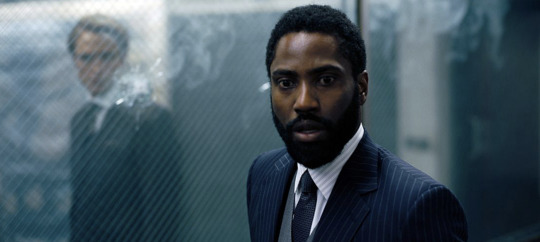
Christopher Nolan is a talented director of action-driven suspense thrillers. He’s canny at controlling the audience’s emotions, and he knows how to put on a dazzling show. Plus he’s fantastic at picking when to deploy non-computer-generated effects for maximum impact. But you could say that about a lot of other directors, too. What sets Nolan apart from the rest, and what makes him a director to keep watching and returning to, is the teasing way his movies wind up being just deceptive enough to fool you into thinking that you know what’s going on, then just harsh enough to disabuse you of that notion. Looking at what seems to drive him, I don’t think Tenet is his best movie-movie, but it’s his most-Nolan movie. It’s almost a culmination of his continuing efforts to tell stories where what you see and what actually happens are two different things. It’s not that he makes puzzles to solve. There is no solving these movies. Rather, it’s that he sculpts these delicate artifacts that only let you see two dimensions at a time, never all three, no matter how you twist your head. Craning back and forth, you can almost see the whole thing, but not quite. Some part of it will always have to exist in your memory. And that’s where Christopher Nolan likes to be.
#chrisopher nolan#tenet#memento#following#following movie#christopher nolan film#inception#inception film#memento film#tenet film#interstellar#interstellar film#oscilloscope laboratories#musings#film writing#beastie boys
32 notes
·
View notes
Text
The Exterminating Angel: On the Wrongness and Righteousness of Abel Ferrara’s “Ms. 45″ by Scott Tobias

The most famous shot in Woody Allen’s Manhattan was photographed in the early light near the Queensboro Bridge, with Allen and Diane Keaton sitting on a bench in Sutton Place Park at East 58th Street. The bench occupies the far-right corner of Gordon Willis’ widescreen, black-and-white frame, with the bridge itself, illuminated by two sets of necklace lights, stretching from end to end. Folding this romantic moment into an unabashed love letter to the city itself, the shot was such a perfect distillation of the film’s spirit that it was used for the poster.
Two years later, on the same bench with the same view of the Queensboro Bridge, Thana, the mute heroine of Abel Ferrara’s rape/revenge exploitation movie Ms. 45, pulls a gun on another in a series of lowlifes she’s murdered in the wake of two sexual assaults in a single afternoon. Surely, Ferrara was cackling at the juxtaposition: Woody Allen’s New York is a magical place, “a town that existed in black-and-white, and pulsated to the great tunes of George Gershwin.” Ferrara’s New York is grimy and loud and violent, a hunting ground for cat-calling lotharios and lowlife predators. Defiling the famed Manhattan bench is Ferrara’s way of thumbing his nose at Allen’s romanticism.

Back when Allen was releasing Manhattan, still riding high off his Best Picture win for Annie Hall, Ferrara was in the exploitation-movie trenches with The Driller Killer, a horror movie that Variety found so risible that its critic wrote “Abel Ferrara makes Tobe Hooper look like Federico Fellini.” (Ferrara and his team were thrilled by the notice.) Though Ms. 45 was a huge leap forward in ambition and sophistication, it wasn’t so far removed from the grindhouse aesthetic of The Driller Killer, with an all-the-animals-come-out-at-night vibe that outsleazed the likes of Taxi Driver and Death Wish. 40 years later, Ms. 45 still feels like a powder keg of a movie, notable for how much it subverts the rape/revenge story without trying to transcend it. It’s full of fascinating contradictions, tied to a character whose mission of vengeance is righteous and cathartic in some respects, and messy and disproportionate in others.
Ferrara wastes not a second of his 80-minute running time in establishing New York as a hostile place for an attractive young woman like Thana (Zoë Lund, then credited as Zoë Tamerlis), who walks through a gauntlet of harassment to her job as a seamstress in the Garment District. She doesn’t have the voice to put these men in their place, and she certainly doesn’t have the voice to scream when a mugger snatches her off the sidewalk and rapes her in a back alleyway. Her powerlessness is cruelly reinforced when she gets back to her apartment and a burglar seizes the opportunity to assault her a second time. Getting raped twice in the same day may sound like a wild coincidence, but through Ferrara’s lens, it seems more like a silent conspiracy, like a pack of wolves circling a wounded gazelle. Thana gets the upper hand by clocking her second attacker in the head with a blunt object—specifically a red apple made of glass, the Catholic Ferrara’s nod to Eve in the Garden—and Thana suddenly emerges as an avenging angel.
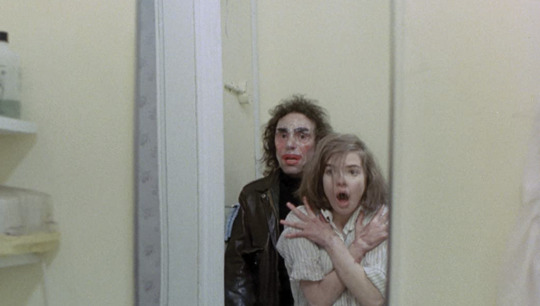
Were Ms. 45 as simple as Thana taking revenge on behalf of herself and other victims of harassment and assault in New York City, it wouldn’t be nearly as provocative and compellingly ambiguous. Once she gets her hands on a gun and starts playing the role of vigilante, there’s something undeniably thrilling about her wandering into the night and blowing would-be rapists away, like Batman in heels and ruby-red lipstick. But there’s an extent to which she’s simply broken psychologically, with an increasing inability to distinguish between deserving targets of her violence and other men who may not have it coming. She’s been made numb to humanity, which explains why she’s able to carve her second attacker into pieces and distribute parts of him in garbage bins and bus-station lockers around the city.
The Taxi Driver connection is critical, underlined in a late scene where Thana, packing her pistol in the stockings of sexy-nun Halloween costume, does her own version of the famed mirror scene in Martin Scorsese’s film. She’s much more sympathetic than Travis Bickle, whose madness is rooted in his own isolation and simmering resentment, but there comes a point toward the finale where she has a Bickle-like need to kill, regardless of the worthiness of her target. There’s an important irony in Scorsese’s film that society rewards him for killing a pimp instead of a politician, even though it makes no difference to him. Thana simply wants to kill men, and the climax at the Halloween party is where it ceases to make a difference to her, either.
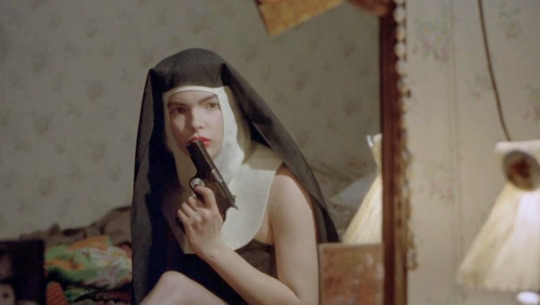
And yet, Ms. 45 doesn’t minimize the sympathy we feel for Thana or the trauma that has been visited upon her, even as events inevitably spin out of her control. Her muteness is a brilliant ploy on the film’s part. When a sleazy photographer makes a move on a co-workers over lunch, she’s not able to tell him off like her friend. She can only “speak” through violence later. But Thana’s muteness isn’t just about letting her gun do the talking. It’s also about the incuriosity of men who have no interest in anything a woman has to say. There’s an entire scene at a bar where Thana listens to a drunk suitor ramble on and on, with no indication that he’s aware of her condition. She’s simply a sounding board for him now, and a hoped-for sex object later.
New York is just as much a “character” in Ms. 45 as it is in Manhattan, brought to life by the grimy texture of Ferrara’s location work and his rigorous efforts to see the world through Thana’s eyes. The city is a snarling monster even before two of its denizens attack her, and it then becomes impossible for Thana to see men as anything other than a threat, whether it’s a relatively innocuous skirt-chaser or the lecherous boss who’s looking to leverage her lapses at work to his advantage. There’s no quarter for a woman like Thana in this New York, neither in the streets where men leer at her nor in a workspace where her livelihood is subject to sexual renegotiation. The threat of violence is everywhere—and she’s given herself license to an extremely proactive form of self-defense.
Ms. 45 exists in an uncomfortable space between raw exploitation and high art, which has been more or less Ferrara’s territory ever since. It recognizes that there’s no tidy way for Thana to express herself, and so the violence she unleashes doesn’t have the satisfying moral clarity of Charles Bronson popping off on the punks who wronged him. Some of the men get what’s coming to them. Others are collateral damage. All Ferrara and Lund seem to ask is for Thana to be understood, to be heard. She’s owed that much at a minimum.

#Abel Ferrara#ms. 45#woody allen#manhattan#manhattan on film#filmed in nyc#nyc films#nyc movies#revenge film#rape revenge#zoe lund#new york city#oscilloscope laboratories#o-scope labs#beastie boys#adam mca yauch#film writing#Film Criticism
21 notes
·
View notes
Text
It’s Arrested Development: How ‘High Fidelity’ Has Endured Beyond Its Cultural Sell-By Date by Vikram Murthi
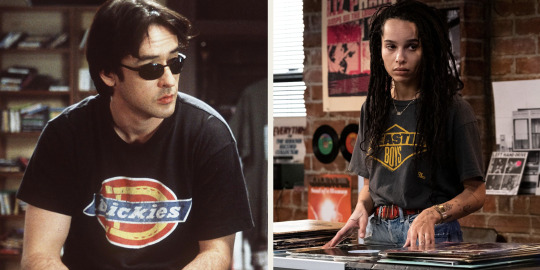
It’s easy to forget now that at the beginning of 2020, before the pandemic had taken hold of our consciousness, for a brief moment, High Fidelity was back. Not only did Nick Hornby’s debut novel and Stephen Frears’ film adaptation celebrate major milestones this year — 25th and 20th anniversaries, respectively — but a TV adaptation premiered on Hulu in February. In light of all of these arbitrary signposts, multiple thinkpieces and remembrances litigated Hornby’s original text on familiar, predictable grounds. Is the novel/film’s protagonist Rob actually an asshole? (Sure.) Does Hornby uphold his character’s callous attitudes towards women? (Not really.) Hasn’t the story’s gatekeeping, anti-poptimist approach to artistic taste culturally run its course? (Probably.) Why do we need to revisit this story about this person right now? (Fair question!)
Despite reasonable objections on grounds of relevancy, enough good will for the core narrative—record store owner seeks out a series of exes to determine a pattern of behavior following a devastating breakup—apparently exists to help produce a gender-flipped streaming show featuring updated musical references and starring a decidedly not-middle-aged Zoë Kravitz. I only made it through six of ten episodes in its first (and only) season, but I was surprised by how closely the show hewed to High Fidelity’s film adaptation, to the point of re-staging numerous scenes down to character blocking and swiping large swaths of dialogue wholesale. (Similarly, the film adaptation hewed quite close to the novel, with most of the dialogue ripped straight from Hornby.) Admittedly, the series features a more diverse cast than the film, centering different experiences and broadly acknowledging some criticisms of the source material regarding its ostensibly exclusionary worldview. Nevertheless, it seemed like a self-defeating move for the show to line itself so definitively with a text that many consider hopelessly problematic, especially considering the potential to repurpose its premise as a springboard for more contemporary ideas.

High Fidelity’s endurance as both a piece of IP and a flashpoint for media discourse is mildly baffling for obvious reasons. For one thing, its cultural milieu is actually dated. Even correcting for vinyl’s recent financial resurgence, the idea of snooty record store clerks passing judgment on customer preferences has more or less gone the way of the dodo. With the Internet came the democratization of access, ensuring that the cultivation of personal taste is no longer laborious or expensive, or could even be considered particularly impressive (if it ever could have been). Secondly, as one might imagine, some of Hornby’s insights into heterosexual relationships and the differences between men and women, even presented through the flawed, self-deprecating interiority of High Fidelity’s main character, are indeed reductive. Frears’ film actually strips away the vast majority of Hornby’s weaker commentary, but the novel does include such cringeworthy bits like, “What’s the deal with foreplay?” that are best left alone.
Accounting for all of that, though, it’s remarkable how many misreadings of Hornby’s text have been accepted as conventional wisdom. It’s taken as a given by many that the novel and film earnestly preach the notion that what you like is more important than what you are like when, in fact, the narrative arc is constructed around reaching the opposite conclusion. (The last lines of the novel and film are, literally, “…I start to compile in my head a compilation tape for her, something that's full of stuff she's heard of, and full of stuff she'd play. Tonight, for the first time ever, I can sort of see how it's done.”) That’s relatively minor compared to the constant refrain that Rob’s narcissism goes uncriticized, even though the story’s thematic and emotional potency derives from what the audience perceives that Rob cannot. To put it bluntly, High Fidelity’s central irony revolves around a man who listens to music for a living being unable to hear the women in his life.

While Hornby’s prose immerses the reader in Rob’s interior monologue, providing ample room for the character to spout internal justifications of his behavior, the novel hardly obscures or conceals this conclusion. Moreover, the film makes it unavoidably explicit in numerous scenes. Rob (John Cusack) triumphantly pantomimes Rocky Balboa’s boxing routine soundtracked to Queen’s “We Are The Champions” after his ex-girlfriend Laura (Iben Hjejle) confirms she hasn’t yet slept with her new boyfriend Ray (Tim Robbins), but doesn’t hear the part where she says she prefers to sleep next to him. When Laura informs Rob that she did eventually sleep with Ray, Rob completely falls apart. In an earlier, more pointed scene, Rob goes out with his ex-girlfriend from high school (Joelle Carter) to ask why she chose to have sex with an obnoxious classmate instead of him. She venomously informs him that he actually broke up with her because she was too prudish, an abrupt, cruel bit of business we actually witness at the film’s beginning. It was in her moment of heartbroken vulnerability that she agreed to quickly sleep with someone else (“It wasn’t rape because I technically said, ‘Okay,’ but it wasn’t far off,” she sneers), which ultimately put her off sex until after college. Rob doesn’t hear this explanation or the damning portrait of his teenaged self. Instead, he’s delighted to learn that he wasn’t actually dumped.
These are evidently low character moments, one’s that are comedic in their depiction of blinkeredness but whose emotional takeaways are crystal clear, and one’s that have been written about before. My personal pick from the film, though, comes late when Rob attends Laura’s father’s funeral. He sits in the back and, in typical fashion, turns to the camera to deliver a list of songs to play at his funeral, concluding with his professed wish that “some beautiful, tearful woman would insist on ‘You’re The Best Thing That Ever Happened to Me’ by Gladys Knight.” It’s a really galling, egotistical moment that still makes me wince despite having seen the movie umpteen times. Yet, it’s immediately followed by the casket being lowered to the ground as Laura’s sobs ring out in the church. In a movie defined by John Cusack’s vocal timbre, it’s one of the few times when he completely shuts up. From two-thirds down the center aisle, Frears’ camera pushes into Cusack’s face until tears in his eyes are visible, but what you really see is an appropriately guilt-ridden, ashamed expression.

However, none of this evidence carries any weight if your objection to High Fidelity is that Rob suffers no material consequences for his behavior. While Rob is frequently called out for his actions, he is never actively punished. He doesn’t, say, receive a restraining order for continually calling Laura after they’ve broken up or end up alone mending a permanent broken heart because of his past relationships. By the end, Rob and Laura get back together and Rob even starts an independent record label on the side. It’s a stretch to characterize Hornby’s High Fidelity as a redemption tale, but it is a sideways rehabilitation narrative with a happy ending that arises at least partly out of mutual exhaustion.
Those two elements—Rob’s asshole recovery and the exhausted happy ending—rarely seem to factor into High Fidelity discourse. Granted, there’s credence to the idea that, socially and culturally, people have less patience for the personality types depicted in High Fidelity, and thus are less inclined to extend them forgiveness, let alone anything resembling retribution. I suppose that’s a valid reaction, one against which I have no interest in arguing, but it’s somewhat ironic that High Fidelity has endured for reasons that have nothing to do with its conclusions regarding inflexible personal principles and the folly of escapism. Both the book and film are specifically about someone who slowly comes to terms with accepting reality rather than live in a world mediated by pop cultural fantasies whose unrealistic expectations have only caused personal suffering. It’s not unfair to characterize this as a fairly obvious epiphany, but considering we currently live in a world dominated by virtual echo chambers with an entertainment culture committed to validating arrested adolescence, it retroactively counts as “mature” and holds more weight than it otherwise should.
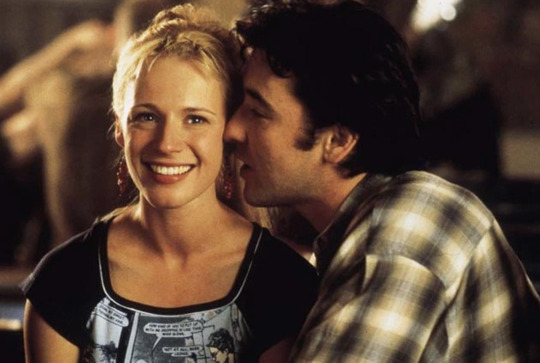
Near the end of High Fidelity, the book, after Rob and Laura have gotten back together in the aftermath of Laura’s father’s death, Hornby includes a chapter featuring five conversations between the couple unpacking the state of their relationship. During the third conversation, Rob and Laura fight about how she doesn’t care about music as strongly as he does, catalyzed by Rob’s objection to Laura liking both Solomon Burke and Art Garfunkel, which, in his mind, is a contradiction in terms. Laura finally admits that not only does she not really care about the difference between them, but that most people outside of his immediate circle of two don’t care about the difference, and that this mentality is indicative of a larger problem. It’s part of what keeps him stuck in his head and reluctant to commit to anything. “I’m just trying to wake you up,” she says. “I'm just trying to show you that you've lived half your life, but for all you've got to show for it you might as well be nineteen, and I'm not talking about money or property or furniture.”
I fell for High Fidelity (first the movie, then the book) as a younger man for the reasons I assume most sensitive-cum-oblivious, culturally preoccupied straight guys do: it accurately pinpoints a pattern of music consumption and organizationally anal-retentive behavior with which I’m intimately familiar. I spent the vast majority of my early years listening to and cataloguing albums, and when I arrived at college, I quickly fell in with a small group of like-minded music obsessives. We had very serious, very prolonged discussions filled with impossibly strong opinions about our favorite artists and records. Few new releases came and went without them being scrutinized by us, the unappreciated scholars of all that is righteous. List-making wasn’t in vogue, but there wasn’t a song that passed us by that we didn’t judge or size up. I was exposed to more music during this relatively short period of time than I likely will ever absorb again. Some of these times were the most engaging and fun of my life, and I still enjoy discussing and sharing music with close friends, but I’m not such a true believer to fully feel comfortable with this behavior. It’s not entirely healthy on its own and definitely alienating to others, and there comes a point when you hear yourself the way a stranger might, or maybe even catch a glimpse of someone’s eyes when you’re midst rant about some stupid album, and realize, “That’s all there is of me. There isn’t anything else.”
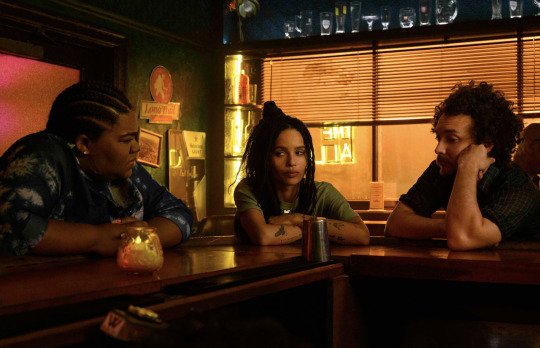
This is what Rob proclaims to Laura in the conversation when she tells him she was more interested in music during their courtship than she is now. It’s a patently self-pitying statement on his part that doesn’t go unchallenged by her in the moment or bear fruit in the rest of the novel. Yet, it’s this type of uncomfortably relatable sentiment that goes under-discussed. If High Fidelity will continue to have a life well after its cultural moment has passed, then it’s worth addressing what it offers on its own terms. Near the end of the book, Laura introduces Rob to another couple with whom he gets along quite well. When the evening comes to an end, she tells him to take a look at their record collection, and it’s predictably filled with artists he doesn’t care for, e.g. Billy Joel, Simply Red, Meat Loaf. “'Everybody's faith needs testing from time to time,” Laura tells him later when they’re alone. Amidst Rob’s self-loathing and sullen pettiness, Hornby argues that one should contribute in some way rather than only consume and that, at some point, it’s time to put away childish ideas in order to get the most out of life. It’s an entirely untrendy argument, one that goes against the nostalgic spirit of superhero films and reboot culture, but it doesn’t lack merit. Accepting that some values aren’t conducive to a full life, especially when it’s shared with someone else, doesn’t have to mean abandoning interests or becoming an entirely different person. It just means that letting go isn’t an admission of defeat.
It’s why I’ve always found the proposal scene in the film to be quite moving, albeit maybe not specifically romantic. It plays out similarly in both the book and the film, but the film has the added benefit of Cusack and Hjejle’s performances to amplify the vulnerability and shared understanding. Laura meets Rob for a drink in the afternoon where he sheepishly asks if she would like to get married. Laura bursts out laughing and says that he isn’t the safest bet considering he was making mixtapes for some reporter a few days prior. When asked what brought this on, Rob notes that he’s sick of thinking about love and settling down and marriage and wants to think about something else. (“I changed my mind. That’s the most romantic thing I’ve ever heard. I do. I will,” she sarcastically replies.) He goes on to say that he’s tired of fantasizing about other women because the fantasies have nothing to do with them and everything to do with himself and that it doesn’t exist never mind delivering on its promise. “I’m tired of it,” he says, “and I’m tired of everything else for that matter, but I don’t ever seem to get tired of you.”

This sort of anti-Jerry Maguire line would be callous if Laura didn’t basically say the same thing to him when they got back together. (“I’m too tired not to be with you.”) It’s possible to read this as an act of mutual settling, but I always thought Hornby’s point was personal growth and accepting one’s situation were intertwined. The key moment in High Fidelity, the film, comes when Laura finds Rob’s list of top five dream jobs. (In the book, Laura makes Rob compile the list.) At the bottom of the list, after such standard choices like music journalist and record producer, lies architect, a job that Rob isn’t entirely sure about anyway. (“I did put it at number five!” he insists.) Laura asks Rob the obvious question: wouldn’t you rather own your own record store than hypothetically be an architect, a job you’re not particularly enthused with anyway?
It’s Laura who convinces Rob that living the fifth-best version of your life can actually be pretty satisfying and doesn’t have to be treated like a cruel fate worse than death. Similarly, Rob and Laura both make the active decision to try to work things out instead of starting over with someone else. Laura’s apathy may have reunited them, and Rob’s apathy might have kept him from running, but it’s their shared history that keeps them together. More than the music and the romance, High Fidelity follows the necessary decisions and compromises one has to maneuver in order to grow instead of regress. “I've been letting the weather and my stomach muscles and a great chord change in a Pretenders single make up my mind for me, and I want to do it for myself,” Rob says near the end of Hornby’s novel. High Fidelity’s emotional potency lies in taking that sentiment seriously.
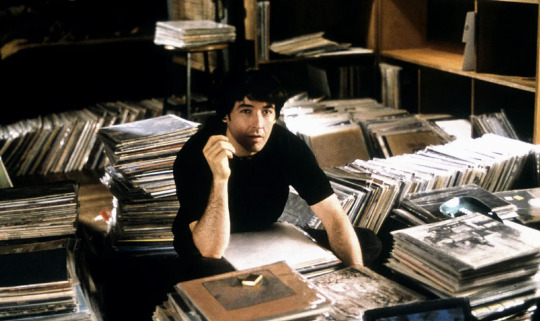
#high fidelity#nick hornby#stephen frears#john cusack#zoe kravitz#90s films#oscilloscope laboratories#musings#beastie boys#music#music movie#vinyl#vinyl film#jack black#tim robbins#adam yauch#vikram murthi#film writing#Film Criticism#hulu#reboot
40 notes
·
View notes
Text
Unbroken Windows: How New York Gentrified Itself On Screen by Jason Bailey
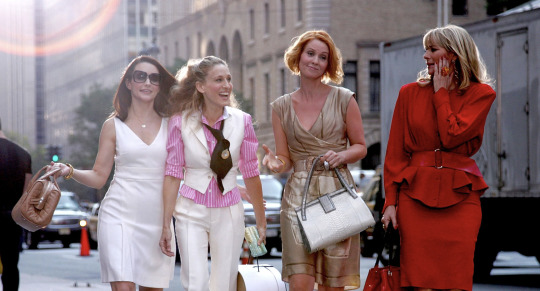
It was 1972, and Lewis Rudin had a problem—specifically, a Johnny Carson problem. Rudin, a real estate developer and committed New Yorker, had founded the Association for a Better New York (ABNY), an organization dedicated to cleaning up the city’s image (and thus, its attractiveness to corporate clients) via aggressive campaigning and spit-shine marketing; the organization was, for example, instrumental in the development of the iconic I ❤ NY campaign.
But all the good work ABNY was doing, Rudin fumed to the organization’s executive director Mary Holloway, felt like pushing Sisyphus’ boulder when he switched on NBC late at night: “How can we change the image of New York when Johnny Carson's opening monologue every night is about people getting mugged in Central Park?”
As reported by Miriam Greenberg in her book Branding New York: How a City in Crisis Was Sold to the World, Rudin went to the trouble of meeting with network heads, imploring them to pressure personalities like Carson to lighten up on the “New York City is a crime-ridden cesspool” jokes. In 1973, Mayor John Lindsay himself called network executives and even some comedians to a City Hall meeting where he made a similar plea. This was in stark contrast to the usual modus operandi of the Mayor’s Office of Film, Theatre, and Broadcasting, which prided itself on avoiding censorship or editorial interference in the making of motion pictures in the city—indeed, several of the grimmest, grimiest portraits of life in New York (Death Wish, Panic in Needle Park, Little Murders, The French Connection) were borne of this period. But people had to go out to see those. Johnny Carson came into their living room every night to tell them what a shithole New York was.
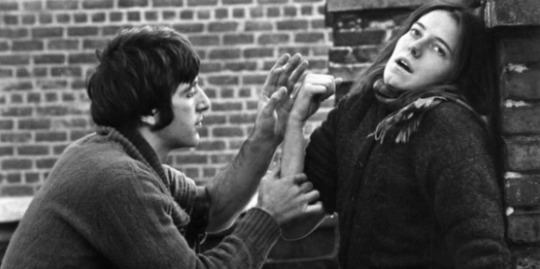
Rudin and Lindsay’s efforts were ultimately unsuccessful. Johnny Carson continued to roast the city—especially after escaping it when The Tonight Show relocated to Burbank, California in 1972—and prime-time comedies like All in the Family, Taxi, and Welcome Back, Kotter mined similar veins of urban unrest. Meanwhile, gritty crime series from Kojak to Cagney & Lacey to The Equalizer presented a similar picture of the city—dirty, grimy, and dangerous—to that of films like Taxi Driver, The Taking of Pelham One Two Three, The Warriors, and Fort Apache, The Bronx.
But in the 1990s, that all changed. And there’s a compelling case to be made that the change began with Jerry Seinfeld.
*

If we talk about Jerry Seinfeld, of course, we have to talk about Woody Allen, and not just their obvious similarities (roots in stand-up comedy, neurotic Jewish New Yorker persona, tabloid mainstay). In the 1970s and 1980s, while most New York movies were dwelling in the horrors and shortcomings of the city, Allen insulated himself in his upper-class Upper East Side neighborhood and made movies about people who were mostly untouched by crime, homelessness, and graffiti. In films like Annie Hall, Manhattan, Hannah and Her Sisters, and Crimes and Misdemeanors, Allen’s characters sip wine and trade hard truths and pointed witticisms at the city’s finest restaurants, parties, and apartments as the city burns around them; in Manhattan (which, by its own opening monologue admission, romances the city “all out of proportion”) he even edited out a joke about muggings from a Central Park carriage ride sequence, so as not to spoil the delicate mood. Allen’s New York was “not another world,” Martin Scorsese once said. “It’s another planet.”
That vision of New York—upper-crust, erudite, sophisticated—wasn’t entirely absent from the big and small screen in the ‘70s and ‘80s, thanks to films like An Unmarried Woman and Kramer Vs. Kramer, and such TV shows as Diff’rent Strokes and The Cosby Show. But Allen’s films, and even more so Rob Reiner and Nora Ephron’s Allen-esque When Harry Met Sally (a far bigger commercial success than any of Woody’s work), created a vision of comfortable, upscale, wise-cracking New York living that would reach a mass audience via Seinfeld, which debuted in 1989.
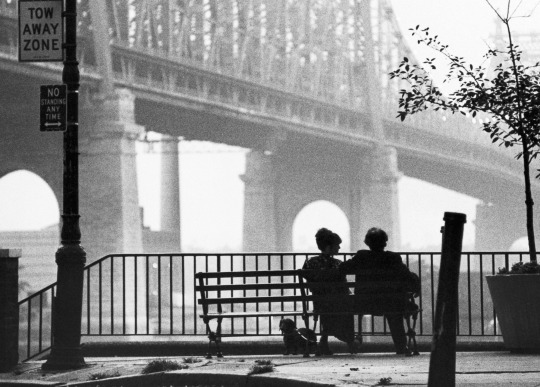
The first two brief seasons of Seinfeld (or, as it was originally titled, The Seinfeld Chronicles) struggled in the ratings, but it slowly built an audience and climbed in the Nielsens, and by season five (1993-1994) it was one of the top five shows on the air, anchoring NBC’s “Must See TV” line-up of Thursday night sitcoms. In September 1994, it was joined on Thursdays by another comedy, in which urbane New York pals joked, dated, and shared the horrors of city living. Friends, however, was a rating smash right away, and not only because of its killer schedule placement. It sanded away the rougher edges of Seinfeld; its characters were more likable (or, at least, intended to be), and its humor was less spiky. It ran even longer than Seinfeld, ten seasons, every one of them in the top ten, all but one in the top five.
*
Even as these New York comedies—and others that followed, like Mad About You, Caroline in the City, and The Single Guy—were topping the ratings, the face of the city was changing. “Don’t forget to in the late ’80s, you came off of a couple of financial crises, some bad times,” explains agent Chris Fry, of Elegran Real Estate. ”It was a little bit more affordable, things were dropping. And I think the shows that you’re talking about definitely had a positive effect on what people perceived New York City to be.”
Crime was on the decline across the country, but especially in New York City, a drop that began under Mayor David Dinkins and continued under Rudy Giuliani. The latter, in coordination with NYPD commissioner William Bratton, instituted an aggressive policy of enforcing so-called “quality of life” crimes like graffiti, turnstile-jumping, and panhandling; this philosophy, modeled on James Q. Wilson and George L. Kelling’s controversial “broken windows” theory, held that if these comparatively minor yet highly visible crimes were eradicated, the city would look clean and controlled, and thus psychologically discourage a lawlessness that would result in fewer serious offenses like murder, rape, and theft.
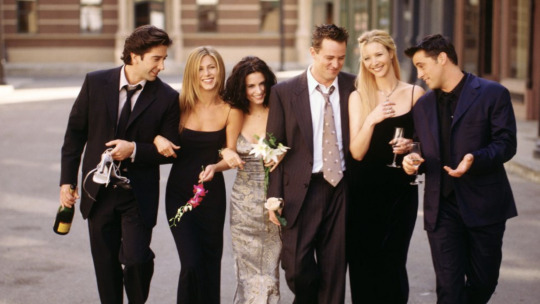
This vision of the city was certainly reflected in NBC’s Thursday night lineup. The early ‘90s comedies found fodder in the minor inconveniences of city life, but rarely trod into the seediness and crime that defined such earlier sitcoms as Night Court and Barney Miller. Paul and Jamie Buchman’s apartment wasn’t burglarized; none of the Friends were mugged in Central Park. When a blackout hit New York City in the summer of 1977, there were over one thousand fires, over 1500 damaged and/or looted stores, and nearly four thousand arrests. When a blackout hit NBC’s Thursday night New York City in the fall of 1994, Chandler Bing got trapped in an ATM vestibule with a supermodel.
If these sitcoms were the television reflection of the “broken windows” theory, their creators had a much easier time cleaning up New York City—in part because they weren’t shooting in it. Much like the films set in New York City before Mayor Lindsay established the Mayor’s Office of Film, Theatre, and Broadcasting, all of these series were shot on soundstages and backlots in California, with the exception of the occasional second-unit exterior establishing shot. So they took place in New York City, but the version of New York City they presented was highly fictionalized. Just as Paul and Jamie, Jerry and the gang, and the Central Perk crew were funnier and sharper than real New Yorkers (and lived in apartments far beyond their means), the New York they lived in was squeakier and clearer.
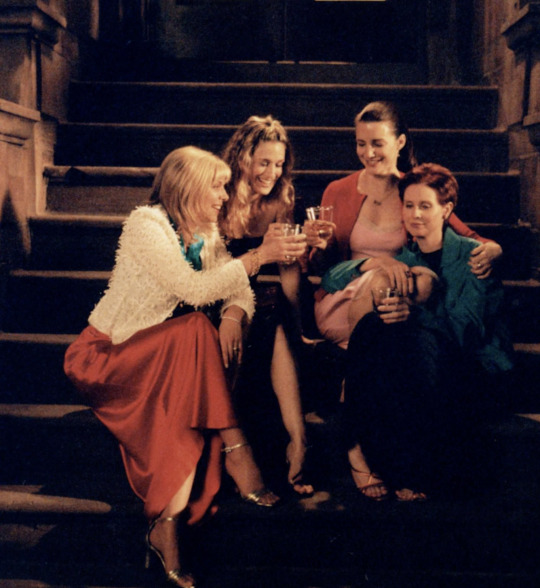
“I love Friends,” says Sire Leo Lamar-Becker, who was inspired by the shows of the ‘90s to leave California and move to New York, where he currently works in the fashion industry. “But Friends was so sterile. It didn’t feel real. And what Sex and the City offered was, I felt, a more nuanced portrayal of the city.”
Like the New York movies from the late 1960s onward, Sex and the City had the advantage of authenticity: It was shot entirely in New York, the exteriors and the sets (constructed and filmed at Silvercup Studios) and everything in between. “If you’re familiar with this series, and the movies, the city is integral to it,” explains tour guide Lou Matthews. “They've called it, like the fifth girl is the city. It's really crucial.” As a guide for the “Sex and the City Hotspots Tour,” which On Location Tours has conducted since 2001, Matthews has seen, firsthand, the psychological effect of that particular show.
“I've definitely met girls in their twenties, or maybe they’re still in college, on the tour who are saying, ‘Yeah, I fell in love with Sex in the City and New York City because of Sex in the City. And like, I’m already trying to figure out how I can get a job here.’ And then I’ve definitely met a few where the reason they moved here was because of Sex in the City, like they wanted the life that Carrie has. And here they are.”
The life they found was, in most cases, not exactly what these shows promised. “As someone who has lived here for 10 years,” laughs Lamar-Becker, “sure, there are some things that are unrealistic—like, Carrie being able to afford all her shoes. That’s unrealistic. But the feeling of the city is always captured well.”
And that indefinable but unmistakable quality, that feeling of the city, is what’s shifted most over the past quarter-century or so – through Seinfeld and Friends and Sex and the City into 30 Rock and Gossip Girl and Girls, through When Harry Met Sally and You’ve Got Mail to The Devil Wears Prada, Trainwreck, and even The Avengers. Some of that shift in public perception is merely a reflection of reality, of filmmakers and show-runners pointing their cameras at the city and capturing the gentrified, yuppified, Disney-fied mutation it’s become.
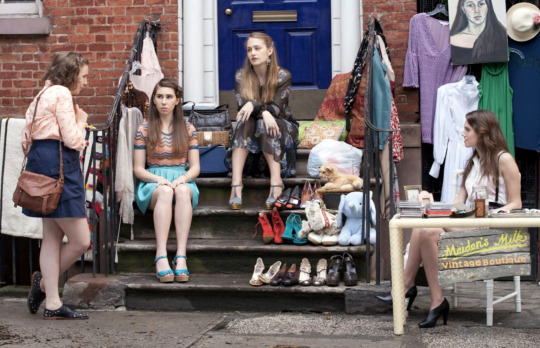
But some of that is also life imitating art. Every day, Lou Matthews’s tour bus is filled with people like Sire Leo Lamar-Becker, members of a generation of viewers whose impressions of New York were formed not by Taxi Driver and Kojak, but by the Sex and the City films and Netflix binges of Friends. They watched those shows and memorized those movies, and then migrated to New York City like so many immigrants before them. Their predecessors flocked to Ellis Island, lured by promises of a new world. These settlers came to the Magnolia Bakery, seeking not so much a new world as a better one, full of enviable careers, witty friends, and all the cosmos they could drink.
Lewis Rudin would have been proud.
#New York City#johnny carson#lewis rudin#abny#death wish#panic in needle park#little murders#the french connection#all in the family#taxi#taxi driver#welcome back kotter#the equalizer#cagney and lacey#the taking of pelham 1 2 3#the warriors#fort apache the bronx#seinfeld#woody allen#manhattan#hannah and her sisters#annie hall#crimes and misdemeanors#kramer vs kramer#an unmarried woman#martin scorsese#diffrent strokes#the cosby show#friends#sex and the city
5 notes
·
View notes
Text
The Murder Artist: Alfred Hitchcock At The End Of His Rope by Alice Stoehr

“Rope was an interesting technical experiment that I was lucky and happy to be a part of, but I don’t think it was one of Hitchcock’s better films.” So wrote Farley Granger, one of its two stars, in his memoir Include Me Out. The actor was in his early twenties when the Master of Suspense plucked him from Samuel Goldwyn’s roster. He’d star in the first production from the director’s new Transatlantic Pictures as Phillip Morgan, a pianist and co-conspirator in murder. John Dall would play his partner, homicidal mastermind Brandon Shaw. Granger had the stiff pout to Dall’s trembling smirk.
The “interesting technical experiment” was Hitchcock’s decision to shoot the film, adapted from a twenty-year-old English play, as a series of 10-minute shots stitched together into a simulated feature-length take. This allowed him to retain the stage’s spatial and temporal unities while guiding the audience with the camera’s eye. In the process, he’d embed a host of meta-textual and erotic nuances within the sinister mise-en-scène. Screenwriter Arthur Laurents (Granger’s boyfriend, for a time) updated the play’s fictionalized account of Chicagoan thrill killers Leopold and Loeb to a penthouse in late ‘40s Manhattan. There, Phillip strangles the duo’s friend David—his scream behind a curtain opens the film—immediately prior to a dinner party where they’ll serve pâté atop the box that serves as his coffin. It’s a morbid premise for a comedy of manners, and Brandon taunts his guests throughout the evening. (Asked if it’s someone’s birthday, he coyly replies, “It’s, uh, really almost the opposite.”)

Granger deemed the film lesser Hitchcock due to two limitations. One was the sheer repetition and exact blocking demanded by its formal conceit, the other the Production Code’s blanket ban on “sex perversion,” which meant tiptoeing around the fact that Brandon and Phillip—like their real-life inspirations and, to some degree, Rope’s leading men—were gay. That stringent homophobia forced Hitchcock and Laurents to convey their sexuality through ambiguity and implication; the director would use similar tactics to adapt queer writers like Daphne du Maurier and Patricia Highsmith. (“Hitchcock confessed that he actually enjoyed his negotiations with [Code honcho Joseph] Breen,” notes Thomas Doherty in the book Hollywood’s Censor. “The spirited give-and-take, said Hitchcock, possessed all the thrill of competitive horse trading.”) The nature of the characters’ relationship is hardly subtext: Rope starts with their orgasmic shudder over David’s death, then labored panting after which Brandon pulls out a cigarette and lets in some light. A few minutes later, Brandon strokes the neck of a champagne bottle; Phillip asks how he felt during the act, and he gasps “tremendously exhilarated.”
Like Brandon’s hints about the murder, the homosexuality on display is surprisingly explicit if an audience can decode it. The whole film pivots around their partnership, both criminal and domestic. In an impish bit of conflation, their scheme even stands in for “the love that dare not speak its name,” with David’s body acting as a fetish object in a sexual game no one else can perceive. The guests, as Brandon puts it, are “a dull crew,” “those idiots” who include David’s father and aunt, played by London theater veterans Cedric Hardwicke and Constance Collier. Joan Chandler and Douglas Dick, both a couple years into what would be modest careers, play David’s fiancée Janet and her ex Kenneth. Character actress Edith Evanson appears as housekeeper Mrs. Wilson, a prototype for Thelma Ritter’s Stella in Rear Window, and a top-billed James Stewart is Rupert Cadell, who once mentored the murderers in arcane philosophy.
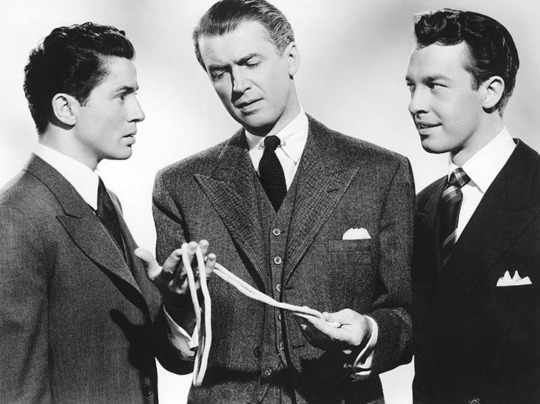
This was the first of Stewart’s four collaborations with Hitchcock. It cast the actor against type not as a romantic hero but as an observer and provocateur, his gaze shrewd, his dialogue heavy with irony. The role presaged his work in the ‘50s, with Mann rather than Capra, emphasizing psychology over ideology. Rupert, like L.B. Jeffries or Scottie Ferguson, is rooting out a crime, and in so doing comes to seem more loathsome than the villains themselves. “Murder is—or should be—an art,” he lectures midway through Rope, eyebrow arched, martini glass in hand. “Not one of the seven lively perhaps, but an art nevertheless.” Half an hour in real time later, having seen David’s body, he flies into a moralizing monologue: “You’ve given my words a meaning that I never dreamed of!” It takes up the last several minutes of the film, with Rupert snarling from deep in his righteous indignation, “Did you think you were God, Brandon?”
Stewart was a master of sputtering, impassioned oratory, and his facility for it renders Rupert’s hypocrisy especially stark. He taught these murderers; he can’t just shrug off his culpability. The Code decreed that “the sympathy of the audience shall never be thrown to the side of crime, wrongdoing, or sin.” Every transgression reaps a punishment. The ending of Rope abides by the letter of this law, as Rupert fires several shots into the night, drawing a police siren toward the building. He sits, deflated, while Phillip plays piano and Brandon has one last drink. But none of David’s loved ones get to excoriate his killers. The one man here with no integrity, no moral authority, is the one who gets the final, self-flagellating word.

The Code forbade throwing sympathy to the side of sin, but if Hitchcock meant any character in Rope as his stand-in, it was Brandon, not Rupert. The top to Phillip’s bottom, he’s the director of the play within a film. He’s storyboarded it to perfection. Janet, realizing he’s toying with her, cries that he’s incapable of just throwing a party. “No, you’d have to add something that appealed to your warped sense of humor!” Hitchcock, who’d built a corpus of corpses, must have gotten a chuckle from that line. Whereas Phillip fears discovery, Brandon puts symbolism above pragmatism, prioritizing what Phillip dubs his “neat little touches.” He needs to have dinner on the chest, the murder weapon tied around antique books, and his surrogate father Rupert in attendance, much as the film’s director needed to shoot in long takes—not because it’s pragmatic, but because it’s beautiful. He went to great lengths for verisimilar beauty here, as Steven Jacobs details in The Wrong House: The Architecture of Alfred Hitchcock. Miniatures in the three-dimensional cyclorama seen through the broad penthouse window were wired and connected to a ‘light organ’ that allowed for the gradual activation of the skyline’s thousands of lights and hundreds of neon signs. Meanwhile, spun-glass clouds were shifted by technicians from right to left during moments when the camera turned away from the window.
Jacobs notes as well that a painting by Fidelio Ponce de León hanging on Brandon and Phillip’s wall actually belonged to the director and had previously hung in his own home. Rope is avant-garde art wrapped in a bourgeois thriller, about avant-garde art wrapped in a dinner party, pushing moral and aesthetic boundaries while collapsing any distinction between the two. In this nested construction, Brandon the murder artist becomes a figure of auto-critique or perhaps apologia. Did you think you were God, Alfred? By 1948, he’d already made dozens of films, often obliquely about sex and violence, across decades and continents. He’d become the world champion sick joke raconteur. Rope is a reckoning with the ethics of his genre.
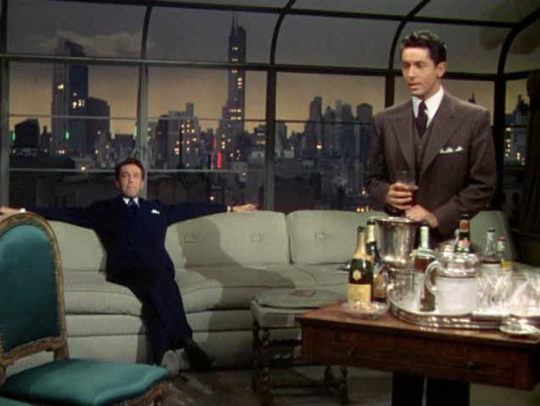
By 1948, the world had changed. A few years earlier, Hitchcock’s friend (and Rope co-producer) Sidney Bernstein had asked him to advise on a film about Germany’s newly liberated concentration camps. As Kay Gladstone writes in Holocaust and the Moving Image, Hitchcock worried that “tricky editing” would let skeptics read its footage as fraudulent and asked the editors “to use as far as possible long shots and panning shots with no cuts.” The director took his own counsel to heart.
Rope was also his first color film, the start of his fascination with dull palettes. (A quarter-century later he’d limn Frenzy’s London with every shade of beige.) Genteel browns and grays dominate the penthouse, the hues of men’s suits. Only after nightfall does the apartment glow with, in Jacobs’ phrasing, “the expressive possibilities of urban neon light.” The dinner party takes place at the crest of postwar modernity, a world away from the camps. Here, among the East Coast intelligentsia, murder’s merely a thought experiment. When David’s father mentions Hitler, Brandon dismisses him as “a paranoiac savage.” Yet even in polite society, the evening can begin with a secret killing and end with that iniquity brought to light. “Perhaps what is called civilization is hypocrisy,” says Brandon. “Perhaps,” David’s father concedes.
In 1948, the world was changing. That year saw the publication of Gore Vidal’s landmark gay novel The City and the Pillar and the first of the Kinsey Reports. Antonioni was a documentarian about to make his first feature; Truffaut was a delinquent catching Hitchcock movies at the Cinémathèque. Rope’s amorality and pitch-black humor augur a world and a cinema that were yet to come. It’s thorny gay art through a straight auteur. The film’s last thirty seconds show Rupert’s back to the camera while Brandon sips his cocktail and Phillip plays a tune, the trio lit by flashing neon. In this denouement lie decadence and damnation, art and death, the Code-closeted past and a disaffected future.
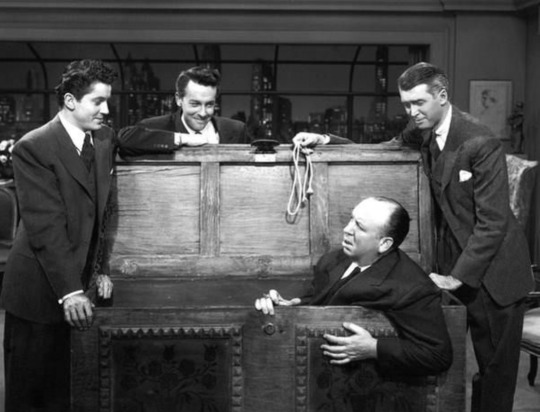
#alfred hitchcock#rope film#rope movie#hitchcock#james stewart#farley granger#john dall#gore vidal#michelangelo antonioni#francois truffaut#frenzy film#the wrong house: the architecture of alfred hitchcock#musings#film writing#film essay#oscilloscope laboratories#o-scope labs#adam yauch#Beastie Boys
53 notes
·
View notes
Text
Telling Lies In America 1985-1995: The Joe Eszterhas Era by Jessica Kiang

“Written by Joe Eszterhas” is a phrase that has not had much of a workout on US cinema screens in over twenty years—and it’s arguable whether the 1997, 19-screen nationwide release of certifiable shitshow Burn Hollywood Burn: An Alan Smithee Film exactly qualifies as “a workout.” But for those of us who had the parental training wheels come off our theatrical filmgoing in the late ‘80s or early ‘90s, there were few individuals more central to our cinematic coming-of-age. And with perhaps the sole exception of Shane Black, a different animal in any case, none of the others—the Spielbergs, Camerons, Tarantinos—were exclusively screenwriters. For over a decade, the Hungarian-born, Hollywood-minted superstar writer of Basic Instinct bestrode the adult-oriented commercial screenwriting mainstream like a smirking colossus in a tight dress wearing no underwear. And given that Hollywood is primarily how the USA, the most loudly, proudly self-created of nations, expresses itself to itself and to the rest of the world, by the man’s own bombastic standards it’s only a slight exaggeration to suggest that America, between the years of 1985 and 1995, was written by Joe Eszterhas.
But for all the dominance he exerted, the rules he rewrote and the sheer money he made, examining Eszterhas’ heyday today feels like an act of paleontology, even for those of us who lived through it. 1992 is not so very distant; in a variety of ways it is still with us. It was the year Quentin Tarantino, whose latest film is in theaters right now, broke out with his first, Reservoir Dogs. It was the year the current loathsome, racist, tinpot President of the United States made a cameo appearance in Home Alone 2: Lost in New York, back when he was merely a loathsome, racist, tinpot property tycoon. It was the year that the number one box office spot was taken by Disney’s animated Aladdin, which felt close enough in time that the live-action remake which—and I’ve checked my notes on this, apparently was a thing that happened to us in 2019—felt entirely too soon.
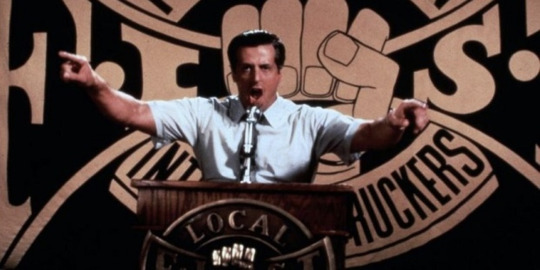
But it was also the year of Paul Verhoeven’s Basic Instinct, the sine qua non of Eszterhas-penned films. And if Sharon Stone’s lascivious leg-cross (Verhoeven’s invention, incidentally, not Eszterhas’) provided posterity with the most iconic upskirt of a blonde in a white dress since Marilyn Monroe’s encounter with a subway grate, that is largely all that remains to us of it today. Well, that and the instantly forgotten sequel (sans Eszterhasian involvement) that already seemed wildly anachronistic in 2006. The original film, its writer, the erotic thriller genre it exemplified, the dunderheaded sexual politics it upheld while attempting to subvert, the whole idea of a mainstream screenwriter having a brand at all (even one as loosely defined as “writer of films you don’t tell your parents you snuck into”), all seem like ancient relics. These are the artifacts not only of a bygone age but of an extinct genus, a whole evolutionary branch that was nipped in the bud so comprehensively that even now scientists might argue over how closely the skeletons of certain bird species resemble the bones of Basic Instinct.
This containment, however, is what makes looking back at the Eszterhas era so fascinating. His brief Hollywood hegemony is a microcosmic event in cinematic history, one with a beginning, middle, and an end (barring some late-breaking epilogue, or a post fade-to-black pan down to an ice pick under the bed). And it didn’t start with his first produced screenplay, for the leaden Sylvester Stallone truckers-union drama F.I.S.T. (Norman Jewison, 1978), although the glimmer of future feats of financial alchemy was already present in the reported $400,000 he received for the novelization. Dawn really broke for Eszterhas, as it did for three of the only other people who could legitimately be termed his peers as purveyors of massively popular, high-concept, low-brow ‘80s sensationalism (producers Don Simpson and Jerry Bruckheimer, director Adrian Lyne), with 1983’s Flashdance.
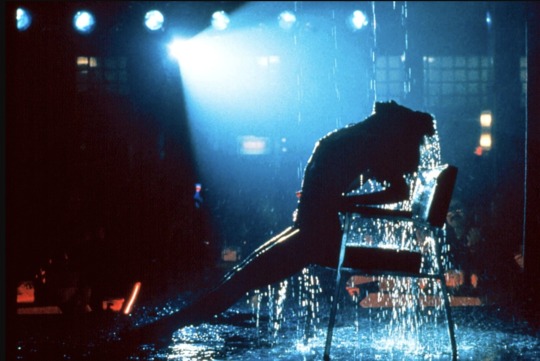
It was an improbable success, less a film than an aerobics video occasionally interrupted by some awkward sassy banter and Jennifer Beals’ popping-flashbulb smile. Its vanishingly thin story, which Eszterhas co-wrote, is of an 18-year-old welder in a steel mill, who moonlights as an exotic dancer while aspiring to become a ballerina—a logline that sounds like a hoot of derision even as an unadorned description—and is full of Eszterhasian hallmarks. There’s the high degree of preposterousness. There’s the gym scene, during which the ladies of the cast grimace and lift weights in full makeup, and while here the frictionless unreality of Lyne’s TV-commerical aesthetic makes the sequence abstract, the peculiar faith in the erotic potential of a workout would recur in the squash sequence in Jagged Edge (Richard Marqund, 1985) and the ludicrous gym date in Sliver (Phillip Noyce, 1993).
And Flashdance also prefigures almost the entire Eszterhas oeuvre in being a story that centers on a woman’s experience and that laudably—if here laughably—positions her career ambitions as at least equal to her romantic aspirations in the mechanism of the plot. But, as elsewhere, it’s a view of women constructed by a proudly unreconstructed man, directed and photographed by men. (Eszterhas’ hard-drinking, womanizing, hellraising, Hunter S. Thompson-of-the-movies persona is enjoyably self-mythologized in his memoir Hollywood Animal.) If anything, what comes across most strongly in Eszterhas’ conception of a “strong woman” is his bafflement when tasked with imagining what such a woman might have going on inside her brain. His filmography may be full of female-fronted titles, and may contain the most famous mons venus in film history, but most of Eszterhas’ work could not be more male gaze-y f it were written from the point of view of an actual phallus, like the closing chapter of his 2000 book American Rhapsody, which is narrated by Bill Clinton's penis, Willard (I am not making this up).

This powerfully eroticized dissociation, this sexualized incomprehension of women as people with interior lives, is the animating idea behind the most Eszterhasian of Eszterhas scripts. But it’s a blank space in which directors, and especially actresses, could sometimes find room to create for themselves. Sharon Stone is genuinely, in-on-the-joke fantastic in Basic Instinct—who else could have delivered “What are you going to do, charge me with smoking?” as if it were an unreturnable Wildean riposte? Costa-Gavras’ Music Box (1989) is by some distance the sturdiest and least dated of Eszterhas movies, a lot due to its comparative sexlessness, but also because of a great, warm, real performance from an Oscar-nominated Jessica Lange. Debra Winger just about wins out in her more thankless role in Costa-Gavras’ first Eszterhas collaboration, Betrayed (1988). And Glenn Close imbues the heroine of the superior thriller Jagged Edge with such shrewdness that it’s almost a liability to the believability of the central deception.
But live by the sword, die by the sword, and when the director/actress combo fails to operate in similar sympathy we get Stone horribly miscast as a… sexy wallflower?… in Sliver, or Linda Fiorentino visibly flailing as a… downtrodden femme fatale?… in Jade, or poor Elizabeth Berkley thrashing wildly about in the neon-lit swimming pool of kitsch that is Showgirls. In these failures, the writer’s almost panicky vision of women as vast, dangerous cognitive black holes is best revealed. But then, mistrust of the opposite sex is only one aspect of the wider mystery that underpins even Eszterhas’ outlier titles: his entire output is preoccupied with how little any of us can ever know anyone.
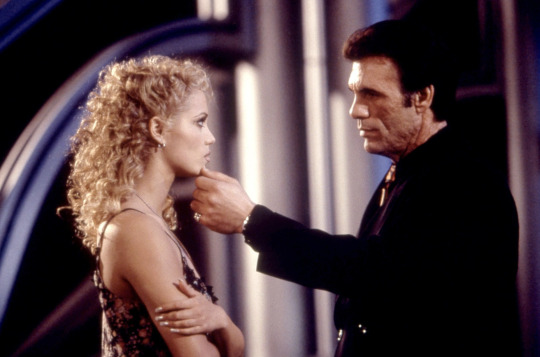
In Eszterhas’ semi-autobiographical Telling Lies In America (Guy Ferland, 1997), a teenage Hungarian immigrant (Brad Renfro) is dazzled by Kevin Bacon's smooth-talking DJ, but blindly unable to work out if he is friend or fiend. Music Box details a lawyer’s dawning disillusionment over her adored father's murderous past—eerily mirroring Eszterhas’ discovery of his own father’s collaboration with the Hungarian Nazi regime. Betrayed has Winger’s FBI agent falling for Tom Berenger’s farmer only to discover he is, in fact, the neo-Nazi she insisted to her bosses he was not, in similar vein to Jagged Edge, in which Close’s lawyer discovers that the lover she successfully defended actually dunnit after all.
Oftentimes, the credulity-stretching ambivalence of these characters is all that powers the suspense, as in the is-she-gonna-kill-him-or-is-she-just-orgasming moments in Basic Instinct. In the misbegotten Nowhere to Run (Robert Harmon, 1993) Jean-Claude Van Damme plays a ruthless ex-con turned valiant protector, his blockish inertia apparently meant to signal that inner ambiguity. More often, it leads to final-act fake-out twists so unmoored to anything like recognizable motivation that they become weirdly weightless, as in Sliver when Stone’s Carly does not know if she’s killed the right man until the final four seconds of the film, and where, had the coin-flip gone the other way, it would still be equally (un)believable.

If it’s part of the egotistical remit of the writer to believe they have an insight into human psychology, it’s remarkable how much of Eszterhas’ oeuvre pivots around how fundamentally unknowable people are to one another. And while that schtick, by which you can’t tell if someone cares for you or is simply a talented sociopathic mimic, resonated briefly at the exact moment when the grasping, solipsistic ‘80s were segueing into the untrustworthy, PR-managed ‘90s, it proved not to have much long-game sustain. Critics had always been sniffy about Eszterhas, who clearly mopped up his tears with massive wads of 100 dollar bills. But when audiences started staying away, like in the Showgirls and Jade-blighted annus horribilis of 1995, the inflationary bubble that allowed Eszterhas to command millions for two-page outlines scribbled, one suspects, on the back of strip club napkins, abruptly burst. The idea of screenwriter-as-auteur, or rather as reliable bellwether of commercial success, proved a fallacy, an expensive experiment that began and ended with Joe Eszterhas, its earliest progenitor, luckiest beneficiary, and biggest casualty.
Glossy, vacuous, adult-themed thrillers were not the only thing going on in Hollywood, and Eszterhas was not the only big-name screenwriter. Shane Black, writer of Lethal Weapon, also commanded astronomical sums for his early ‘90s scripts, but the key difference is that Black wrote in the register of the franchise-able action-spectacular blockbuster that would eventually trounce all others as the Hollywood model for the future. Black has gone on to become part of the Marvel machine as a writer and director, while aside from one Hungarian-language period film, Children of Glory (Krisztina Goda, 2006), Eszterhas’ contribution to the pop cultural landscape post-2000 has been in the form of self-aggrandizing memoirs, or highly public fallings-out with celebrities, like Mel Gibson, of a similarly corked vintage.

The tastemaker point of view has historically been to consider Eszterhas among the worst things that ever happened to Hollywood—so much so that disdain-dripping sarcasm seems to be the fallback for critics summarizing his impact. But while no one is going to make the case for the man’s filmography as some sort of artistic landmark, the Eszterhas era did represent one of the last gasps of a Hollywood that believed, however misguidedly, in personality over product, when the idiosyncrasies, idiocies and ideologies of a single person—a writer at that—could, with studio backing and a 1,500 theater release strategy, influence the cinematic development of an entire generation. That might not have seemed like a good thing but retrospect, like cocaine, is a helluva drug and in 2019, with blandly anonymous, market-tested content churned out by mega-corporations bi-weekly to siphon your hard-earneds away, the kind of salacious tackiness Eszterhas represented feels oddly adorable, even quaint. Now that singular talents—even the obnoxious and objectionable ones—who could make decent returns on mid-budget, adult-oriented mainstream fare, have been steamrollered by infantilizing, monolithic billion-dollar mega-franchises, it’s hard not to be a little nostalgic for the vanished hiccup of time when Hollywood briefly uncrossed its legs for Joe Eszterhas, and Joe Eszterhas told us all what he saw.

24 notes
·
View notes
Text
Monster In A Box: What ‘Wonder Boys’ Says About The Writing Process by Daniel Carlson
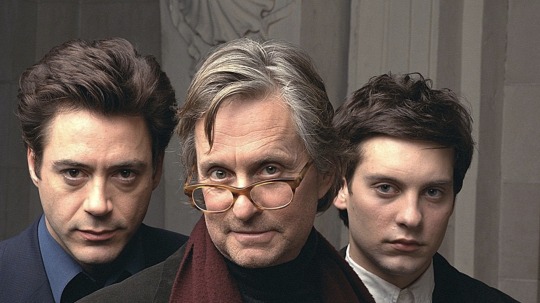
“A picture used to be a sum of additions. In my case a picture is a sum of destructions. I do a picture—then I destroy it. In the end though, nothing is lost: the red I took away from one place turns up somewhere else.” — Pablo Picasso
///
Writing is boring. Not the act itself—actually doing it can be exhilarating, your head “vibrant with the static of unelaborated thought,” as Philip Roth once described the onset of the creative process. No, it’s watching someone write that’s boring. Next time you see someone in your office crafting an email, look at the way they just kind of stare at nothing for a while, then peck at keys, then shrug and repeat the whole thing before hitting Send and going to the bathroom. It’s always like that. Half of writing is just looking off into space, trying to get ideas to come to you, which is pretty challenging to dramatize on screen. You’re watching someone think, which means you’re trying to watch something invisible.
This is why most movies about writing are actually about typing: a character banging away at a keyboard, usually during a montage, with the finished work appearing as if wished into existence. The actual process of creating—the work of mentally panning through dirt and mud and silt to find jewels worth sharing—is an internal one, which means most films focus on the product, not the process.
Curtis Hanson’s Wonder Boys, though, manages to capture the feeling of the creative process in a way that most movies don’t, and it does so by ingeniously turning that process inside out: instead of a solitary mental experience, it’s an expressive, often public one. Instead of creating silently, we hear people thinking out loud. We get a chance to see people’s creativity fire up because we can actually hear them expressing their thoughts as they come, bouncing from one to another. “Writing” becomes “creating,” and as a result, we’re able to see new things being born, words and ideas breathed into life right in front of us.
///

Wonder Boys, directed by Curtis Hanson and released to theaters in February 2000, is based on Michael Chabon’s 1995 novel, which was in turn inspired by the life of novelist Chuck Kinder. Kinder was a professor at the University of Pittsburgh, where Chabon was one of his students, and he was working on a manuscript for a novel that, at one point, stretched to three volumes of 1,000 pages each. That idea—of a writing professor pouring himself into a monster of a book with no end in sight—became the inspiration for Chabon’s character of Grady Tripp, a literature professor who hasn’t published a book in years but who’s working on a massive novel that he can’t seem to corral. Grady, played by Michael Douglas in the film, finds himself at a crossroads as he works on his bloated book, balances his relationship with a married colleague (Frances McDormand), nurtures a pair of students (Tobey Maguire and Katie Holmes), and fends off the predatory capitalistic advances of his agent (Robert Downey Jr.), all while navigating a weekend-long book festival hosted by his university.
Hanson has a few advantages, though, thanks to Chabon’s story and a smart script from Steve Kloves (writer-director of The Fabulous Baker Boys). The movie isn’t about Grady’s work on his novel as much as it is about his shambles of a life, and how his stalled-out art is a reflection of his personal inability to make choices. One brief scene of Grady working on his book, narrated so we can hear his style, is done primarily to stress the length of Grady’s manuscript. (Typing the page number in the corner, he taps three numeric keys, then checks his work and adds a fourth, sighing.)
But the other advantage is that Hanson gets to visually represent the cerebral. The movie is about creative people inspiring each other—Grady, feeling lost and alone, draws on the energy of his gifted student, James Leer (Maguire)—and we get to see that firsthand throughout the film as Grady and other writer characters ponder the inner lives of strangers around them. There’s an outstanding scene early on where Grady is meeting up with his agent, Terry (Downey), and James at a bar, and Grady and Terry get to riffing on the personal history of a man they spy at another booth. The whole clip is worth watching, but the section in question kicks in around the 2:30 mark below:
youtube
All that Grady, Terry, and James have to do is see this man in the bar to start imagining whole fictive universes for him: a name, an occupation, a troubled past. This, the movie says, is the creative process, which means that this is what it is to write: you find yourself lit by an energy you cannot name, making reality out of imagination.
Crucially, too, Hanson doesn’t fawn over Grady or any of the other characters who improvise made-up lives for people. There’s no groveling sense of watching a genius at work; no one ever says to Grady, “You’ve cracked it wide open.” Rather, there’s a sense of joyful chaos, of not quite knowing what idea will come next, that more closely approximates the creative experience. By having the creation be spoken in dialogue, we not only get to hear the ideas come to life, but we get a chance to see how these characters drive, inspire, and relate to each other. When Grady and Terry find themselves at a loss for ideas, only to have James come through with a poetic backstory for the stranger they’ve dubbed “Vernon Hardapple,” it’s not just a representation of the creative process, but a narrative moment that shows James’s skill in comparison with his teacher’s. And it all happens in about sixty seconds.
///

If it’s true that creation and destruction are related, though, then any depiction of artistry would have to also honestly reckon with that sense of loss that comes with having missed out on something big. Wonder Boys has that, too. There’s a counterpoint to the bar scene later in the film, after Grady’s suffered a literary and personal tragedy that robs him of the only copy of his manuscript. Asked what the book was about, Grady’s unable to answer anything besides “I don’t know”; when asked why he was writing something he can’t even describe or explain, he simply says, “I couldn’t stop.”
This is where the film digs even deeper into its exploration and understanding of the writing life, and of the creative process in general. It understands the obsession that borders on madness that can drive people to create, and can keep them trapped in a place of chaos out of service to an ideal they think they have to serve. The best thing for Grady would be for this behemoth of a book to be taken away from him, but he can’t see that because he’s too deep into it. He’s enslaved to the idea of the thing instead of the thing itself, so he keeps writing in hopes of finding a way out, not realizing he’s just burying himself in more pages.
His loss of the manuscript is a true blow, and a genuinely jarring and somber moment in a film that until then has mostly flirted with droll dramedy, but this moment of destruction becomes Grady’s moment of creation and renewal. He’s able to let go, to move on, and most importantly, to begin making the choices and commitments in his life that he was refusing to make. His relationships heal, his creativity returns, and life resumes humming merrily along.

#wonder boys#writing#writers#writing life#the writers life#michael douglas#tobey maguire#katie holmes#philip roth#oscilloscope laboratories#o-scope labs#musings#film writing#film essay#daniel carlson
37 notes
·
View notes
Text
Jonathan Demme’s ‘A Master Builder’ and the Elusive Magic of Bringing Stage to Screen by Tina Hassannia
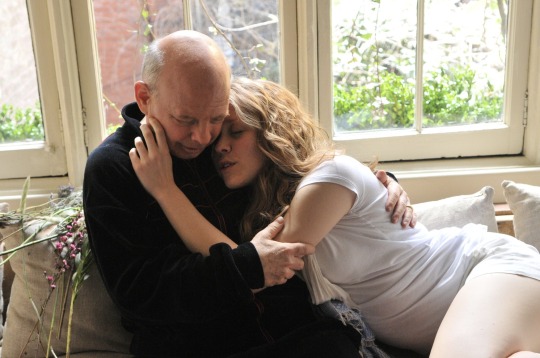
Criterion’s three-film box-set of the works of Wallace Shawn and Andre Gregory—My Dinner With Andre, Uncle Vanya, and A Master Builder—features several supplements, including an interview between the theater artists and writer Fran Lebowitz. She makes a frank confession: “I don’t like watching theater.” Gregory, a man who’s spent his entire life in the theater, says he feels the same way.
Lebowitz explains that she loves to be drawn into a good film or novel, but, with the exception of Shawn’s work, she’s never experienced the same with theater. She’s not alone. While theater may not exactly be a dying art form, it was long ago upstaged by cinema and television as our de-facto entertainment, and our appreciation for it has dwindled in kind. Theater requires us to suspend disbelief that we’re watching mere make believe, more forcefully than film, which benefits from a metaphysical distance from the viewer. Why sit through 2-3 hours of physical artifice just to see actors move through the spectrum of human emotion when there are so many easier and supposedly better options?
Those lucky enough to have witnessed really good theater know this a philistine’s line of thinking, but even so, its cultural relevance is tightly bound to its usurper, cinema: film adaptations of plays are usually better known than famous productions. (Consider the populist understanding of A Streetcar Named Desire without Marlon Brando—it doesn’t exist.) But adaptations are in essence, films, not theater. Transmitting the visceral pleasures of actual theater is nigh-impossible. If you’ve ever made the mistake of watching a recorded stage performance, you know you’re missing an essential thing privy to members of the audience. No matter the quality of the performance or camerawork, filming a play cheapens the experience. Theatricality is transmogrified into an over-exaggerated mess onscreen. The chemistry unique to each performer and audience, which gives birth to an atmospheric energy that changes with every performance, is lost.
A Master Builder director Jonathan Demme tries to describe a similar sentiment in another Criterion supplement, an interview between himself, Shawn, Gregory, and critic David Edelstein. Having seen the duo’s final production of A Master Builder —which Demme calls “literally spell-binding” and “very emotionally intense”— the director chronicles in the interview his experience watching Gregory watch the play. Having finished his part as Brovik, Gregory joined the audience, but, according to Demme, appeared to subconsciously direct the performers as if through an “energy field.”
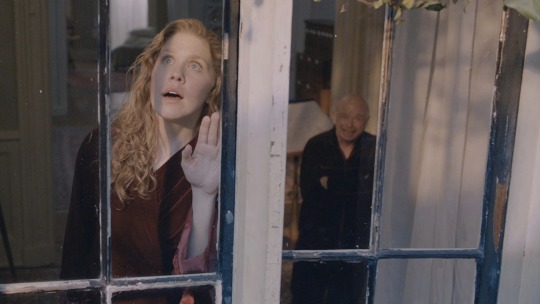
“I remember seeing his face responding to everything that was going on there and feeling the connection,” he says. Edelstein follows up with questions, as what he’s hearing sounds too “woo woo”: Were the performers looking at Gregory? Was he in their peripheral vision? … What, exactly? It’s not Demme’s fault he can’t eloquently explain the phenomenon, because words rarely do the experience of live theatre justice. It’s an inexplicable sensation that can only be experienced to be understood.
Filmmakers sometimes struggle adapting plays for the screen. Those who succeed understand the key differences between the artforms. They preserve the essence of story and drama, the play’s unique blueprint. They subtly reframe the story to be told more visually. And they honor the reality that plays are usually verbose in nature. Results have varied in quality from baffling (August: Osage County) to transcendent (Amadeus). But the outcome is usually more accomplished in the literary appreciation of theatre—say, a modern or unique interpretation of a classic text, like Orson Welles’ Macbeth—than the emulation of that woo-woo theatre magic.
And then there’s Demme. The director took on Shawn and Gregory’s third film collaboration. A Master Builder is dedicated to Louis Malle, who brought to life the actors’ long-form conversation My Dinner With Andre and their modern interpretation of Anton Chekhov’s Uncle Vanya. Demme was a perfect replacement for Malle, as they share a visual intimacy in their work. Demme also benefits from a swirling chain in his aesthetic DNA: an unparalleled gift in recording live performance that sometimes makes you feel like you’re really there, really present, inhaling the performers’ energy.
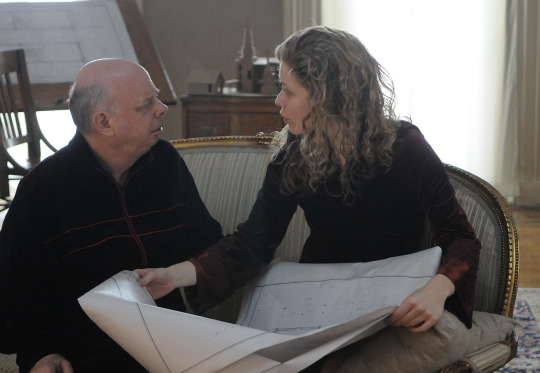
In his concert films, including the masterpiece Stop Making Sense, Demme captures both spectacle and the musicians’ shamanistic force. In Swimming in Cambodia, a kind of filmed play, for lack of a better term, it feels as if you really are watching Spalding Gray’s affecting one-man show. Demme relies on close-ups to get us as close as possible to the performer, but maintains a respectful distance. Instead of trying to direct the performers to be more naturalistic for the screen, he blends himself into their forcefield. Perhaps this is why Demme is able to transform Shawn and Gregory’s take on Henrik Ibsen’s play into something simultaneously cinematic and theatrical. The humanistic, democratic POV that Demme often brings to his work nearly elides his personal perspective, thus allowing the viewer to virtually breathe in the full depth of the performer’s space and energy.
Shawn plays Master Builder Solness, a narcissistic aging architect who won’t allow his associates Brovik (Gregory) and his younger son Ragnar (Jeff Biehl) to build anything on their own. Tensions in Solness’ personal and professional life are a direct consequence of his tight reign over his company. Suddenly a mysterious nymph-like woman named Hilde (Lisa Joyce) visits the Solness estates, and their past history is one of many contradictions the play teasingly weaves into its narrative. Through the course of their labyrinthine conversation, the viewer understands how Solness views his selfish actions, the traumatizing effect they’ve had on his loved ones, and his deceptively innocent explanation, simply imagining his success into existence.
Ibsen’s original The Master Builder is a difficult play to mount and even more trying to comprehend, full of delightful contradictions that produce different interpretations. One understanding—supported by Shawn and Gregory’s modern adaptation—is that Hilde is an imaginary figure in Solness’ death fantasy, a chance for him to reckon with his many mistakes. Shawn and Gregory crystallize Ibsen’s ambiguous magical realism into something more obvious, turning the typically physically robust Solness, who self-deprecates about his inner “trolls,” into someone who actually resembles one. (No offense to Mr. Shawn). It’s clearly intentional. He’s on his deathbed but then suddenly dashes into a spry man upon Hilde’s introduction. Their conversations are all a dream, despite seeming real. Occasionally the film interrupts their garrulous chemistry to show a more liminal headspace that very well could be reality: we hear beeping monitors and frantic nurses trying to save the comatose Solness, but all we see are Demme’s signature mobile establishing shots of trees and the architect’s many buildings.
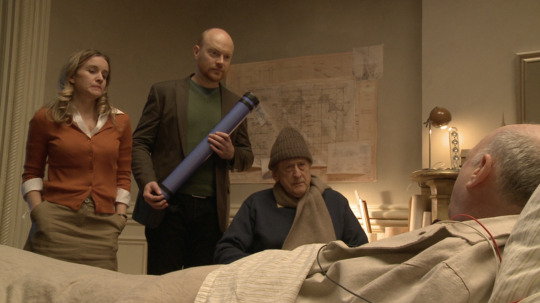
In A Master Builder, Demme gives the actors sufficient room to block their minimal but lustful action. The beautiful interior architecture provides an elegant and visually interesting complement to what is essentially a chamber drama, that most notoriously difficult kind of story to film. Demme toned down the actors’ acting so that it was suitable for the screen, as film tends to capture every minute facial twitch and shift in body language. But the actors retain a good portion of their theatricality, as it’s the play they’d been rehearsing and performing for many years. This is a rare feat in film adaptation: the preservation of theatre’s intensity and magic that piques curiosity in Ibsen’s strange little play.
The Master Builder thrives or dies on the dynamic between the actors who play Solness and Hilde; their immediate palpable chemistry is imperative to intrigue the viewer. So much of the play focuses on these two strangers oversharing personal details, a conversation that delves deeper and deeper into personal, vulnerable territory. It only makes sense for the viewer to know why these two people seemed “destined” to meet again, why we want to hear them speak at length, and with such intensity. The use of close-ups to capture Hilde’s wild-eyed fascination for her master builder, her hunger evident through body language, all seems outlandish for a long while until she reveals details of their shared history that Solness conveniently forgot. It sounds tedious but the pace is dramatic given the ugliness of their past. Until then, the viewer remains bewildered why a young, ambitious and confident woman would ever be so openly smitten by a troll.
Shawn and Gregory downplay an integral component of the story, however, to suit their “death fantasy” interpretation, for better or worse: in Ibsen’s original, it is pretty obvious Solness physically handled the 12-year-old Hilde in some inappropriate manner (according to her, he, all but a stranger to this child, kissed her on the mouth, called her a princess, and promised to build her a castle in ten years). It’s a conversation that is more grounded in the original and treated more lightly and ambiguously in this version. A practical, psychologically grounded interpretation of the original might conclude Hilde’s pursuit of her abuser is a trauma bond she never recovered from, with the “princess in the castle” fantasy carrying her through adolescence into young adulthood and here we are, ten years to the day, Hilde having found her master builder at last, so he can deliver on his promise.
But the film suggests a different understanding: here, Hilde is not so much a real character with baggage guiding her actions as she is a fantastical figure in Solness’ final reckoning with his id. While Ibsen appears to have written Hilde as something of a wild child (and there is symbolic value pointedly repeated in dialogue about her stay in the Solness residence’s empty “children’s rooms,” her presence also representing Solness’ guilt about his deceased children), Shawn and Gregory’s maximalist interpretation has Hilde literally wearing a childlike outfit. These outlandish aesthetic choices, while more acceptable in theatre, veer into ludicrousness in the subtler frame of the camera, but Demme’s setup elegantly frames it for magical realism—a form that some people have intuited was Ibsen’s real objective with The Master Builder.
One reason why this play remains a lesser produced work by the Norwegian playwright is its baffling complexity. Its many contradictions don’t offer any satisfying interpretation. One way to cut through the bullshit for a theater artist—especially one responsible for bringing it to the masses via film—is to hint heavily at their interpretation without directly spelling it out. That approach works best for two-dimensional, captured film. Otherwise the viewer may find A Master Builder, no matter how refined and well-filmed, an obfuscated maze to walk through. There’s just enough realism to make us question whether or not we are watching reality or a death fantasy. In either case, it’s a fascinating exploration of a narcissistic mind, and a gem of a play granted wider access through the medium of film.

#a master builder#the master builder#wallace shawn#andre gregory#jonathan demme#architecture#Louis Malle#swimming in cambodia#stop making sense#film#independent film#film writing#film essay#fran lebowitz#Oscilloscope Laboratories#O-Scope Labs#Beastie Boys#Adam Yauch#musings
15 notes
·
View notes
Text
Mirror, Mirror: When Movie Characters Look Back at Themselves by Sheila O’Malley

“I always feel it behind me. It’s myself. And I follow me. In silence. But I can hear it. Yes, sometimes it’s like I’m chasing myself. I want to escape from myself. But I can’t!” —Peter Lorre as child-murderer, M (1931)
There was a period in the ‘60s and ‘70s when you could barely call yourself a male movie star if you didn’t do a scene where you stared at yourself in the mirror, doing various “private” things. The device shows up before then, too, but the floodgates opened in the ‘60s and ‘70s. Meryl Streep has observed, “Often the scenes that are the most exciting, and most illuminating in film, are the ones with no dialogue…where a character is doing something alone, where the deepest most private self is revealed or explored. Exposed.”
Mirrors have multiple thematic uses (as well as the obvious directorial choice to add visual interest to the frame). But if a character is inarticulate, then seeing him “deal with” his reflection can fill in some gaps. It’s a great storytelling shortcut. If the character has a firm public “mask,” a “mirror scene” can let us see who he is when no one is watching. We all lie, to some degree, out there in the world (or on social media). We construct a “self” and a mirror scene allows the character to strip that away.
Speaking stereotypically (or, in archetypes), what is expected of male characters in terms of public persona is different from the pressures on female characters. Not better or worse, just different. Crying, showing uncertainty, weakness, vulnerability … can be a minefield. This is why the glut of male mirror scenes in the 70s makes a kind of sense: as the women’s movement rose, men began to wonder about their place, as well as buck against some of the gender norms imposed on them (or, in some cases, re-entrench said gender norms, Travis Bickle’s “You talkin’ to me” the most classic example).

Shakespeare’s use of the soliloquy—in particular for Kings and prospective Kings—could be seen as mirror scenes, with the audience as the mirror. A man goes into a private space, showing the audience things he cannot show on the battlefield or in the court. Hamlet, one of the most introverted of Shakespeare’s characters, showing non-gender-norm qualities of uncertainty and sensitivity, has a massive six soliloquies. (“O that this too too solid flesh would melt”, “O what a rogue and peasant slave am I”, “To be or not to be”, “Tis now the very witching time of night”, “Now might I do it pat” and “How all occasions do inform against me.”) It is impossible to imagine the play—or Hamlet—without them. In Richard II, after Richard is forced to surrender his crown, what is the first thing he does? Like a true narcissist, he calls for a mirror. As he stares at himself, he wonders,
“Was this face the face
That every day under his household roof
Did keep ten thousand men?”
and throws the mirror on the ground.
Mirrors are powerful and mysterious symbols. The doubling-up can mean all kinds of things. Alice steps through the looking glass into another world. Goethe’s Faust looks into the witch’s mirror and sees a beautiful woman staring back. Dorian Gray takes a mirror to compare his face with the one in the attic portrait. (Like Richard III, Dorian smashes the mirror.) A mirror is crucial in Tennyson’s “The Lady of Shalott,” where “The Lady” is cursed to view the world only through a mirror. But then Lancelot rides by and she can’t help it, she has to sneak a peek. Maybe the most famous fictional mirror is the Evil Queen’s in “Snow White,” the one she asks every day, “Mirror, mirror, on the wall, who’s the fairest of them all?” Richard III doesn’t look for a reflection of his beauty. He wonders where his “self” even is, without the crown.
An early male mirror scene—and one of the best—is Peter Lorre’s in Fritz Lang’s M (1931). Our first glimpse of Lorre’s face comes without warning. As a handwriting-analyst theorizes in voiceover about the child-killer’s psychology, we see him, staring at himself in the mirror. He pulls at his face, slowly, manipulating his mouth into a smile, trying it on for size, maybe seeing what it looks like to the children he seduces. He bugs his eyes out, turning this way, that, a maniacal presence, almost like a shark rolling its eyes backwards as it attacks. He has no sense of what human beings feel like, of what he looks like, of how to even make a facial expression. It’s one of the most chilling private moments in cinema.

Speaking of “private moments”: Constantin Stanislavski wrote a lot about how actors needed to feel “solitude in public.” He wrote: ”During a performance, before an audience of thousands, you can always enclose yourself in this circle…You can carry it with you wherever you go.” Lee Strasberg developed his “private moment exercise” to help actors achieve “solitude in public.” There are things you do when you are alone which you would stop doing if someone walked in. Maybe you sing along to the radio. Maybe you talk to yourself. Maybe you pick your nose. Maybe you do all of these things simultaneously. Our “public” selves are drilled into us from a very young age. There are “good manners,” there are “contexts” to be memorized—what flies at home will not fly outside the home. Breaking down the public face, letting an audience see who you are when you are by yourself, is part of the actor’s job. (It’s not a surprise that the '70s came to be dominated by private-moment mirror scenes, considering the influence of the Strasberg method on acting styles.)
One of the most important mirror scenes, and a huge influence on Martin Scorsese, is Marlon Brando’s in Reflections in a Golden Eye, directed by John Huston. Brando plays Major Weldon Penderton, a closeted gay man married to a frustrated, luscious Elizabeth Taylor. Late at night, Penderton sits alone, staring at pictures of naked male statues from Greek antiquity. The character lives in an almost totally male world (the military), turned on by young soldiers, and terrified of revealing himself. In one scene, alone downstairs in the house, he walks into the hall and stares at himself in the mirror. After a moment of vacuity, he begins to talk to himself, or, more vulnerably, to an imaginary other person. He pretends to respond to what the other person says, he practices laughing, and he smiles, but the smile is superimposed. He can’t get it to look real. What he says is a kind of murmur, a “pretense” of conversation. This is the kind of vulnerability Brando could achieve like no other. Without this scene, the Major could have been a caricature. All we see is his fuddy-duddy sexless stiff public mask. The mirror scene shows his confusion at how to be a man, how to navigate even a casual conversation.

Alain Delon has a stunning mirror moment in Purple Noon (1960), Rene Clement’s adaptation of Patricia Highsmith’s The Talented Mr. Ripley. Delon plays the sociopath Tom Ripley, in thrall to his casually masculine friend Philippe Greenleaf (Maurice Ronet). Delon’s chilly presence onscreen works to beautiful effect: He doesn’t show us much. But then, he tries on Philippe’s clothes, a sleek pinstripe jacket, fancy shoes. He checks himself out in the mirror. Most actors would leave it at that. But Delon understood the homoerotic implications of the script, not to mention the character’s dangerous narcissism. Delon leans into the mirror and gives himself a rapturous long kiss, slitting his eyes open at one point, to check out what he looks like.
It’s interesting to contrast this with the same scene in the 1999 adaptation, The Talented Mr. Ripley, starring Matt Damon. Director Anthony Minghella makes the subtext practically text, by placing mirrors in almost every scene (the final shot of Ripley is through a mirror). When Ripley tries on his friend’s clothes, he dances around to Bing Crosby’s “May I,” doing a vaudeville burlesque. It’s a different kind of rapture than Delon’s swooning kiss. Damon’s drag-style dance is more for the audience, an explicit display of inner gay-ness, what Ripley is hiding beneath his good-natured submissive public persona. It’s a good scene, although I prefer Delon’s. Delon’s kiss is Stanislavsky’s “public solitude”—and it shows the terrifying void within the character. There is no self. The entire world is a mirror.
In Karel Reisz’s gritty Saturday Night and Sunday Morning, Albert Finney’s Arthur, in a whirl of work, sex, and alcohol, is suddenly caught by his reflection one hungover morning. He was beat up the night before. He plays at being a sniper through his window, targeting local women with pellets. It’s a thin line between playfulness and murderous acting-out. Finney digs into this aspect of the character when he suddenly speaks to his reflection. It is a statement of bravado before descending into confusion: ”I’m me and nobody else. Whatever people say I am that’s what I am not, because they don’t know a bloody thing about me. God knows what I am.”
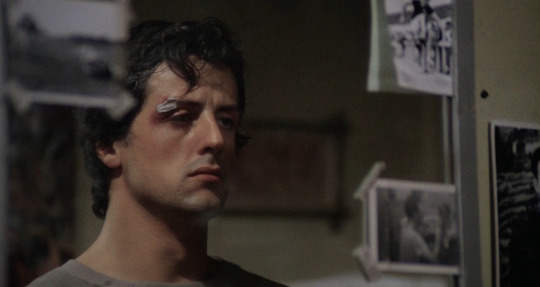
For the opening sequences of Rocky, we see Rocky Balboa’s normal “day in the life.” We are introduced to him through various public selves. But when he goes home to his dank apartment, feeding his turtles, gentle and quiet, his loneliness is so acute it reverbs off the screen. Childhood photographs of him line the mirror frame, and Rocky stares at them, his big-lug face almost crushed in disappointment. Holding a container of turtle food, he starts to talk to himself. What he’s saying doesn’t sound like anything, just private-moment murmurings, but in the next scene, when he goes to visit the girl in the pet store, it becomes clear. He was practicing a joke to tell her, a joke designed to make her laugh, show her he’s a safe person, he’s nice. Rocky practicing a joke in the mirror is one of Stallone’s most vulnerable moments as an actor (and evidence of his gift as a screenwriter).
John Travolta’s mirror moment in 1977’s Saturday Night Fever is star-making, not just because of Travolta’s almost otherworldly gorgeousness (as well as how he revels in said gorgeousness, behavior considered coded-female). Surrounded by 1970s icons—posters of Rocky, Serpico, and Farrah Fawcett—he blow-dries his hair, places gold chains around his neck, and stands like a superhero in his black speedo briefs, shot from below. Perhaps the most revealing thing about the scene is that when his father barges into the room, Travolta’s Tony Manero does not stop what he is doing. His lack of embarrassment tells us everything we need to know about the character.
Francis Ford Coppola’s epic, Apocalypse Now begins with a hallucinatory sequence showing a PTSD-rattled Martin Sheen, holed up in a hotel room in Saigon, tormented by memories. In one shocking moment, Sheen stands unsteadily, and lurches around in front of the mirror, flailing his arms out in imitation martial-arts moves, an attempt to combat his helplessness and anguish, his impotence. But the gap between reality and fantasy is too great, and he, like Richard III, smashes the mirror.
Richard Gere’s mirror moment in American Gigolo is a distant cousin of John Travolta’s. His Julian has carefully crafted an immaculate persona for his female clients, and part of the movie’s pull is watching it get stripped away. At home, Julian wanders around, practicing Swedish, working out, picking out clothes for his next appointment. He’s vain, but vanity is part of his job. Smokey Robinson’s “The Love I Saw In You Was Just a Mirage,” and it’s perfect because Julian literally is a mirage. To his clients, to himself, even. When he stands in front of the mirror, flexing his muscles, he is more Evil Queen than Richard III, a destabilizing of gender norms around male sexuality (and self-presentation) which is so much a part of the film. (When Julian meets a private detective, it’s at a joint called the Me & Me Coffee Shop. Julian’s hall of mirrors shatters by the end of American Gigolo: in the final scene, he talks to Lauren Hutton through a glass partition in prison. The mirror is no more. He can see through it now to the other person, and, crucially, he can be seen, too, as he really is.)
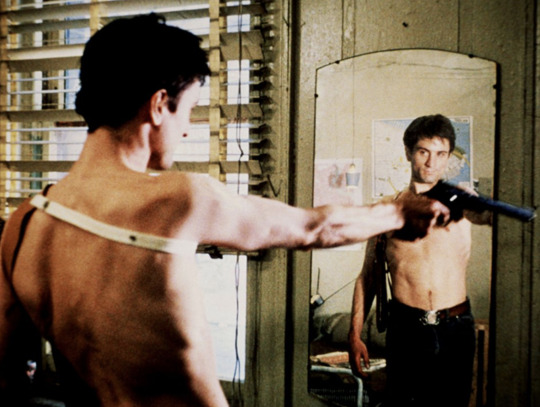
The most famous mirror moment is, of course, Robert De Niro’s in Taxi Driver. In the insomniac voiceover, his Travis Bickle says, “I think that someone should become a person like other people,” showing the character’s alienation from other humans. You aren’t already a person, to Travis: you have to become one. As Travis descends into psychosis, dreaming of 1. impressing the cool blonde (Cybill Shepherd) who rejected him after he took her to a porn movie on their first date and 2. rescuing the child prostitute Iris (Jodie Foster), he begins to amass a small arsenal, putting together boot holsters and straps to go around his wiry body. In the unforgettable moment when he checks himself out in the mirror, he goes into a zone of macho fantasy. (Schrader’s script said only “Travis speaks to himself in the mirror.” De Niro’s “You talkin’ to me” was his improvisation.) De Niro goes so far into his sense of privacy, it’s almost embarrassing to watch. And yet it’s so human, too. (If you say you’ve never talked to yourself in the mirror, or sung in the shower, you’re lying.)
De Niro’s second mirror moment is Raging Bull’s final scene, when the bloated Jake La Motta recites Marlon Brando’s “I coulda been a contender” monologue from On the Waterfront, before standing up and doing a series of “pumping up” exercises, to get ready to go onstage. (Side note: Mary Elizabeth Winstead closes out Eva Vives’ wonderful 2018 film All About Nina, about a troubled stand-up comic, with a re-creation of the scene from Raging Bull.) What’s fascinating about the Raging Bull scene is that Jake La Motta has no “self” to reveal. It’s almost like there’s no inner life at all. He doesn’t “get it.” He never did, he never will. De Niro blanks himself out in a very unnerving way, opposite to the dangerous vengeful-spirit fantasy he inhabits in Taxi Driver.
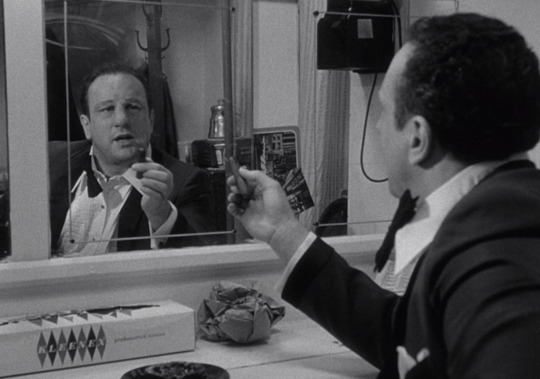
Although Walter Hill’s Johnny Handsome descends into a cliched crime movie with paper-thin characters, the opening sequences are dark, cynical, and atmospheric. Mickey Rourke plays Johnny, a man with a deformed head, an “ugly” appearance which has separated him from other humans. Reminiscent of the Joan Crawford film A Woman’s Face, a caring plastic surgeon (Forest Whittaker) offers to operate on Johnny, to give him a chance at a new life. When Rourke unwraps the bandages and sees his new face (i.e. Rourke’s real face), Rourke has a mirror moment like almost no other, a moment worthy to be placed alongside Brando’s and De Niro’s. He touches his face with wonder, bursting into tears. That’s touching enough, but then, as he glances back at Whitaker, Rourke goes deeper. A look of fear, and lifelong anguish floods his eyes, as he says, “I feel like I still have a mask on” and then, after that, Rourke goes even deeper into a maelstrom of emotion: gratitude, bafflement, awe, despair. The scene is Rourke’s finest hour.
Up until recently (with a couple of exceptions), when women stared at themselves in the mirror in the movies, it was obvious what they are doing: touching up their makeup, checking out their mask. Once again, in the 1960s and 70s, women started doing “mirror scenes” equivalent to men’s mirror scenes, where the purpose was not perfecting the public mask, but to - as Sylvia Plath wrote in her poem “Mirror” - search “my reaches for what she really is.” Faye Dunaway has a great one in Jerry Schatzberg’s Puzzle of a Downfall Child. Gena Rowlands has quite a few “mirror scenes” in the movies she did with Cassavetes (there’s a couple of stunners in Opening Night). In my favorite moment in Sofia Coppola’s The Bling Ring, after breaking into Paris Hilton’s house, Katie Chang goes into a daze of mad-woman fantasy, staring at herself in Paris’ mirror. It’s not hard to imagine the character slipping into the Manson family, if a Manson came along. She’s as blank as Jake La Motta. In La Verite’s opening scene, Brigitte Bardot stares at her face in a broken shard of a mirror, right before marching off for her court date. Her “self” is fragmented, broken. Jennifer Jason Leigh has an extraordinary extended “mirror scene” in Georgia. The moment is everything: self-hatred, rage, searching and longing, and bone-deep narcissism.

Men staring at themselves in the mirror let us into their secret worlds, their fantasies and anxieties, uncertainties and vulnerabilities. It’s not about being self-obsessed. It’s trying to find the self, the self that is not allowed free rein, be it a benign self or a malevolent one.
In Caravaggio’s “Narcissus,” Narcissus leans towards his reflection in the water, his posture pulled downwards with a seductive tug. He braces himself by his hands on the ground, and his knee, bulging out beneath his torso, is the only barrier between Narcissus and his reflection (and, perhaps, drowning). In the painting the reflection below is cut off; all we see are the forearms and that gleaming sturdy knee. Even though Narcissus’ body is barely visible, even though he’s hunched over himself, his energy is childlike, soft and open. He gives his reflection a caressing stare, a swooning look. He yields. This is not just vanity. This is something else.

#musings#film writing#film essay#oscilloscope laboratories#beastie boys#adam yauch#independent film#mirror#taxi driver#robert de niro#Martin Scorsese#american gigolo#fritz lang m#peter lorre#the bling ring#sofia coppola#shakespeare#richard ii#saturday night fever#john travolta#rocky#sylvester stallone#gena rowlands#faye dunaway#marlon brando#reflections in a golden eye#raging bull#jake lamotta#johnny handsome#mickey rourke
41 notes
·
View notes
Text
Paris sans Agnès by Andrew Lapin

It was morning in Paris when news of Agnès Varda’s death reached the world. On a hunch, I left the apartment I shared with my girlfriend in the city’s 5th arrondissement and walked the 30 minutes, past the hordes of tourists cramming into the skull-stacked Paris Catacombs, to reach Rue Daguerre in the Montparnasse neighborhood, where Varda had lived since 1951.
This is where Varda and her husband, fellow French New Wave filmmaker Jacques Demy, had purchased a derelict pink storefront and turned it into the production house Tamaris Films, later renamed Ciné-Tamaris, so they could produce Varda’s first film La Pointe Courte in 1954. The pair moved into the tucked-away apartment/studio complex and quickly became fixtures of the neighborhood, spreading art, whimsy, and cats around their tiny world (although the building’s exterior remained in poor shape, with paint perpetually peeling and the roof leaking). For the next nearly seven decades, Varda sightings on Rue Daguerre were an everyday occurrence: “the funny little woman in the red-and-white hair,” as one Parisian described her to me. It was fitting that Varda had inherited the spirit of this street from its original namesake Louis Daguerre: inventor of the daguerreotype, the first commercially available form of photographic imagery and the predecessor to the medium that Varda changed forever.

So Ciné-Tamaris seemed like the natural spot for a spontaneous Varda memorial. I arrived around 2:30 and a small crowd was beginning to gather, much of them reporters like myself, prowling the block for grieving soundbites. Flowers and handwritten notes already lined the sidewalk. Occasionally someone, usually a woman, would gingerly approach the display bearing flowers of their own; the person would pace along the length of the building for a few minutes, searching for the ideal spot, and then kneel down to place their offering among the others, so that it was visible but not too ostentatious.
Sometimes a person would reach the entrance of Varda’s sacred place and, instead of leaving flowers, ring the doorbell; immediately a young man or woman would answer the door, size up the greeter to determine if they were a close relation, and then beckon them inside, and you could make out just a glimpse of the entryway, the same one that all the lucky folks who interviewed Varda here over the years love to describe, with the prowling cats and the assorted found objects and the maze of different rooms connected by that entryway.
Others were drawn to the crowd but didn’t know what had brought us all here. “What’s going on?” one man asked me, and I answered that Agnès Varda had died. He gave a blank look; no idea who that was. I tried to explain, with my horrible French, that she was a famous Nouvelle Vague filmmaker, one of the last of her generation, but this too prompted no reaction. So I named the first title that came to my mind, which also seemed the most likely one for a Frenchman unfamiliar with the Nouvelle Vague to have seen – “Visages Villages” (Faces Places), the quirky 2017 documentary she had made with the muralist JR, in which the two had toured the countryside making art installations out of the folks they met in small French towns. It was a surprise worldwide hit, although it divided hardcore cinephiles I knew, some of whom thought the film was too cutesy and JR too posturing. At any rate, the man didn’t recognize the name. But he solemnly nodded all the same, to show he recognized someone monumental had passed, and that seemed enough, and he went on.

JR, as it happened, was presenting a massive new art installation at the Louvre that weekend. He’d covered the entire expanse of the museum’s outdoor Pyramide structure with his trademark screen-printed tarp to create an optical illusion of it rising out of a deep ravine. The effect was short-lived. Within 24 hours the tarp was being ripped up, both intentionally and not, by tourists, reminiscent of the scene in Faces Places where JR pastes a photo of Varda’s friend Guy Bourdin onto the side of a beach bunker and the tide washes it away.
Unlike her very young cohort, who often creates tactile public displays he knows will fade from view in short time, Varda herself was committed to something like the opposite: using her camera to make impermanent things permanent, to capture unusual people and their dissonant dreams on film before they faded away for good.
***
Another passerby, an older woman, was a longtime neighbor of Varda, having lived on Rue Daguerre for decades. She would see the filmmaker around all the time, she said. She most fondly recalled Varda’s 1975 documentary Daguerréotypes, in which she wandered her own street interviewing various shopkeepers and artisans, with a camera and microphone tethered back to her own house. Varda was interested in not only what these folks did for a living, but also what brought them to Paris and what they dreamt about at night. It was the ultimate “good neighbor” act, and also a convenient way for Varda to try to keep up her filmmaking output while raising young children at home.
The artisans of the type Varda profiled 44 years ago—the perfume maker, the magician, the accordion seller—have all but vanished from Rue Daguerre. And though Daguerréotypes never deviates from its pleasantly curious tone to reflect on their vanishing ranks, Varda seemed to be aware even when she was making the film that they were not long for this world. The artisan was a dying, hopelessly outclassed breed in Paris, a city that’s embraced mass-market goods and priced-out real estate like any other. Perhaps, as many critics smarter than I have noted, Varda saw a kinship in her neighbors because she, too, had devoted her life to a craft with no obvious commercial future, one that struck many outside observers as fundamentally useless.

Of all the commerce on the street today, including a comics vendor and a vegan bakery, I honed in on the most Daguerréotypes-like operation: a tiny frame shop with chipped, weathered exteriors, run by an older woman who kept the front door locked even during business hours. She opened the door for me, but when I asked her if she’d ever heard of Agnès Varda, she gave me the same blank look the man on the street had. “No, sorry,” she said, and shut it again.
Yet there was hope that Varda’s impact will be felt on generations of creative people to come. A young Parisian film student named Valentine brought a carton of seven potatoes to her house. Bending down, Valentine took out a Sharpie and scrawled one letter on each vegetable: “A-G-N-È-S.” She drew a heart on a sixth potato and laid it on top of the others, carefully propping up this tableau in the carton against the wall. The seventh potato was already shaped like a heart, and this one she let stand on its own.
Valentine had been sobbing as she did her work, but she soon grew excited to explain what she’d done. The potatoes, she said, were a tribute to Varda’s 2000 documentary The Gleaners and I, which was the first of her films that Valentine had seen and the one that made her want to make her own. In the movie, Varda had befriended various gleaners across the French countryside, communities of people who scoop up the leftover yield of a crop once it’s been abandoned by the commercial harvesters. More gleaners prowl urban centers looking for discarded food, clothes, and other scraps of life.
A rubber boots-clad dumpster diver proclaims people are “stupid” for throwing so much food away, but Varda’s never been the type to shame an audience. She’s content to open herself up to her subjects’ experiences, to glean what she can from their lives as well as her own (when she trains the camera on her own wrinkled hands and ponders the strangeness of having lived in her skin for so long). There’s a scene where Varda, delighted, gleans her own heart-shaped potatoes and holds them up for the camera: objects which no one else wanted, but which she has endowed with new purpose and clarity. After that film, “my little potato” became a common expression among the Varda family.
All three ethnographies came at very different stages of Varda’s life. She made Daguerréotypes at age 46, Gleaners at 71, Faces Places at 88. But they all concerned Varda’s efforts to ingratiate herself among the people of France, to learn more about life in her country outside of film circles. She was certainly an accomplished crafter of narrative films, as well, but it was with this unplanned trilogy that she enriched her deep bond with fans and ensured her own immortality in the French popular imagination. Besides the obvious fact of Varda’s gender, the strength she derived from simply being around other people might be what most distinguished her from Nouvelle Vague contemporaries like Godard and Truffaut, who only care(d) about the outside world inasmuch as it could be related back to their own vision of cinema. (And in Godard’s case, if that final passage of Faces Places is to be believed, the last one of the originals left standing has become impenetrable to even his oldest friends.)

Varda was 90 when she died, and much of her output at least since Gleaners centered in one way or another on her own impending death. Hell, as far back as 1962’s Cléo From 5 to 7, which centers on a pop star who awaits a possible terminal diagnosis, death and its effect on the everyday has been a major theme of her work. Thus, most of the gleaners now gathering at her residence were in agreement that today’s news, though heartbreaking, did not come as a surprise. But it did surprise Valentine. “I just saw her last week,” she said. Varda had attended the Paris premiere of her last feature, the career retrospective Varda par Agnès, and Valentine’s film class had been there to see her. The film had held its world premiere at this year’s Berlinale in February, perhaps because Varda knew even then she wouldn’t have made it all the way to Cannes in May.
How did she seem, I asked. “She looked very… tired,” one of Valentine’s friends volunteered. And now, a week later, she was gone. “I thought she was eternal,” Valentine said, shaking her head as though she knew how ridiculous that sounded. “I just wanted to thank her, I guess.”
***
Montparnasse Cemetery is situated just a few blocks north of Rue Daguerre, the final gathering spot of the French intellectual elite. Charles Baudelaire, Jean-Paul Sartre and Simone de Beauvoir are all buried here. Varda is now here, too, buried alongside Demy, as per her wishes. Their headstone now reads “Famille Demy-Varda.” It’s topped with a collection of sunflowers, another crop of significance to Varda: her 1964 drama Le Bonheur had a sunflower motif, and one of her final art projects was “The Greenhouse of Happiness,” in which she constructed a shack out of 35mm prints of the film and placed fake sunflowers within it.
The gravesite is absolutely choking on flowers, notes, and trinkets. Bouquets hail from the French elite film school La Fémis, cinema giant MK2, various museums, the Paris mayor’s office. Another from the modern tradespeople of Rue Daguerre – today’s daguerreotypes, inspired by her portraits of yesterday’s. The love is so massive it has overflown the cemetery. On a stretch of road just over the wall, the Varda grandchildren had painted every sidewalk post on the block – more than 100 – with her trademark red-and-white bob.
And along the headstone, a ring of potatoes. Varda’s harvest is over. Now it’s time to glean.

#Agnes Varda#paris#filmmaker#film director#french new wave#nouvelle vague#jacques demy#faces places#jr#cleo from 5 to 7#Daguerréotypes#oscilloscope#oscilloscope laboratories#o-scope labs#film writing#musings#film essay
11 notes
·
View notes
Text
3D, Part 2: How 3D Peaked At Its Valley by Vadim Rizov

I didn’t expect to spend Thanksgiving Weekend 2018 watching ten 3D movies: marathon viewing is not my favorite experience in general, and I haven’t spent years longing to see, say, Friday the 13th Part III, in 35mm. But a friend was visiting, from Toronto, to take advantage of this opportunity, an impressive level of dedication that seemed like something to emulate, and it’s not like I had anything better to do, so I tagged along. Said friend, Blake Williams, is an experimental filmmaker and 3D expert, a subject to which he’s devoted years of graduate research and the bulk of his movies (see Prototype if it comes to a city near you!); if I was going to choose the arbitrary age of 32 to finally take 3D seriously, I couldn’t have a better Virgil to explain what I was seeing on a technical level. My thanks to him (for getting me out there) and to the Quad Cinema for being my holiday weekend host; it was probably the best possible use of my time.
The 10-movie slate was an abridged encore presentation of this 19-film program, which I now feel like a dink for missing. What’s interesting in both is the curatorial emphasis on films from 3D’s second, theoretically most disreputable wave—‘80s movies with little to zero critical respect or profile. Noel Murray considered a good chunk of these on this site a few years ago, watching the films flat at home, noting that when viewed this way, “the plane-breaking seems all the more superfluous. (It’s also easy to spot when these moments are about to happen, because the overall image gets murkier and blurrier.)” This presumes that if you can perceive the moments where a 3D film expands its depth of field for a comin’-at-ya moment and mentally reconstruct what that would look like, that’s basically the same experience as actually seeing these effects.

Blake’s argument, which I wrestled with all weekend, is that these movies do indeed often look terrible in 2D, but 3D literally makes them better. As it turns out, this is true surprisingly often. Granted, all concerned have to know what they’re doing, otherwise the results will still be indifferent: it turns out that Friday the 13th Part III sucks no matter how you watch it, and 3D’s not a complete cure-all. This was also demonstrated by my first movie, 1995’s barely released Run For Cover, the kind of grade-Z library filler you’d expect to see sometime around 2 am on a syndicated channel. This is, ostensibly, a thriller, in which a TV news cameraman foils a terrorist plot against NYC. It features a lot of talking, scenes of Bondian villains eating Chinese takeout while plotting and/or torturing our ostensible hero, some running (non-Tom Cruise speed levels), and one The Room-caliber sex scene. Anyone who’s spent too much time mindlessly staring at the least promising option on TV has seen many movies like these. The 3D helps a little: an underdressed TV station set takes on heightened diorama qualities, making it interesting to contemplate as an inadvertent installation—the archetypal TV command room, with the bare minimum necessary signifiers in place and zero detail otherwise—rather than simply a bare-bones set. But often the camera is placed nowhere in particular, and the resulting images are negligible; in the absence of dramatic conviction or technical skill, what’s left is never close enough to camp to come back out the other side as inadvertently worthwhile. I’m glad I saw it for the sheer novelty of cameos from Ed Koch, Al Sharpton and Guardian Angels founder Curtis Sliwa—all doing their usual talking points, but in 3D! But it’s the kind of film that’s more fun to tell people about than actually watch.
But infamous punchlines Jaws 3-D and Amityville 3-D have their virtues when viewed in 3D. The former, especially, seems to be the default punching bag whenever someone wants to make the case that 3D has, and always will be, nothing but a limited gimmick upselling worthless movies. It was poorly reviewed when it came out, but the public dug it enough to make it, domestically, the 15th highest-grossing film of 1983 (between Never Say Never Again and Scarface) and justify Jaws: The Revenge. Of course I was skeptical; why wouldn’t I be? But I was sucked in by the opening credits, in which the familiar handheld-underwater-cam-as-shark POV gave way to a severed arm floating before a green “ocean.” Maybe flat it looks simply ludicrous, but the image has a compellingly Lynchian quality, as if the limb were detached from one of Twin Peaks: The Return’s more disgusting corpses, its artifice heightened and literally foregrounded, the equally artificial background setting it into greater relief.
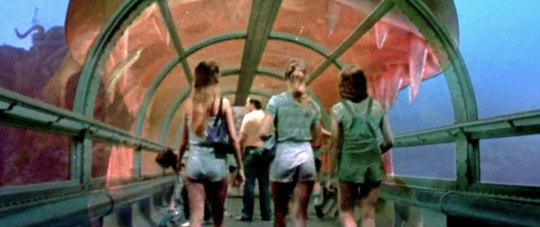
The film’s prominent SeaWorld product placement is, theoretically, ill-advised, especially in the post-Blackfish era; in practice, it’s extremely productive. The opening stretches have a lot of water-skiing; in deep 3D, the water-skiers serve as lines tracing depth towards and away from the camera over a body of water whose horizon line stretches back infinitely, producing a greater awareness of space. It reminded me of the early days of the short-lived super-widescreen format Cinerama, as described by John Belton in his academic history book Widescreen Cinema (recommended). The very first film in the format, This is Cinerama, was a travelogue whose stops included Cypress Gardens, Florida’s first commercial tourist theme park (the site is now a Legoland), which has very similar images of waterskiiers. Cinerama was, per the publicist copy Belton quotes from the period, about an experience, not a story: “Plot is replaced by audience envelopment […] the medium forces you to concentrate on something bigger than people, for it has a range of vision and sound that no other medium offers.” Cinerama promised to immerse viewers, as literalized in this delightful publicity image; Belton argues that “unlike 3-D and CinemaScope, which stressed the dramatic content of their story material and the radical new means of technology employed in production, Cinerama used a saturation advertising campaign in the newspapers and on radio to promote the ‘excitement aspects’ of the new medium.” There’s a connection here with the earliest days of silent cinema, short snippets (“actualities”) of reality, before it was decided that medium’s primary purpose was to tell a story. It didn’t have to be like that; in those opening stretches, Jaws 3-D’s lackadaisical narrative, which might play inertly on TV, recalls the 1890s, when shots of bodies of water were popular subjects. This is something I learned from a recent presentation by silent film scholar Bryony Dixon, and her reasoning makes sense. The way water moves is inherently hypnotic, and for early audiences assimilating their very first moving images, water imagery was a favorite subject. It’s only with a few years under its belt that film started making its drift towards narrative as default; inadvertently or not, Jaws 3-D is very pure in its initial presentation of water as a spectacular, non-narrative event.
If this seems like a lot of cultural and historical weight to bring to bear upon Jaws 3-D, note that it wasn’t even my favorite of the more-scorned offerings I saw that weekend, merely one that makes it easiest for me to articulate what I found compelling about the 3D immersion experience. I haven’t described the plot of Jaws 3-D at all, which is indeed perfunctory (though it was nice to learn where Deep Blue Sea cribbed a bunch of its production design from). I won’t try to rehabilitate Amityville 3-D at similar length: set aside the moronic ending and Tony Roberts’ leading turn as one of cinema’s most annoyingly waspish, unearnedly whiny divorcees, and what’s left is a surprisingly melancholy movie about the frustrations, and constant necessary repairs, of home ownership. There’s very little music and a surprising amount of silence. The most effective moment is simply Roberts going upstairs to the bathroom, where steam is hissing out for no apparent reason and he has to fix the plumbing. The camera’s planted in the hallway, not moving for any kind of emphasis as the back wall moves closer to Roberts; it doesn’t kill him and nothing comes of it, it’s just another problem to deal with (the walls, as it were, are settling), made more effective by awareness of how a space whose rules and boundaries seemed fixed is being altered, pushing air at you.

Watching a bunch of these in sequence, some clear lessons emerge: if you want to generate compelling depth by default, find an alleyway and block off the other half of the frame with a wall to present two different depths, or force protagonists to crawl through ducts or tubes. This is a good chunk of Silent Madness, a reasonably effective slasher film that, within the confines of its cheap sets and functional plotting, keeps the eye moving. It’s an unlikely candidate for a deep-dive New York Times Magazine article from the time period, which is well worth reading in full. It’s mostly about B-movies and the actresses trying to make their way up through them, though it does have this money quote from director Simon Nuchtern about why, for Bs, it’s not worth paying more for a good lead actress: “If I had 10,000 extra dollars, I’d put it into lights. Not one person is going to say, ‘Go see that movie because Lynn Redgrave is in it.’ But if we don’t have enough lights and that 3-D doesn’t pop right out at you, people are going to say, ‘Don’t see that movie because the 3-D stinks.’” Meanwhile, nobody appears to have been thinking that hard while making Friday the 13th: Part III, which contains precisely one striking image: a pan, street morning, as future teen lambs-to-the-slaughter exit their van and walk over to a friend’s house. A lens flare hits frame left, making what’s behind it briefly impossible to see: this portion of the frame is now sealed off under impermeable 2D, in contrast to the rest of the frame’s now far-more-tangible depth. The remainder of the movie makes it easy to imagine watching it on TV and clocking every obvious, poorly framed and blocked 3D effect, from spears being thrown at the camera to the inevitable yo-yo descending at the lens. (This is my least favorite 3D effect because it’s just too obvious and counterproductively makes me think of the Smothers Brothers.)

Friday the 13th was the biggest slog of the 3D weekend, and the one most clearly emulating 1981’s Comin’ at Ya! I am not going to argue for that movie, either, which is generally credited with kicking off the second 3D craze; it’s a sludgy spaghetti western that delivers exactly as its title promises, using a limited number of effects repeatedly before showing them all again in a cut-together montage at the end, lest you missed one in its first iteration. It’s exhausting and oddly joyless, but was successful enough to generate a follow-up from the same creative team. Star Tony Anthony and director Ferdinando Baldi (both veterans of second-tier spaghetti westerns) re-teamed for 1983’s Treasure of the Four Crowns, the movie which (two screenings in) rewired my brain a little and convinced me I should hang around all weekend. This is not a well-respected film, then or now: judging by IMDb user comments, most people who remember seeing it recall it playing endlessly on HBO in the ‘80s, where it did not impress them unless they were very young (and even then, perhaps not). Janet Maslin admitted to walking out on it in her review; then again, she did the same with Dawn of the Dead, and everyone loves that.
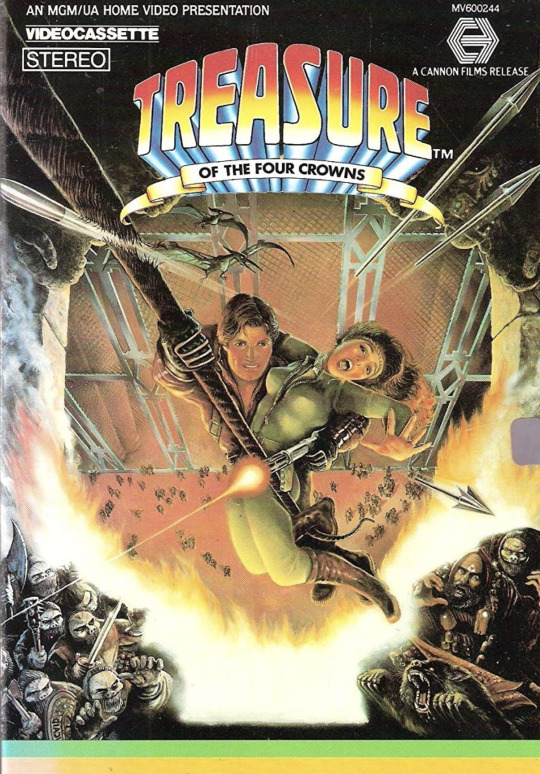
An unabashed Indiana Jones copy, Treasure begins strong with a lengthy opening sequence of tomb raider J.T. Striker (Anthony) dropping into a cave, where he’s promptly confronted not only with a bunch of traps but, for a long stretch, a small menagerie’s worth of owls, dogs, and other wildlife. There are a lot of animals, and why not? They’re fun to look at, and having them trotted out, one after another, is another link back to silent cinema; besides water, babies and animals were also popular subjects. The whole sequence ends with Striker running away from the castle above the cave, artifact retrieved, in slow-motion as Ennio Morricone’s score blares. There is, inevitably and nonsensically, a fireball that consumes the set; it unfolds luxuriously in detailed depth, the camera placed on a grassy knoll that gives us a nice angle to contemplate it looking upwards, a nearly abstract testament to the pleasures of gasoline-fueled imagery. Shortly thereafter, Striker is in some European city to sell his wares, and in every shot the camera is placed for maximum depth: in front of a small city park’s mini-waterfall, views of streets boxed in by sidewalks that narrow towards each other, each position calibrated to create a spectacular travelogue out of what’s a fairly mundane location. There’s an expository sequence where Striker and friends drop into a diner to ask about the whereabouts of another member of the crew they need to round up. Here, with the camera on one side of a bar encircling a center counter, there are something like six layers of cleanly articulated space, starting with a plant’s leaves right in front of the lens on the side, proceeding to the counter, center area, back counter, back tables and walls of the establishment. Again, the location is mundane; seeing it filleted in space so neatly is what makes it special.
The climax finally convinced me I was watching forgotten greatness. This is an elaborate heist sequence in which, of course, the floor cannot be touched, necessitating that the team perform all kinds of rappelling foolishness. At this point I thought, “the only way I could respect this movie more is if it spent 10 minutes watching them get from one side of the room to another in real time.” First, the team has to gear up, which basically means untangling a bunch of ropes—clearly not the most exciting activity. The camera is looking up, placed below a team member as they uncoil and then drop a rope towards the lens. This is a better-framed variant of the comin’-at-ya principle, but what made it exciting to me was the leisurely way it was done: no more whizzing spears, but a moment of procedural mundanity as exciting as any ostensible danger. Basic narrative film grammar is being upended here: if a rope being dropped is just as exciting as a big, fake rip-off boulder chasing our hero down the cave, then all the rules about what constitutes narrative are off—narrative and non-narrative elements have the exact same weight, and even the most mundane, A-to-B connective shot is a spectacular event.
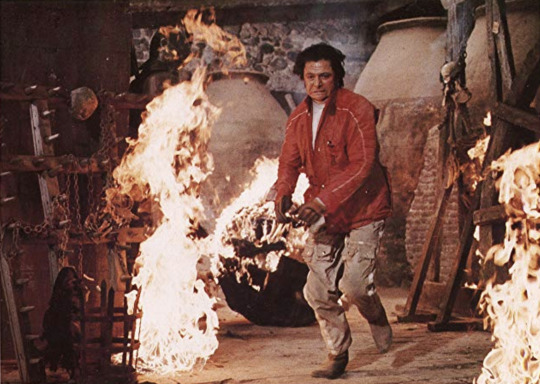
This isn’t how narrative cinema is supposed to work, and certainly not what James Cameron’s conception of good 3D proposed. The movie keeps going, building to a bizarrely grim climax involving a lot of face-melting, scored by Morricone’s oddly beatific score, which seems serenely indifferent to the grotesqueness of the images it’s accompanying. (This is a recurring trait in the composer’s ‘80s work; the score for White Dog often seems to bear no relation to the footage it’s accompanying.) That would make the movie oneiric and weirdly compelling even on a flat TV, but everything preceding convinced me: 3D can be great because it’s 3D, not because it serves a story. I’ve spent the last decade getting more angry about the format than anything, but that was a misunderstanding. Treasure of the Four Crowns is, yes, probably very unexceptional seen flat; seen in all three dimensions, it’s a demonstration of how 3D can turn banal connective tissue and routine coverage into an event. The spectacle of 3D might never have been its potential to make elaborate CG landscapes more immersive, something I still haven’t personally been convinced of; as those 19 non-CG shots in Avatar showed (undermining Cameron’s own argument!), 3D’s renderings of the real, material world and objects have yet to be fully explored. 3D’s ability to link film back to its earliest days is refreshing, in the way that any rediscovery of forgotten parts of film language can be, while also encouraging thought about all the things narrative visual language hasn’t yet explored, as if 3D could take us forwards and backwards simultaneously. In any case, I’m now won over—ten years after Avatar, but better late than never.
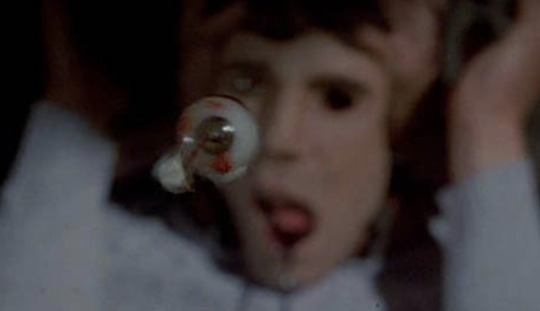
#3-d#3-d movie#3-d cinema#treasure of the four crowns#avatar#this fashion insider’s new modern engagement ring is making jaws drop#jaws 3d#friday the 13th part iii#cinemascope#cinerama#cypress gardens#widescreen#amityville 3d#scarface#never say never again#run for cover#oscilloscope laboratories#film writing#film essay#o-scope labs#musings#beastie boys
9 notes
·
View notes
Text
3D, Part 1: James Cameron and the Broken Promise of the Third Wave by Vadim Rizov
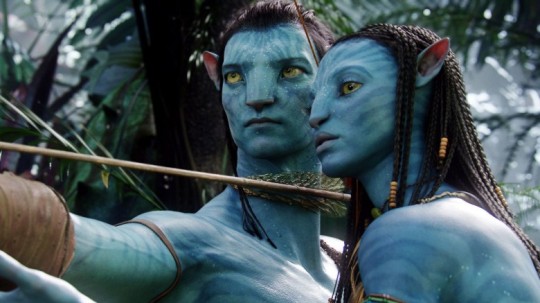
[Note: This essay is the first in a two-part series on 3D. Part 2, coming soon, will discuss the unexpected peak of 3D as an artistic form. —ed.]
It’s not fair to say that James Cameron ruined projection standards by pushing for a digital changeover—the industry impetus was already under way—but Avatar left less of an impression as a movie than as technological advocacy, resulting in unintended, still-lingering side effects. Cameron dreamed of 3D cinema arriving, finally, at what he viewed as its overdue narrative fruition; he couldn’t have imagined compromising projection standards or undermining film archiving in the process. This is a two-part essay: The first is a grim recap of the Third Wave of 3D, which has unfolded over the last decade. The second will advocate for a secret classic of 3D cinema at its inadvertently experimental peak.
****

The not-too-reductive standard narrative goes like this: 3D was popularized contemporaneously with widescreen in the ‘50s as half of a two-pronged initiative to lure audiences away from their TV screens by giving the theatrical experience something unavailable at home. By decade’s end, widescreen was normalized; ’60s and ‘70s one-offs excepted, 3D wasn’t. 1980’s Comin’ at Ya! kicked off its second wave, which had a similarly short lifespan. In both runs, 3D failed to transition from passing gimmick to standard filmmaking option, mostly due to the diminishing thrill of seeing things flying at you, but also due to technological flaws that made the results physically difficult to watch. This history’s a bit of an oversimplification: like sound, color, and widescreen (all of which were experimented with long before they became standard options), 3D had test-run incarnations well before its ‘50s boom. Still, this story is largely accurate. So what makes the third wave different?
Cameron’s ideal 3D would be to create totally immersive worlds, refusing to throw objects at viewers the way the first two 3D waves had done. These effects were presumably cheap grabs for attention, while Cameron was focused more on depth rather than breaking the proscenium. In a (troublesomely unattributed) quote from 2009, a collaborator summed up his approach: “There’s a scene early in [Avatar] where something jumps out of the screen. Jim said, `I just did that so that they would know I know how to do it. But then I stopped doing it because that’s not what 3D is; 3D is bringing the audience completely into the environment of the movie.’” Narrative disruption was not on the agenda; Cameron’s films have always followed conventional dramatic arcs, and Avatar has a particularly unchallenging (“archetypal”) story. This meant yoking 3D to digital projection, which would straighten out the format’s numerous problems once and for all by eliminating both the visual eyestrain and eyeline problems of watching 3D, either polarized (the default standard until digital) or in anaglyph (the infamous red-and-blue glasses format that became a stand-in image for the format, despite being relatively rare) and the double potential for error caused by an incompetent projectionist. Cameron had spent years preparing audiences—and, more importantly, the industry—for a digital conversion. In 2005, he, George Lucas, and Peter Jackson appeared at ShoWest, the trade theater convention to boost for 3D and, by association, digital projection. “I’m giving you guys plenty of warning,” Cameron said. “You’ve got two years to get ready.” His timeline was off, the larger idea was not: In 2009, 16,000 screens worldwide were digital-ready. The next year, that had shot up to 36,000.
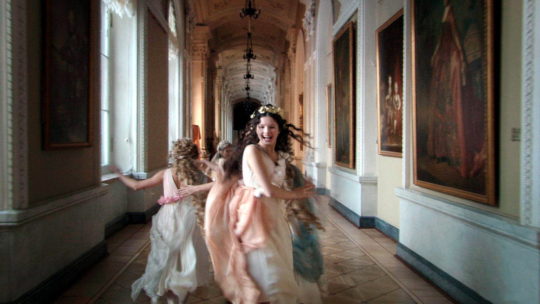
It’s not clear digital projection is the optimal way to see Avatar; the late 3D advocate Ray Zone saw the film five times in multiple formats in its first run, concluding not only that film-based IMAX 3D (with two 70mm projectors running simultaneously) was the correct way to see the film, but that “One hint that IMAX 3-D 15/70mm was the native 3-D format for Avatar was that the new large platters would only hold two hours and forty minutes of 15/70mm film—the exact running time of the film.” Nonetheless, Avatar’s overwhelming success sped up a slow-moving push to digital conversion, which the industry had been inching towards for some time. George Lucas had some digital screenings of Phantom Menace, but locally, I remember digital first rearing its head at the arthouse—specifically Austin’s long-closed four-screen Dobie Theatre, an independent that had by then been bought by Landmark Theatres. The arthouse chain went in early for digital projectors, a bright future ushered in Windows Media Player 9. (From a press release at the time: “The film is a milestone in digital origination — a genuine work of art that takes full advantage of new technology. Windows Media 9 Series will show it in all its glory.”) “We can hear the techies in the crowd oohing and ahhing already,” The Austin Chronicle’s Marc Savlov wrote. “It'll only be a matter of time before the entire industry goes digital and the notion of scratched and blotchy film and frazzled frame adjustments will seem very quaint indeed. Progress, baby. We live for it.” My first screening in that format was Russian Ark, Alexander Sokruov’s one-take Hermitage film that would have been impossible to realize on celluloid, with its inherent time limits on how long each reel can be. That projection (the Dobie was only one of four US theaters to play it that way in the film’s initial run) made sense: digital in, digital out.
Still, the stakes of first digital conversion were relatively small; Avatar’s success upped digital’s presence significantly while coupling it to 3D. This is the part that’s different: where previous pushes for 3D worked with (extensively) modified versions of existing film hardware, this time the medium’s perfection accelerated the wholesale rethinking of film production and exhibition. Striking and shipping 35mm prints was expensive, as was paying qualified projectionists, and said prints would get beat up; the longer you waited to see a film, odds were the worse it would look. And “qualified” projectionists certainly weren’t the baseline standard by any means: I remember going to see Talk to Her improperly projected in 2002, the frame misaligned so that the bottom of the frame showed as a sliver at the top from start to finish. (Here’s a much more dramatic projection fail story from back in the day; probably everyone has at least one.) As with any new tech rollout, unforeseen problems followed: smaller theaters crowdsourced funds for new projectors or risked going out of business, digital files proved anything but foolproof in practice, a push for digital archiving placed the history of film at risk as new storage formats proved highly unstable relative to well-preserved film. (This last sentence is a heavily compressed version of what David Bordwell tracked at length in his highly recommended “Pandora’s Digital Box” series.) More succinctly, this is the first time 3D introduced a specific ghost in the machine: every time you go to a multiplex to see a movie that looks way too dark, the odds are good someone left the 3D lens on, and no one’s around who can fix it or who would even care to. What started as an attempt to perfect 3D had the inadvertent effect of undoing 2D digital projection standards.
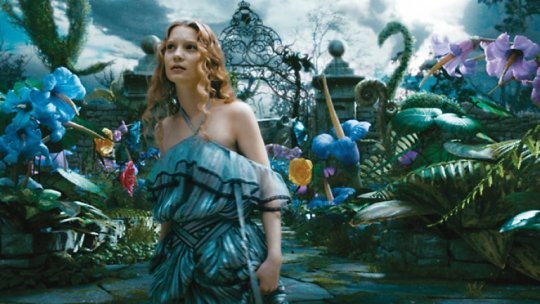
Again, none of this is directly James Cameron’s fault. He’s just the one who helped push through a change faster than it might have been implemented otherwise. Avatar’s blockbuster breakthrough was followed the next year by Alice in Wonderland, which harvested a billion-plus dollars worldwide, making the case that it didn’t matter whether 3D was native or, as in Tim Burton’s film, post-converted. Not a year later, Jeffrey Katzenberg—another 3D booster—was already worried “the bloom was off the rose” because cynical types “thought they could just deliver a kind of low-end crappy version of it, and people wouldn't care, or wouldn't know the difference.” Five years later, Katzenberg was blunter, quoting (intentionally or not) Easy Rider to convey the extent of his disappointment: “we blew it.” 3D’s never had as big a year since 2010: its revenue has declined every year since, and production of 3D films has gone down. The technology stuck, but 3D’s potential as a normative storytelling tool remains once again questionable until further notice.
Setting aside the grim trajectory of 3D’s current wave, which has seen revenue (and audience demand) for the format decrease, it’s worth reflecting on Cameron’s original idea that 3D would add “depth” to the familiar, instead of a better brand of comin-at-ya effects. For years, whenever people would ask which 3D movies I liked, I’d say Yogi Bear. This is (not entirely) a smartass answer: obviously Goodbye to Language would be a better response, but Godard sought to dismantle all 3D’s rules one event shot at a time, and no one will (be able to) follow up on its visual inquiries. Pina made visual sense (the performers are dancing outside, depth is important), Hugo looked neat, and Tron: Legacy was a cool lightshow (though that had more to do with sheer color overload and Daft Punk’s super-loud score as rendered on the biggest speakers theatrically available, and a 3D expert friend swears it has some of the worst use of the medium he’s ever seen); otherwise, my 3D sampling has mostly been review assignments of bad-looking movies. The worst are the post-converted monstrosities. A real low here was the new Pete’s Dragon, which Disney screened in 3D: it looked extremely dark, which was predictable, but worse, a bunch of shots which were clearly shallow-focus, had all been rendered as three to four separate planes of depth, casting blurry background areas in semi-sharp relief, each shot an unintentional diorama. It was sort of possible to tell what the compositional intent was, but impossible to really envision it.
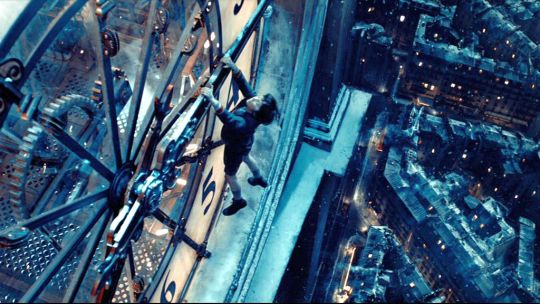
So Yogi Bear is peak 3D. Why not? At a cost of $80 million, Yogi Bear renders a depth-filled Jellystone Park entirely on par with Pandora, with all of the depth and none of the tacky colors. Both movies tell stories, both benefit from depth to spatially reconstruct a largely external environment: the differences are mostly details. In an interview Google will no longer let me find, but which I swear I remember, Cameron said only 19 shots (or thereabouts, let me hedge) in Avatar featured zero CG. These are, I presume, the shots of Jake Sully back on base; to me, they’re easily the most memorable parts of the movie, capturing the full depth of a set (and its metal walls) in a way that’s way more compelling than a fully rendered fake ecosystem . What if Cameron was wrong and 3D is, fundamentally, not just a way to enhance immersiveness but one which, when deployed in the non-CG constructed world, can recode the nuts and bolts of narrative filmmaking visual language itself? In Part II, I’ll look back at the much-derided second wave of ‘80s 3D to make the case that 1983’s Treasure of the Four Crowns, a little-regarded Raiders of the Lost Ark knock-off, is one of the format’s greatest, most progressive and inadvertently suggestive moments.

9 notes
·
View notes
Text
The Wondrous, Sensuous World of Astralvision by Charles Bramesco
You don’t find it; it finds you, most likely in the dead of night.
You can’t sleep, you may or may not be on drugs (you don’t have to be, though it’d be a lot cooler, as they say, if you were), and you’re clicking around the weirder back channels of YouTube again. You pinball from ‘80s-era NASA test footage to “36 NEW SHOWS FROM THE HELLISH MID-SEASON TV OF 1979” to the deep catalog of VHS oddities discovered and uploaded by a dedicated corps of obsolescence fetishists. It’s here, among the creepy camcorder detritus and lost video-dating profiles, that “Electric Light Voyage” has been waiting for you.
youtube
Independent video distributor Media Home Entertainment Inc. released a tape by that title in 1979, re-christened as such by the label in a likely effort to piggyback on some of the then-ubiquitous Electric Light Orchestra’s popularity. The video nevertheless begins with the original introductory card that dubs the 60-minute compilation “Ascent 1,” after flashing the retro-sleek logo of Astralvision Communications, Inc. The gap between the titles chosen by the distributor and the production house—one flashy and fun, the other chilly and practical—speaks to the dual identities of this unusual, singular work. “Electric Light Voyage” sounds like an N64 game, while “Ascent 1” nods to the project’s roots in science and experimental art. This wondrous, strange nostalgia object effectively splits the difference between those two worlds, a treat for both avant-garde aficionados and people looking for something to stare at.
The conflicting titles make it all the more difficult to ascertain information about this curio, little-seen and widely forgotten as it is. The short-lived Astralvision Communications Inc. seems to have been established for the sole purpose of assembling this collection of shorts; the Astralvision trademark lapsed after it failed to renew in the ‘80s. The end credits clarify this as a joint effort from a loose collective of video artists in the general orbit of University of Illinois at Chicago during the ‘70s. Astralvision acted as a sort of professional extension of the Electronic Visualization Laboratory—the National Lampoon to their Harvard Lampoon, if you please—an on-campus program that incubated the earliest exchanges between art and computer engineering.

The ELV had been founded by two graduates-turned-researchers, Dan Sandin and Tom DeFanti, who would each go on to fabulous success in the field. DeFanti created GRASS, the programming language that gave us Star Wars’ Death Star sequence, and Sandin invented the Sandin Image Processor, a device that “drew” visual patterns the way a Moog “plays” sound. A young woman named Barbara Sykes learned of their Electronic Visualization Events—brain-expanding live performances of video and audio synthesizing in real time—and started to attend during her time at the university. She would become their most brilliant student and valued collaborator, credited here with “Video Synthesis” on multiple segments. The trio contributed the lion’s share of the work that ultimately made up “Electric Light Voyage”/“Ascent 1,” and in packaging their esoterica for public exhibition, they opened a direct portal from their technological be-ins and the museum galleries they later occupied to after-dark living rooms across America.
So, uh, what is it? Sykes, Sandin, DeFanti, and their cohort may not have been the very first video artists, and they were far from the first experimental filmmakers, but they did pioneer a new form borrowing liberally from both of those traditions. The Sandin Image Processor, the implement of choice on most of the included shorts, brought abstract expressionism into the virtual plane. Twiddling the right knob or turning the right dial on a physical panel sends a signal through a number of filters that can alter the shape, color, and motion of the feedback pattern. The description on the back of the VHS box offers a somewhat snappier explanation:
This 60-minute electronic fantasy featuring computer animation can control and change your moods of elation and tranquility. To change or enhance your mood, simply play a musical selection that accompanies your present feeling – it’s mesmerizing! The abstract colorized computer animated visuals are artfully paced with their complimentary soundtrack. Images explode with color while soothing with flowing shapes and rhythms. Great for parties or individual contemplation.
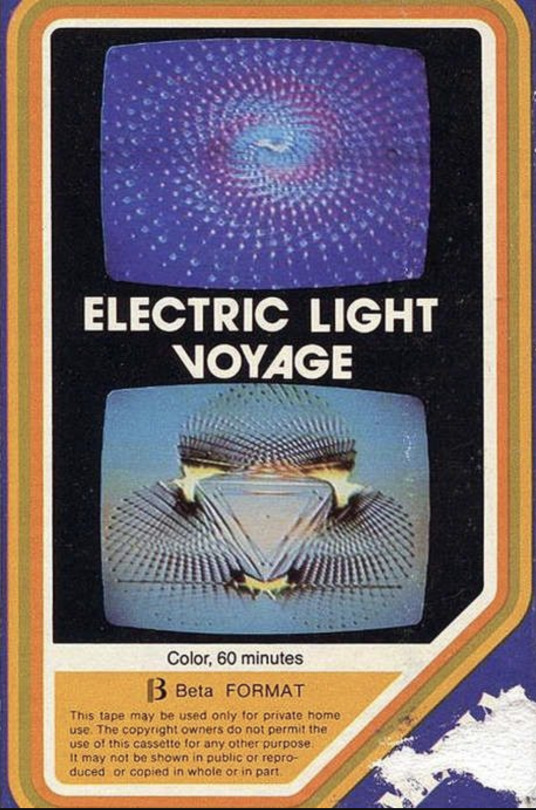
In other words, it may not have been a coincidence that DeFanti named his most significant innovation after a slang term for marijuana. A viewer can nearly smell the reek of cannabis wafting out of the psychedelic swirls, begging as they are for the overtaxed descriptor of “trippy.” But there’s more to it than, say, the iTunes Visualizer. Though that program serves a similar function, creating a pleasing computerized light show for anyone looking to zone out, the methods at use in “Ascent 1” are more sophisticated in their deliberateness. The Visualizer employs a code to generate a randomized series of neon-colored portals that shiver along with the beat of whatever song’s being played; each segment of “Ascent 1” encompasses a carefully plotted journey with timed peaks and valleys. (Oh, so that’s why they call it a trip!)
Functionally speaking, it’s much closer to something like Plantasia, precisely due to its nature as a functional artwork. Synthesizer virtuoso Mort Garson composed that 1976 album for the express purpose of accelerating houseplant growth, and the Astralvision house went about their process with a utilitarian bent as well. They believed that visual and aural stimuli could have an immediate, visceral effect on a person’s physical and mental state. Drug users just happen to be particularly susceptible to a phenomenon the creators wanted to share with everyone, in which feelings of anxiety and unease can be dissolved via sensory triggers. The technique is far from airtight—the highly subjective effects of drug use mean one person’s good vibe could be someone else’s hell-abyss—but it’s affective and effective all the same. Sober or no, fully engaging with the images flushes out everything else and casts a therapeutic spell. The tape hiss makes the rest of the world fall silent.

The ambitious terms of the project’s conception shouldn’t detract from its merit as an artwork for its own sake, however. Each short tests the limits of a medium then in its nascency, somewhere between the first tinkering and complete mastery of such devices as the Image Processor. The engineers conducted wild stylistic experiments playing primal forces against one another: music vs. noise (and within that, organic instruments vs. the synthesizer’s various blips), stillness vs. movement, color vs. shape. Bob Snyder and Michael Sterling’s scores move freely between industrial sound effects, synthetic whalesong, Moog tinkering, and free-form electric piano. Of the many new frontiers charted, most fascinating among them may be the full elimination of editing; images melt into one another, legato light fades and mutating geometric forms taking the place of cuts.
The attempts to induce a sort of artificial synesthesia were not without a textual content, either. Though none of the shorts even comes close to anything that could be charitably called a story, they do occasionally sketch variations on a single theme, not unlike the jazz accompanying some of the segments. Sykes took the lead on the first two segments, “By the Crimson Bands of Cyttorak” and Circle 9 Sunrise,” both compositions originating during the Electronic Visualization Events. Her later work would engage with feminine imagery in a more concrete capacity, focusing on Athena and Amazons and their mythical ilk. Still, look closely and the beginnings of her interest reveal themselves in the curvaceous, vaguely yonic linework. Sandin and DeFanti share credit on “Spiral Ryral,” which contrasts a Warholian silhouette of a humanoid figure with rows of spermatozoa wriggling in the background. Symbolic iconography nudges the wandering brain in this direction or that, and it floats along with the onscreen tide.
Even as they fall under its hypnotic sway, modern audiences cannot help but approach this vintage find from an anthropological remove. Animation ages differently than live-action cinema, and computer animation’s no exception. The Internet’s now full of videos toying with sensation using fractal imagery — there’s an argument to be made that the Astralvision house came up with ASMR decades ahead of schedule — but there’s an engrossing primitivism to “Ascent 1” that can’t be found elsewhere. It’s in league with Carl Theodor Dreyer’s Vampyr, or Pete Drake’s trial runs with the talkbox: a vision of the future now rooted in the past. “Ascent 1” suggests a daring vision of an art form's possible future that's all the most intriguing for only getting it right a little. Sykes, DeFanti, and Sandin’s compositions presage the advent of the screensaver, and yet they unmistakably belong to the past of laser Floyd shows and industry-standard cassette use. It’s in the intangible elements: the crackly edges of the robot hymns on the soundtrack, the soft-definition fuzziness that recalls both the filmstrip’s warm grain and the antiseptic sheen of videotape. Not quite analog and not quite digital, crude and wondrous, “Ascent 1” is a window to a time when computer technology was still unsettled territory. In the melodies and murals of machines, we hear the pre-verbal burblings of a medium.

#Astralvision#Vampyr#asmr#visual asmr#asmr video#ASCENT1#psychedelic#computer animation#1970s computer#vintage visuals#vintage video#plantasia#Mort Garson#Oscilloscope laboratories#oscopelabs#musings#film writing#film essay#experimental film#digital film effects
5 notes
·
View notes
Text
Elvis, Truelove and the Stolen Boy: The Tragic Machismo of Nick Cassavetes’ ‘Alpha Dog’ by Amy Nicholson
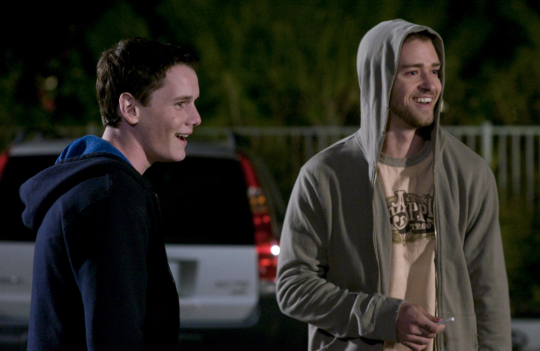
[Last year, Musings paid homage to Produced and Abandoned: The Best Films You’ve Never Seen, a review anthology from the National Society of Film Critics that championed studio orphans from the ‘70s and ‘80s. In the days before the Internet, young cinephiles like myself relied on reference books and anthologies to lead us to films we might not have discovered otherwise. Released in 1990, Produced and Abandoned was a foundational piece of work, introducing me to such wonders as Cutter’s Way, Lost in America, High Tide, Choose Me, Housekeeping, and Fat City. (You can find the full list of entries here.) Our first round of Produced and Abandoned essays included Angelica Jade Bastién on By the Sea, Mike D’Angelo on The Counselor, Judy Berman on Velvet Goldmine, and Keith Phipps on O.C. and Stiggs. Today, Musings concludes our month-long round of essays about tarnished gems, in the hope they’ll get a second look. Or, more likely, a first. —Scott Tobias, editor.]
A decade before the presidency that elevated insults like “betacuck” and “soyboy” into political discourse, Nick Cassavetes made Alpha Dog, a cautionary tragedy about masculinity that audiences ignored. Time for a reappraisal. Alpha Dog is about a real murder. Over a three-day weekend in August of 2000, 15-year-old Zach Mazursky—in reality, named Nicholas Markowitz—is kidnapped and killed by the posse of 20-year-old San Fernando Valley drug dealer Johnny Truelove (Emile Hirsch) with a grudge against Zach’s older brother. No one thought the boy would die, not his main babysitter Frankie (Justin Timberlake), not the girls invited to party with “Stolen Boy,” and not even the boy himself, played with naive perfection by Anton Yelchin, who played video games and pounded beers assuming that his new captor-friends would eventually take him home.
Cassavetes’ daughter went to the same high school as Nicholas Markowitz. The murderers were neighborhood kids and he wanted to understand how fortunate sons with their whole lives ahead of them wound up in prison. The trigger man, Ryan Hoyt—“Elvis” in the film—had never even gotten a speeding ticket. Prosecutor Ron Zonen hoped the publicity around Alpha Dog would help the public spot the real-life Johnny, named Jesse James Hollywood, who was still on the lam despite being one of America’s Most Wanted. So the lawyers gave Cassavetes access to everything: crime scene photos, trial transcripts, psychological profiles, police reports, and their permission to contact the criminals and their parents. Cassavetes even took his actors to meet their counterparts, driving Justin Timberlake to a maximum security prison to get the vibe of the actual Frankie, and introducing Sharon Stone to Nicholas Markowitz’s mother, a broken woman who attempted suicide a dozen times in the years after her son's death.
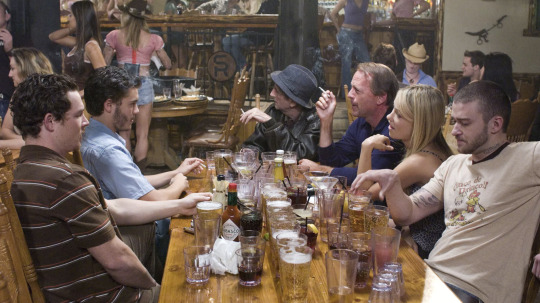
Alpha Dog, pronounced Cassavetes, was “95 percent accurate.” Which was part of why it got buried, thanks to Jesse James Hollywood’s arrest just weeks after the film wrapped. Cassavetes hastily wrote a new ending to the movie, but his problems were just beginning. Hollywood’s lawyers insisted Alpha Dog would prevent their client from getting a fair trial, and used the threat of a mistrial to force Zonen off the case. “I don't know what Zonen was thinking, handing over the files,” gloated Hollywood’s defense team. “It was stupid.”
The publicity, and the delays, dragged out the pain for Markowitz’s family, especially when they heard Cassavetes had paid Hollywood’s father an, er, consulting fee. “Where is the justice in that?” asked the victim's brother. “This just goes on and on, and I’m spending my whole life in a courtroom.”
The film, too, was pushed back a year from its Sundance premiere. Despite casting a visionary young ensemble—Alpha Dog was my own introduction to Yelchin, Ben Foster, Olivia Wilde, Amanda Seyfried, Amber Heard, and the realization that Timberlake, that kid from N*SYNC, could actually act—no one noticed when it slid into theaters in January of 2007. It wasn’t just the bad press. It was that audiences couldn’t get past that Cassavetes’ last film was The Notebook. No way could the guy behind the biggest romantic weepy of a generation make something raw and cool.
But he had. Alpha Dog is a stunning movie about machismo and fate, two tag-team traits that destroy lives. Think Oedipus convincing himself he can outwit the oracle of Delphi. But Sophocles’ Oedipus telegraphs its intentions, elbowing the audience to see the end at the beginning. Greeks sitting down in 405 BC knew they were watching a tale that came full circle. Every step Oedipus takes away from his patricidal destiny just moves him closer to it.

If you map Alpha Dog’s script, instead of a loop, it looks like a horizontal line that plummets off a cliff. For most of its running time, Alpha Dog could pass for a coming-of-age flick where a sheltered kid with an over-protective mom (Sharon Stone) taps into his own self-confidence, right up until the scene where he tumbles into his own grave. Audiences who’d missed the news articles about the case weren’t clued into the climax. Cassavetes doesn’t offer any hints or flash-forwards, not even an ominous “based-on-a-true-story.” (The film might have been more successful if he had.) Instead, he lulls you into joining the kegger, watching Zach crack open beer after beer as though he expects to live forever. “There’s a movie sensibility that the film doesn’t conform to,” said Cassavetes. “You don’t watch this film. You endure it.”
As Zach, his eyes red-rimmed from bong rips, not tears, is shuttled between party dens and wealthy homes, he’s given several chances to escape. He’s even revealed to be a Tae Kwan Do blackbelt who can jokingly flip his captor-buddy Frankie (Justin Timberlake) into a bathtub. But Zach stays put—he doesn’t want to get his big brother Jake (Ben Foster) in more trouble, not realizing that Johnny is too busy making nervous phone calls to his lawyer and his aggro father Sonny (Bruce Willis) to get around to asking Jake for the $1200 in ransom money.
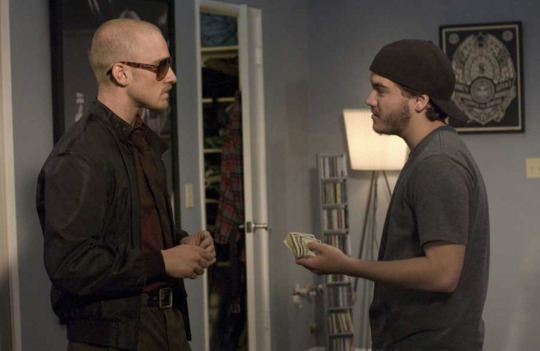
Zach’s death is disorienting, almost as if Psycho's Marion Crane got murdered in the second-to-last reel. In a minivan en route to his execution, he innocently tells Frankie he wants learn to play guitar. “It bugs me that I don’t know how to do anything,” he sighs. Meanwhile Johnny assures his dad that there’s no need to call off the killing. “These guys are such fuck-ups, nothing's gonna happen,” he shrugs, a rare example of cross-cutting that defuses tension in order to make the shock of the gunfire even worse. Up until the last second—even after Frankie binds him with duct tape—a sobbing Zach still can’t believe Frankie would hurt him, and honestly, Frankie can’t believe it himself. And Yelchin’s own early death makes you ache for him to get a happy ending, which Cassavetes dangles just out of reach.
This is how evil happens, says Cassavetes. Masterminds are rare. Instead, people like Frankie can be basically good, but can also be panicky and passive and selfish. Shoving Zach in Johnny’s van was an idiotic impulse by upper middle-class kids, who flipped out when they realized the snatching could get them a lifetime sentence. There’s no honor or glory in the violence. Johnny, the cowardly ringleader, talks tough, but orders his most craven friend, Elvis (Shawn Hatosy), to pull the trigger while he and his girlfriend Angela (Olivia Wilde) get drunk on margaritas. And after the murder, one side effect is that Johnny can’t get an erection. When Angela tries to get Johnny in the mood in their hideout motel, the walls close in on him, suffocating the mood.
Away from his boys, Johnny is weak. Surrounded by them, he's the king. Alpha Dog sets up a culture of animalistic dominance. Johnny’s rental house is basically a primate cage at the zoo, only decorated with weight benches and Scarface posters. All of Johnny’s boys jockey to be his favorite and tear each other down in order to bump up their own rank. Kindness is weakness. When a fellow dealer with the ridiculous nickname Bobby 911 cruises by to negotiate a sale, he snarls at a guy who vouches for him: “You don’t need to tell him I’m good for it, man!”
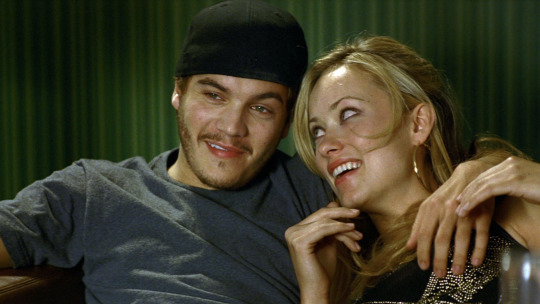
Elvis, the future shooter, is the lowest member of the pack. He can’t ease into the group without Johnny ordering him to go pick up his pit-bull's poop in the backyard. Why do they pick on Elvis? He owes Johnny a bit of money, but the source of the scorn is simply group think. No one wants to be nice to the outcast, and Elvis is just too sincere to be taken seriously. When Elvis offers to get Johnny a beer, the guys tease him for being in love with Johnny. When he says sure, he does care about Johnny, they twist words into a gay panic joke. Elvis can’t win—they won’t let him—so he literally kills to prove his worth, and winds up sentenced to death row, where the real boy, just 21 at the time of the shooting, remains today. Another life wasted.
Cassavetes humanizes the killers because he wants us to understand how their micro decisions add up to murder. Not just the gunmen. Everyone’s a little to blame. The kids who got drunk with “Stolen Boy” and didn’t call the police. The girls who told Zach that being kidnapped made him sexy. Even Zach’s older step-brother Jake, an addict with a twitchy temper who escalates his war with Johnny to a fatal breaking point. Neither boy will back down over a $1200 debt, and there’s an awful split screen call when Johnny dials Jake intending to bring Zach home, but Jake is so boiling over with anger, his Bugs Bunny voice shrieking with outrage, that Johnny just hangs up the phone.
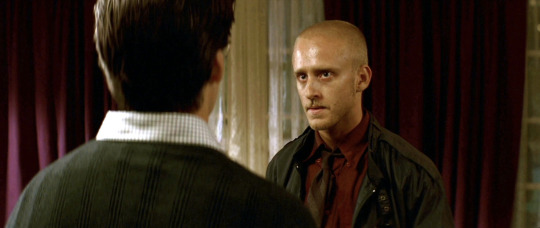
The opening credits, a montage of the cast’s own old home videos, underline that these were young and happy children—the kind of kids people point to as examples of the suburban American ideal. Over a treacly cover of “Somewhere Over the Rainbow,” we watch these real life boys being cultured to be brave: riding bikes, falling off dive-boards, running around with toy guns, going through the rituals of young manhood, from bar mitzvahs to karate lessons. Yelchin—recognizably dark-eyed and solemn even as a toddler—grins wearing plastic vampire teeth.
It takes another ten minutes for Yelchin’s character to sneak into the film sideways in a profile shot eating dinner with his parents, played by Sharon Stone and David Thornton. His Zach is barely even visible as brash Jake barges into the scene to beg for money. They say no, Jake stomps out, and Zach finally makes himself seen when he runs after his brother, begging to go anywhere less suffocating. Zach’s mom loves him so much that she watches him sleep. “I’m not fucking eight!” he yelps. He’s 15—practically a man, in his own imagination—and desperate to get away, even if it means mimicking Jake, a Jewish kid who’s so scrambled that he has a Hebrew tattoo on his clavicle and a swastika inked on his back. Jake starts to say that he wishes his own mom cared about him that much, but as soon as he gets vulnerable, he spins the moment into a joke. “Boo for me,” Jake grins, and takes another swig of beer.
“You could say it’s about drugs or guns or disaffected youth, but this whole thing is about parenting,” grunts Bruce Willis’ Sonny Truelove. “It’s about taking care of your children. You take care of yours, I take care of mine.” He’s half-right—his parenting is half to blame. Sonny and his best friend Cosmo (Harry Dean Stanton) taught Johnny to bully his friends. Cosmo, looking haggard and hollow, mocks Johnny for having one girlfriend. “You gotta plow some fucking fields,” he bellows. “Men are not supposed to be monopolous!” Not that “monopolous” is a real word, and not that Cosmo fends off women himself, except in his own big talk.
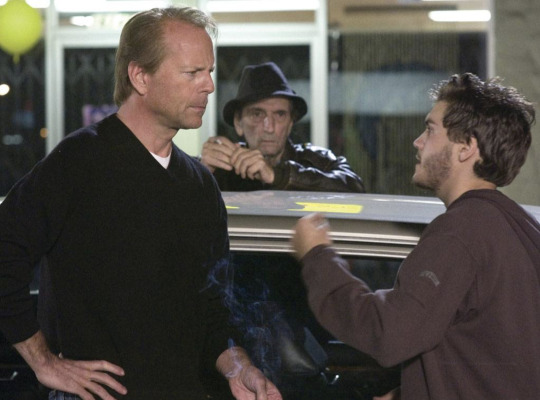
Cosmo and Sonny’s own posturing gradually emerges as being more dangerous than Johnny’s because it's more integrated into society. They’re the type of creeps who rewrite the rulebook to suit them, and attack journalists who try to tell the truth. When a fictitious documentarian asks Sonny about his son's drug connections, the father shrugs, “Did he sell a little weed? Sure.” But when the interviewer presses him further, Sonny snaps, “I’m a taxpayer and I’m a citizen and you are a jerk-off.”
Cassavetes, of course, understands growing up with a father who left a giant footprint to fill. His father, John Cassavetes, the writer-director of Shadows and Faces and A Woman Under the Influence, was one of the major pioneers of independent cinema. He died when Nick was 30, before his son attempted to take up his legacy. “We never really talked film theory,” said Cassavetes. “My experience with my dad was more along the lines of how to be a man, how to be yourself, how to free yourself from what society tells you to do, how to release yourself as an artist.”
It makes sense that Cassavetes would make his own ambitious, and maddeningly singular film. And perhaps it even makes sense to him that fate has yet to give him the reward he’s earned. Alpha Dog deserves to be acknowledged as one of the most incisive examinations of machismo and the banality of evil. But like his fumbling criminals, he knows he’s not really in charge of his life. Admitted Cassavetes, “I'm not smart enough to really have a master plan for my career.”
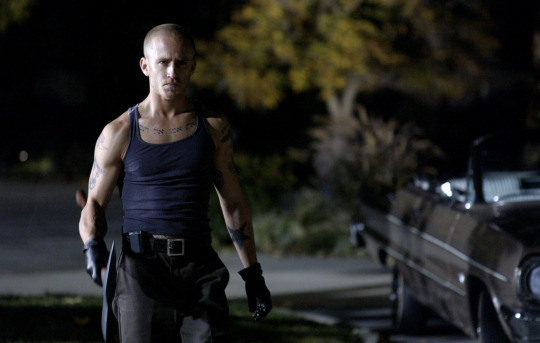
#alpha dog#alpha dog movie#nick cassavetes#john cassavetes#justin timberlake#emile hirsch#ben foster#amanda seyfried#olivia wilde#Nicholas Markowitz#Bruce Willis#Harry Dean Stanton#Oscilloscope Laboratories#O-Scope#musings#film writing
11 notes
·
View notes